June 13, 2021
Martha O'Kennon
.
Usually I try to give a sampling of the colors of the week's flowers. And so this week here you see: Baptisia, which is at the end of its beautiful blue blooming; one of the Fleabanes which photographs pure white - I had to run it through the colorizer 5 times in order to bring out its true whitish-purplish-pinkish; and the Purple Foxgloves we were expecting in the alcove next to the water faucet, which turned out to be a lovely shade of White. Maybe the white cast to the flowers this week was a response to the HEAT we were surprised with.
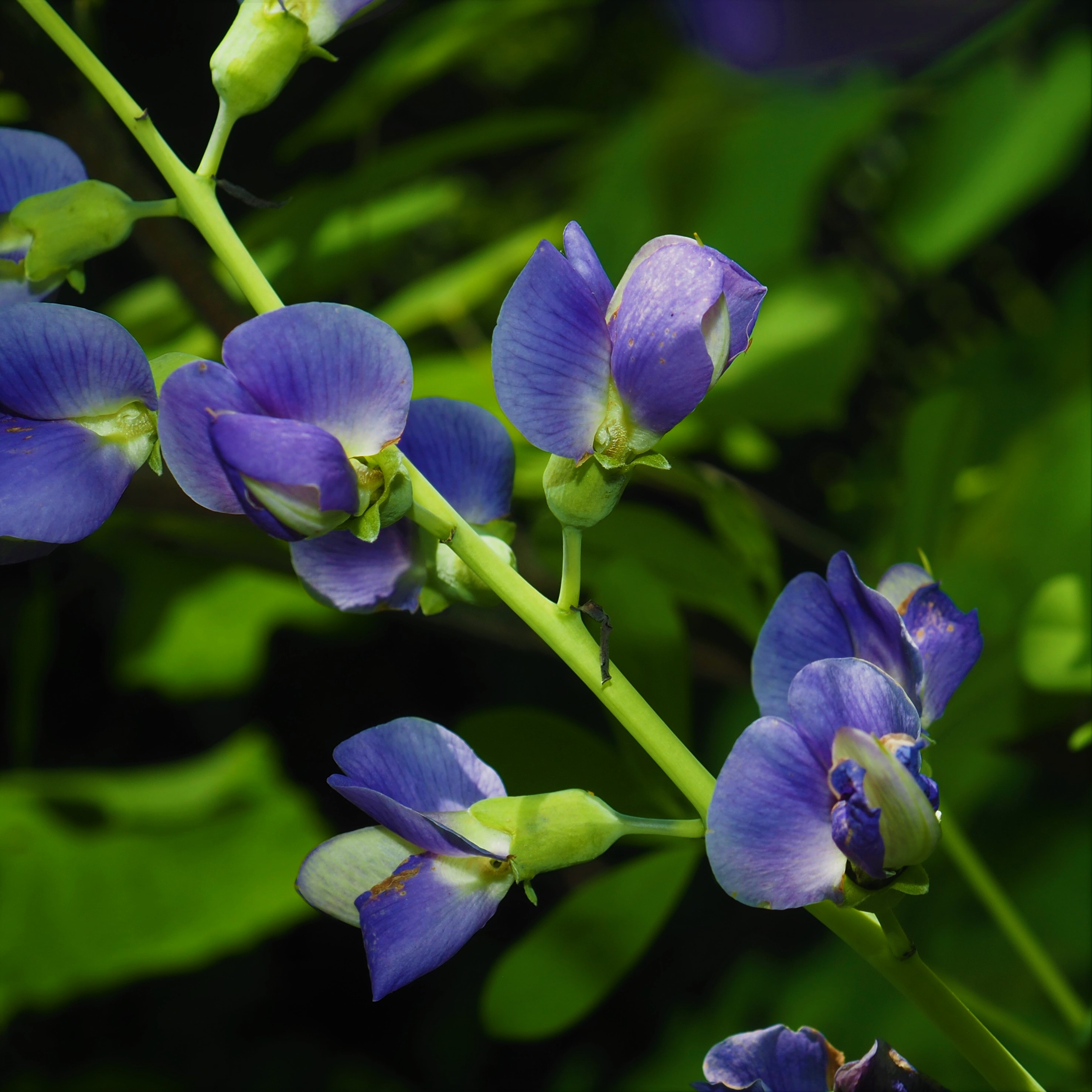
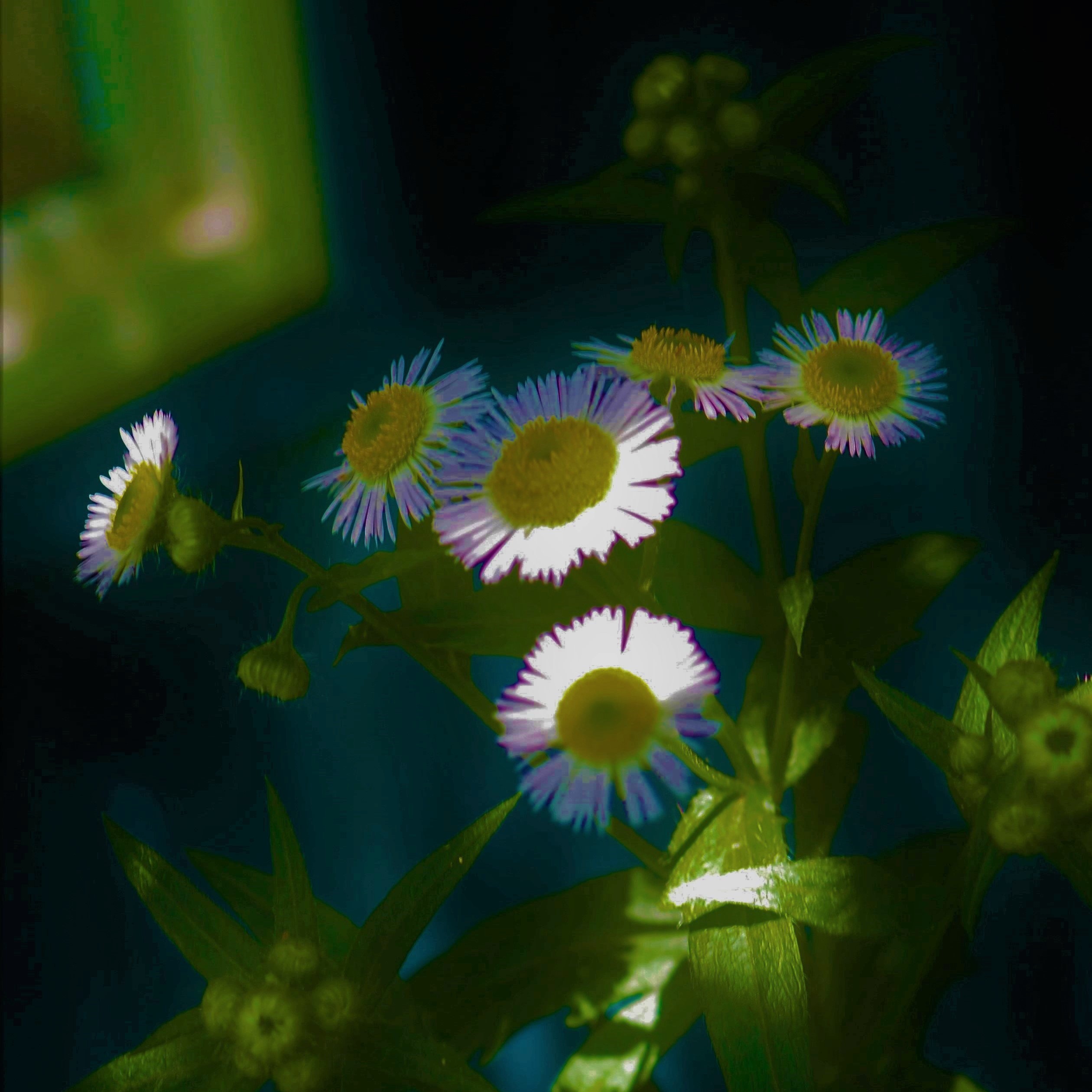
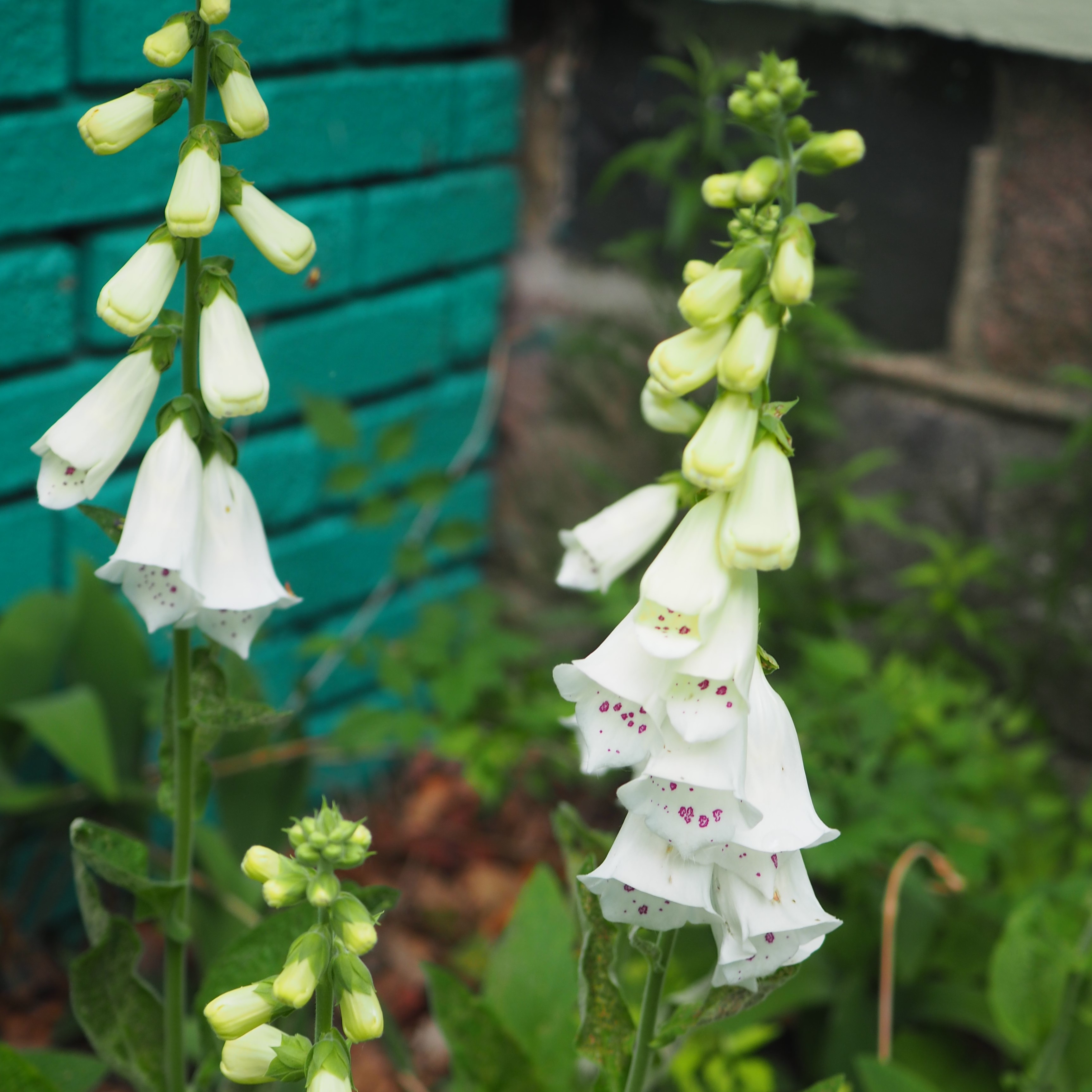
Remember that there is information in the name of the file for each image. You can see it by mousing over the image - look at the lower left of the screen. Or you can click on the image to get to the (usually) larger image. Then the info is displayed in the address line above. Sometimes the second click will actually display a different view of the original image.
The Ants have been going crazy lugging bits of food almost as large as they are themselves. I THINK their nests must be underneath the Shop, since they disappear down there. First is an Eastern Black Carpenter Ant with what looks like a slice of bacon; then an Odorous House Ant (Tapinoma sessile) with a HUGE fruit; and a Small Honey Ant.


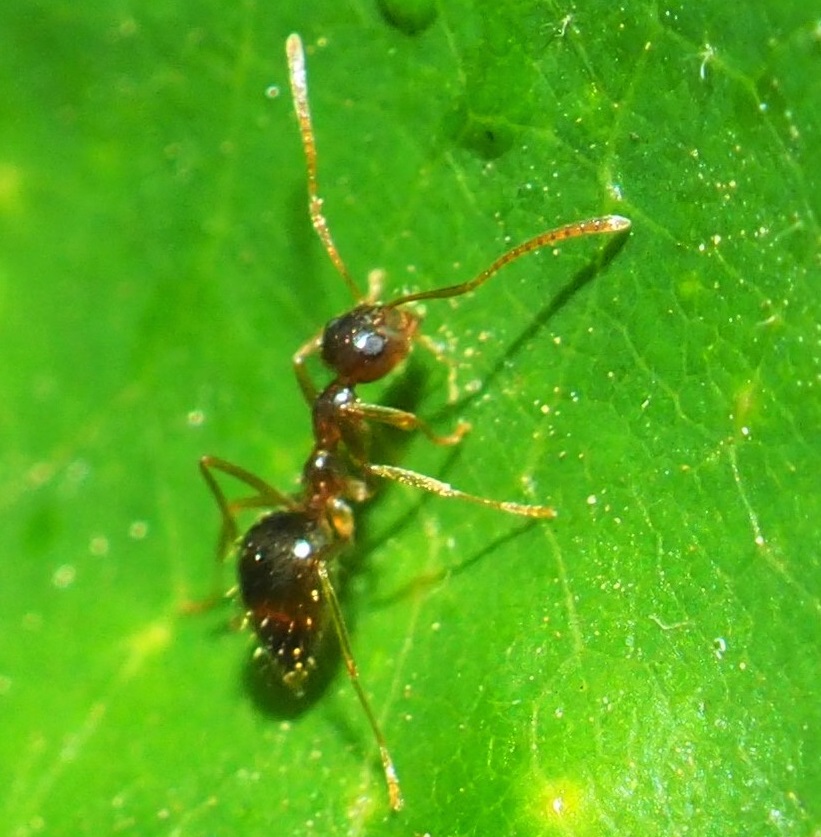
An Immigrant Pavement Ant was on the shop wall instead of between the pavement blocks out front. It must also have some turf under the shop. Second, we see a group of Ant nannies in the Redbud. Their heart-shaped gasters tell us they are some kind of Acrobat Ants. And last, here is one of the little Two-Mark Treehopper nymphs with an Ant sitting by it.
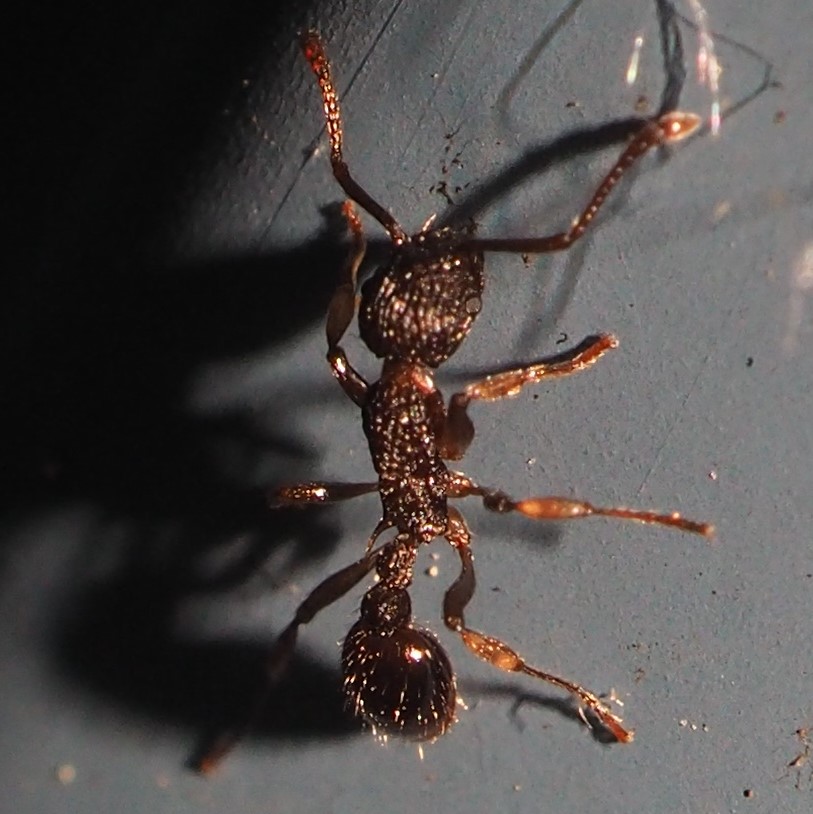

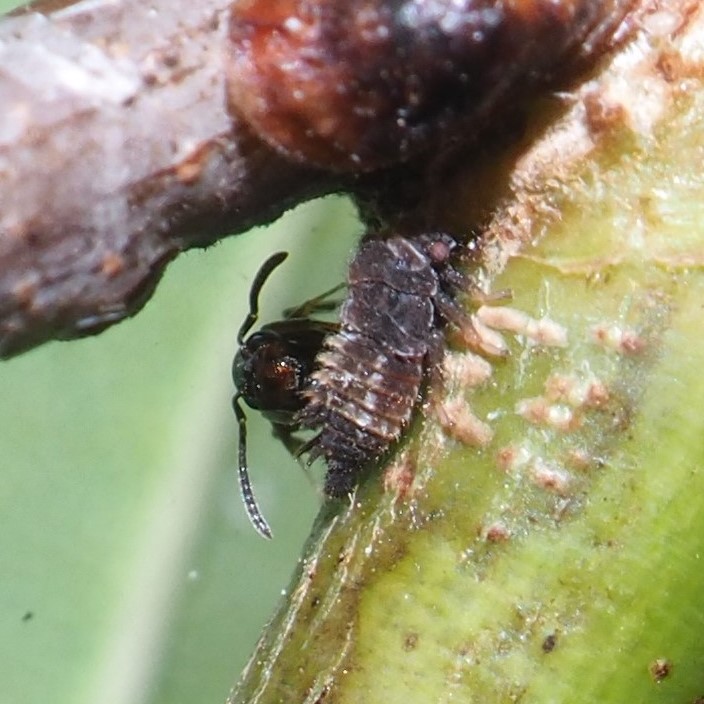
I thought this next character looked like a Fly, but it is in fact a fancy kind of Aphid. The next one is one I saw today. It doesn't look exactly like the first one, but maybe they are related.

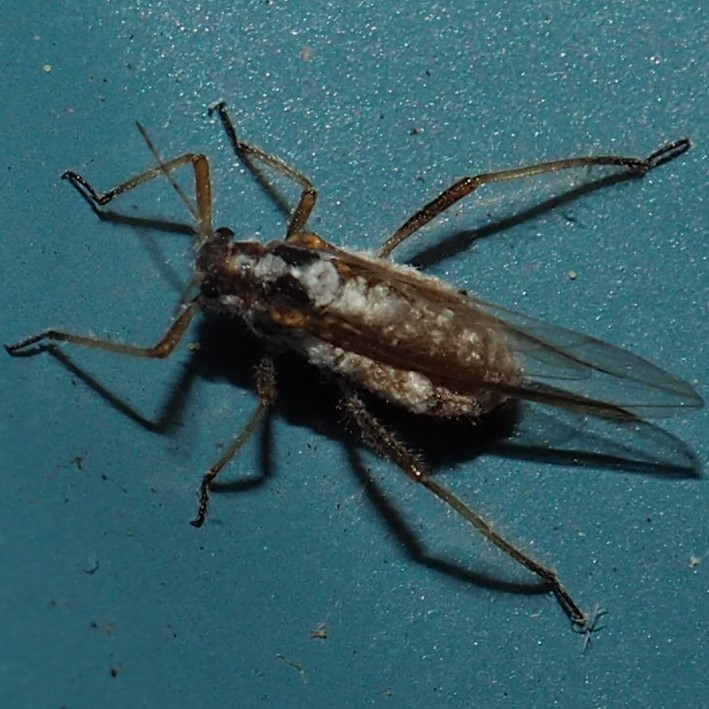
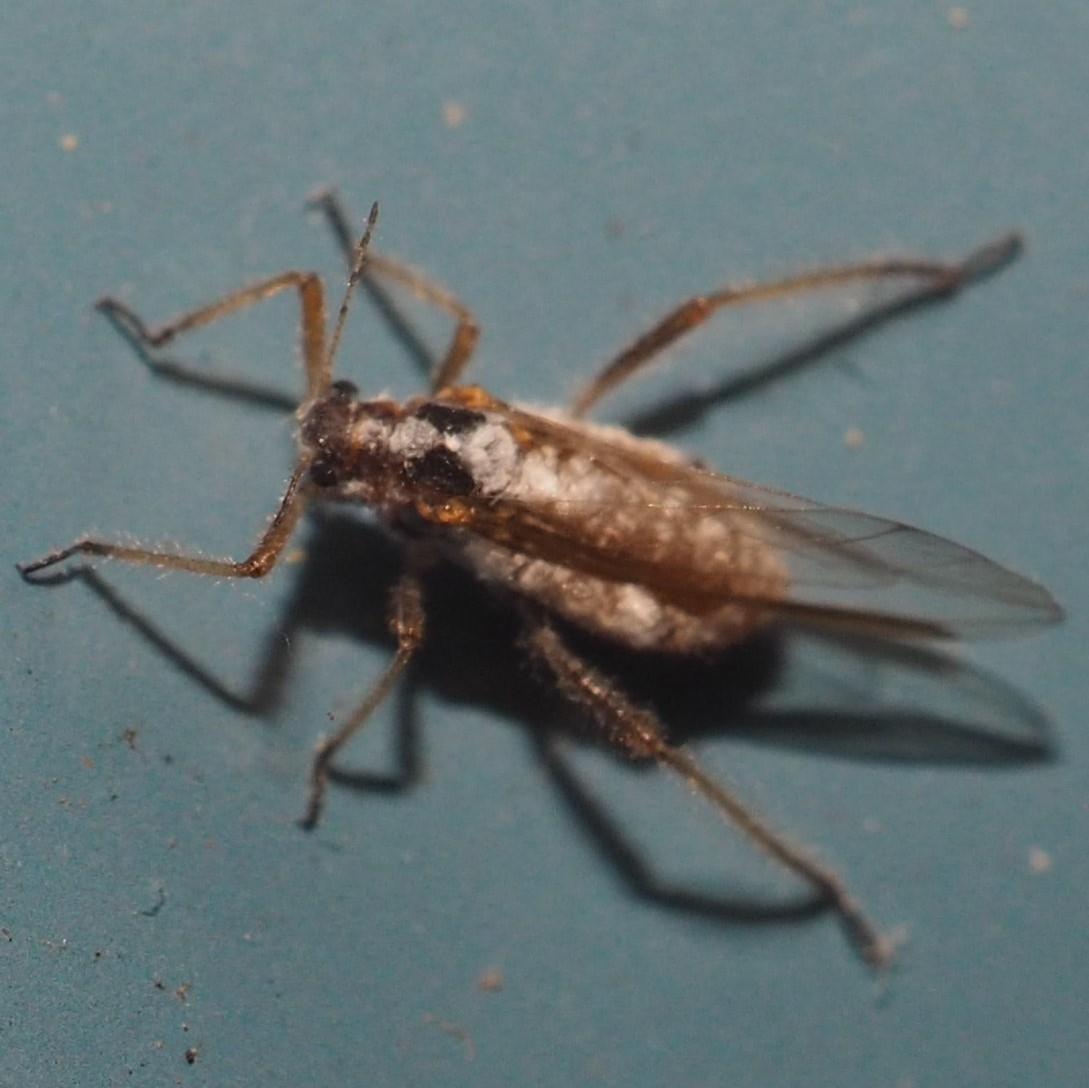
The Barklice are doing very well for themselves. Although I've devoted a lot of time to looking for nymphs
before the adults appear, they seem to have been successful at growing out of human eyesight. We have to
remember that these little creatures are very tiny, some about a half millimeter long. I can only spot them in a large group, which usually looks like a little round whitish patch about a millimeter in diameter, and usually on an edge of a siding panel. The indentation may give them some protection. Here is one of the patches we've been following for several months on the left edge of the fourth panel from the north corner on the East Wall, on March 30 (about the earliest record we have of this group) and on June 10. It probably had overwintered in this form.
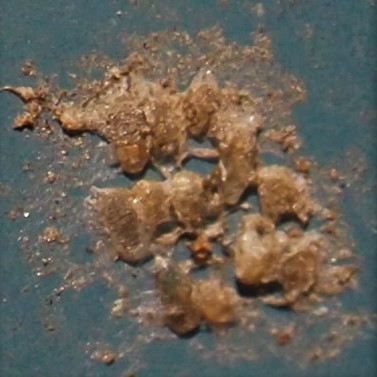

On the other hand, On the East panel 9 from North, we have been observing this patch of eggs since April 23 at least. Second is our eggs the reddish color they suddenly turned on June 6. This color change should have tipped me off that something was about to happen (and in hindsight, a couple of them seem to have been coming free), but the day after, by the time I got back to them, all but one had hatched and disappeared! So I've been watching this ONE egg for a couple of days and must go out now to see if it had hatched too. I'm baaack. The remaining egg looks alive to me. It may be wishful thinking but I will be keeping an eye out every few hours till it hatches or otherwise disappears. Cross your fingers!
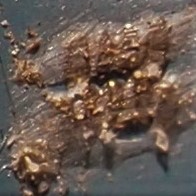
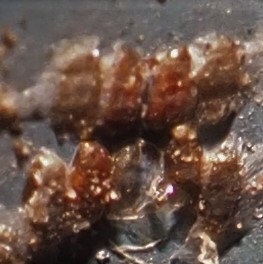
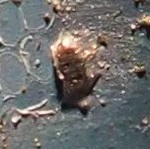

Big news. A few days ago, Scott Shreve posted an observation of a Polypsocus corruptus adult! A few hours later, not to be outdone, I began to see some on the North Wall. Nary a nymph had presaged this epiphany. Oh my, that was code switching, wasn't it? Last year we had had weeks of watching nymphs as they morphed to adults. Now there are adult P. corruptus all over the North Wall, one or two per panel. I believe that the eye color tells us male from female: black for boys, red for girls. Scott pointed out that the clarity of the wing patches also gives us clues. The females tend to have clearer clear patches, as in numbers 2 and 3, especially at the ends of the wings; while the males' clearish patches are much more subtle. What do you think?
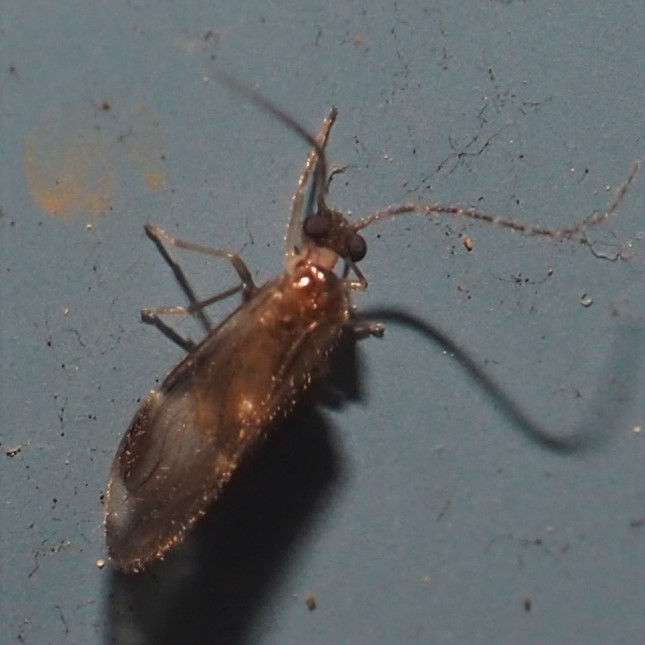
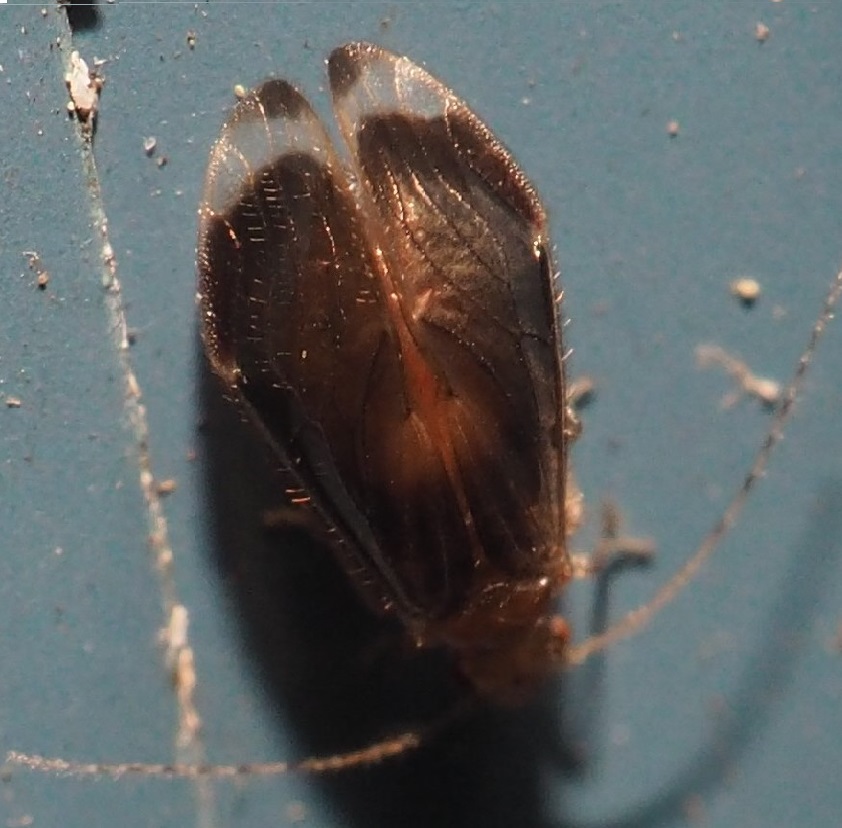
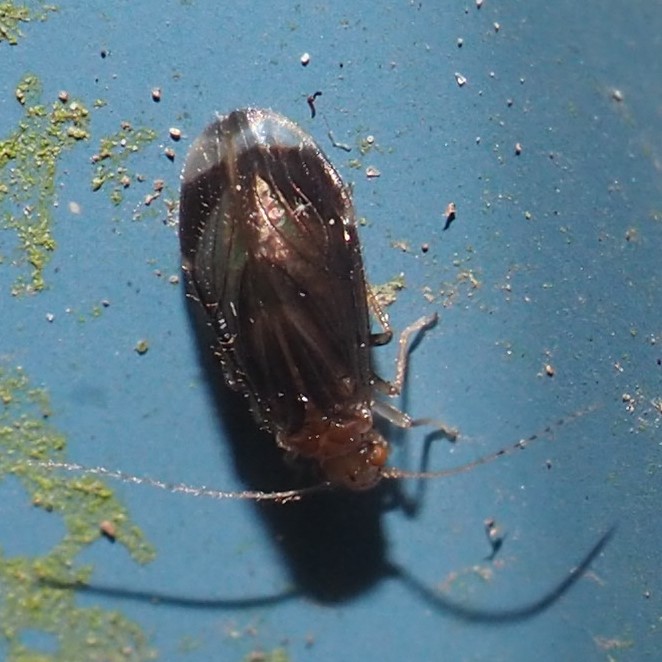
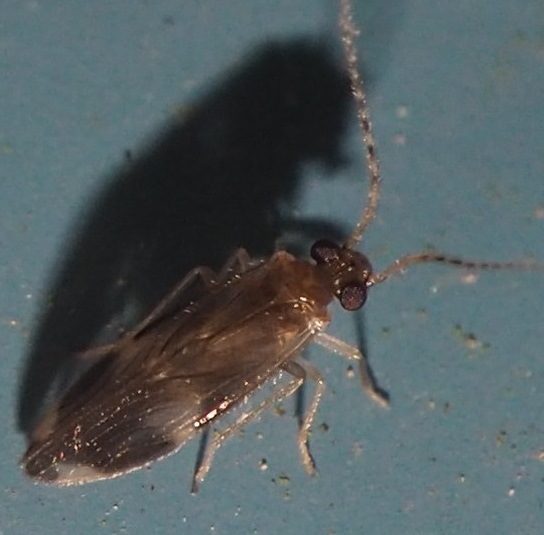
Those new Barklouse nymphs that we saw last week on North panel 10 (picture 1) have quickly spread out into the community. At first I was able to see about a dozen of them, then groups of 6 down to 2. Then they began to appear one by one on panels 9, 8, and now maybe 11. They are so very small (maybe a half millimeter), that it has not been easy to track them, but I think they are probably going to grow and show up more. Picture 3 in particular shows how much more refined their features are now.
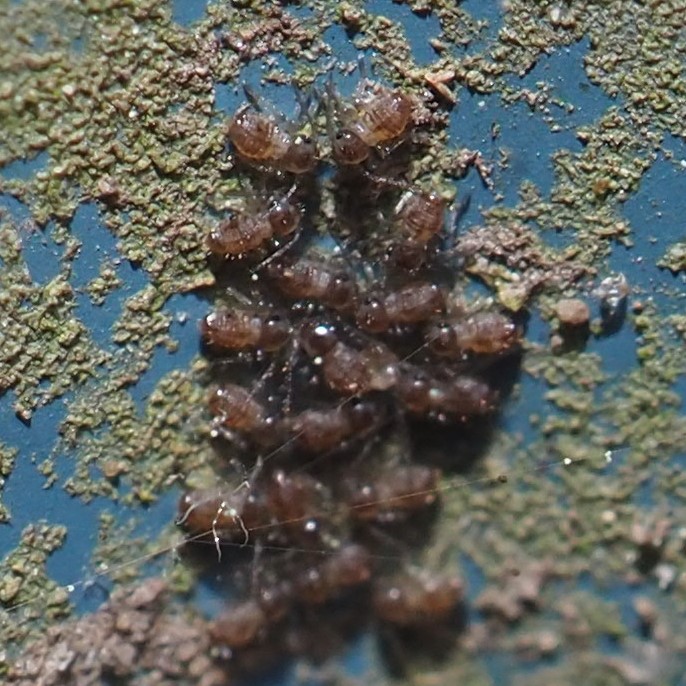
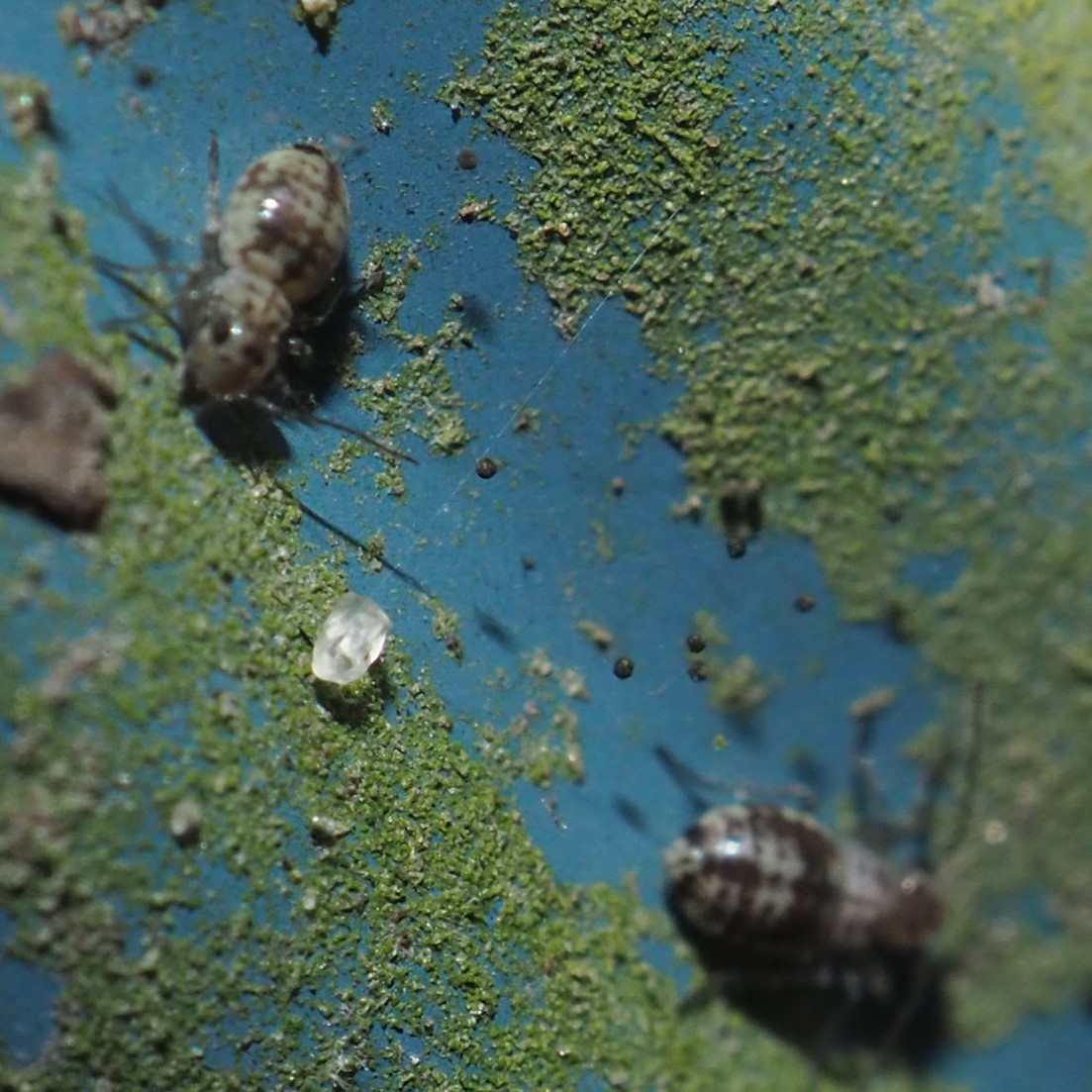

Last week we saw a few Barklice that I'm pretty sure were Valenzuela flavidus, as in picture 1 here from June 7. The others this week have not been quite so clearly V. flavidus and maybe not even Valenzuela.
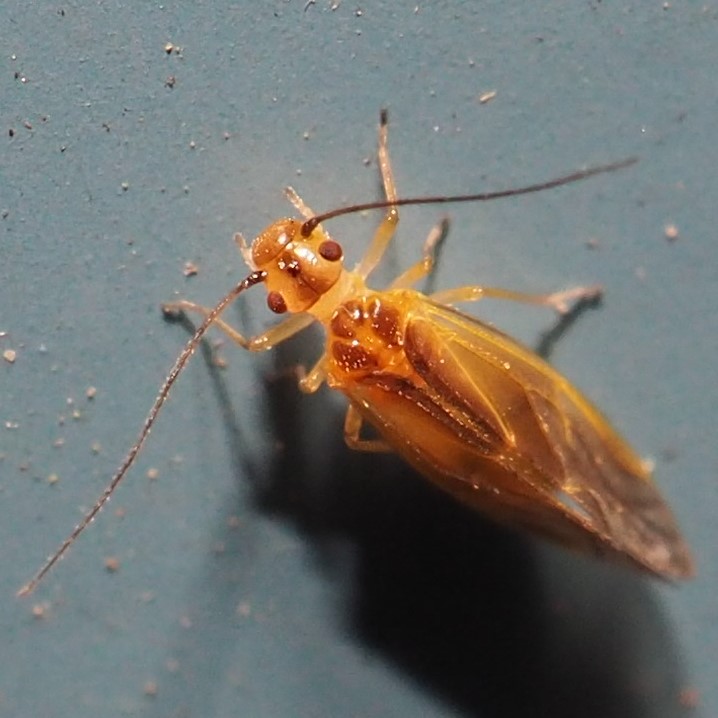
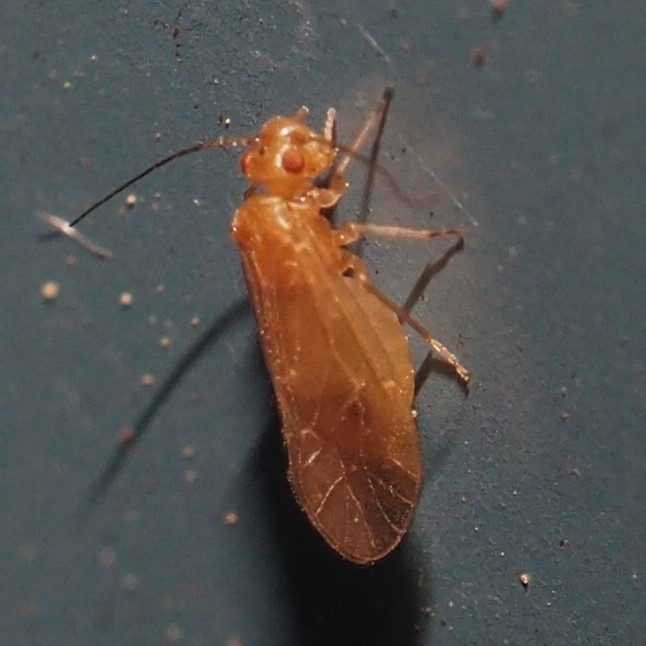
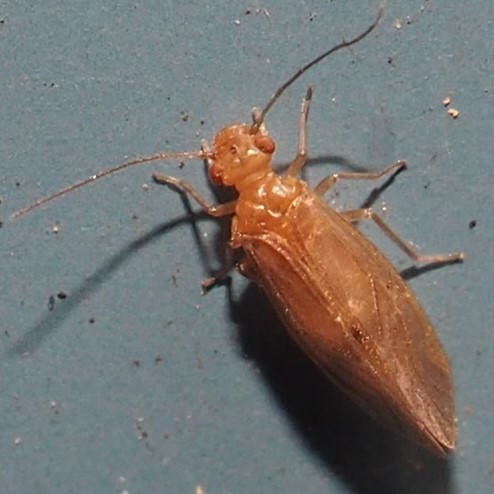
I'm pretty sure the ones I've been identifying as Ectopsocus meridionalis are that.
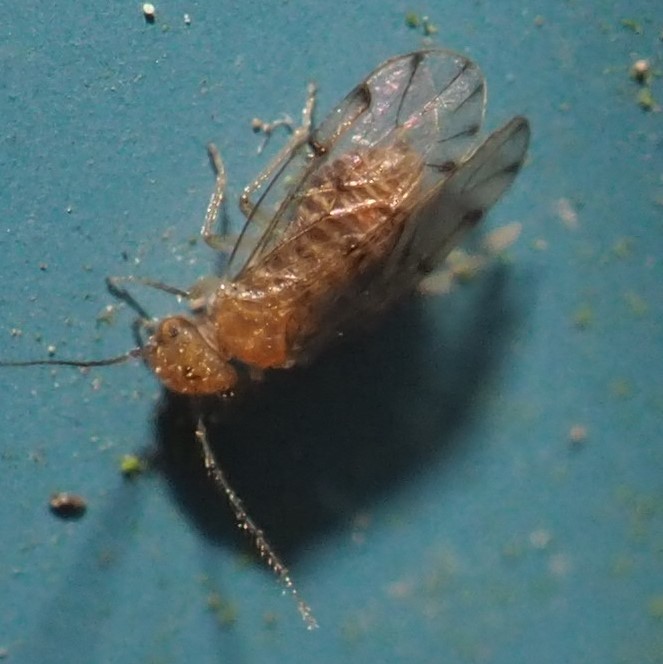
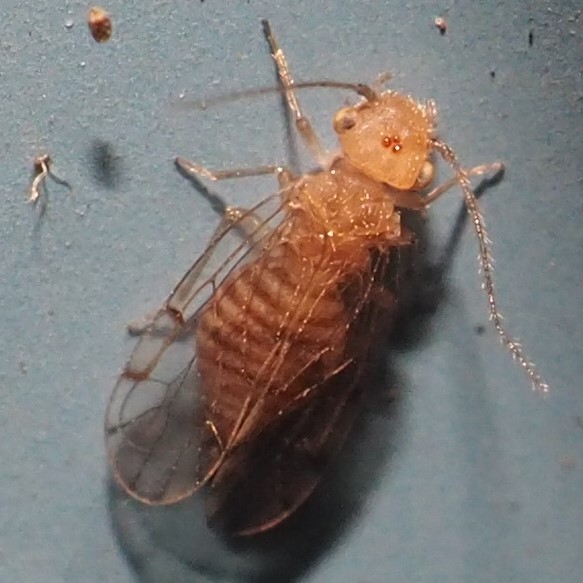

They have been showing up all over the South and East Walls. Some of them seem to be quietly laying little clutches of eggs.
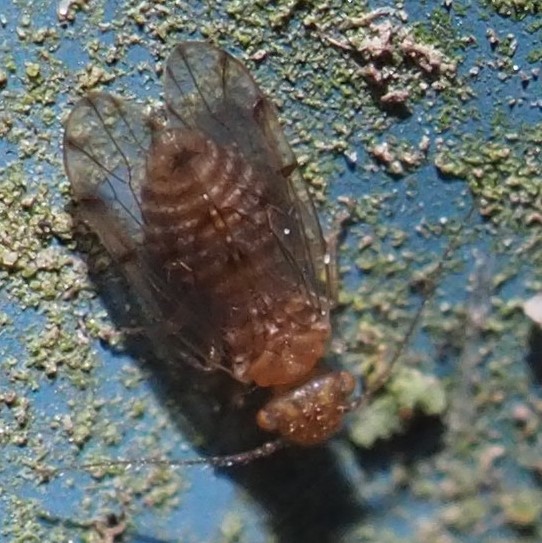

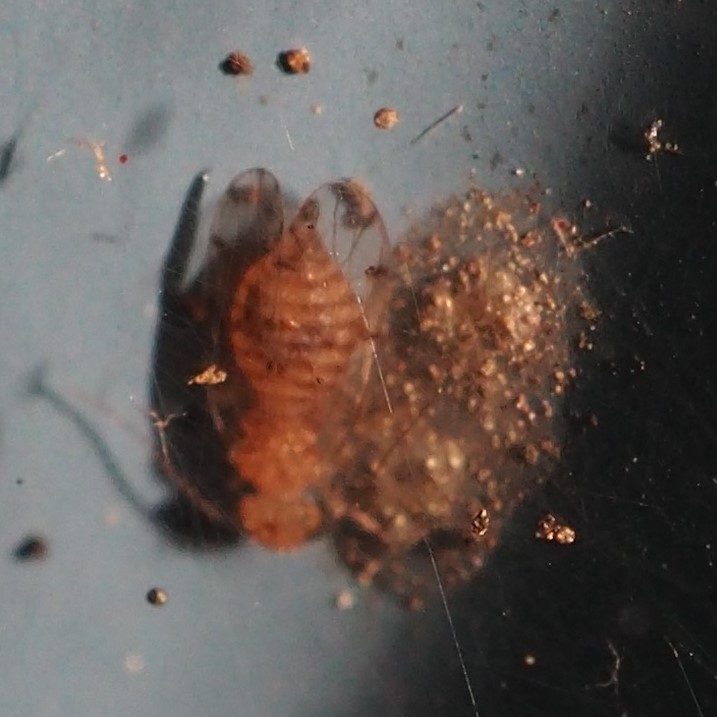
The Bees weren't so visible as usual, and fewer in kind too. Here is an atrocious picture of a tiny one in the Goutweed. But one of the Bees that comes back each year about this time is the Nomad Bee, and that's what I think this next one is. I expected the Baptisia would bring a few Bumble Bees, but haven't seen one. We may have to wait till the Goldenrod brings in the Pollinators!
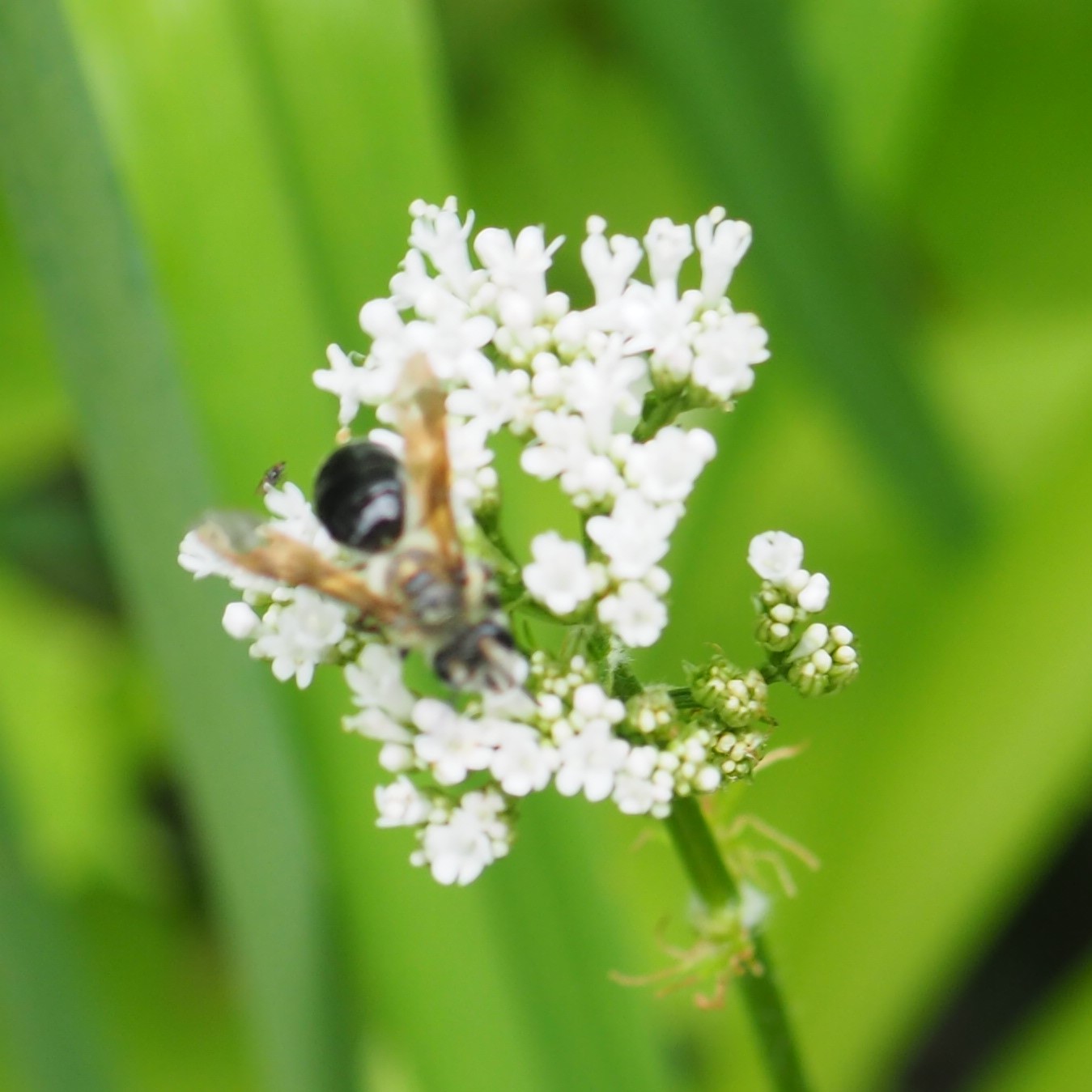

But the Beetles more than made up for the Bees, in color, number and another interesting story. Here is a Carpet Beetle. These are very little Beetles, less than a millimeter long. We also had a couple of kinds of Click Beetles. One is this blackish one, the other a more colorful one, Horistonotus curiatus, that is usually found a bit more east of here.
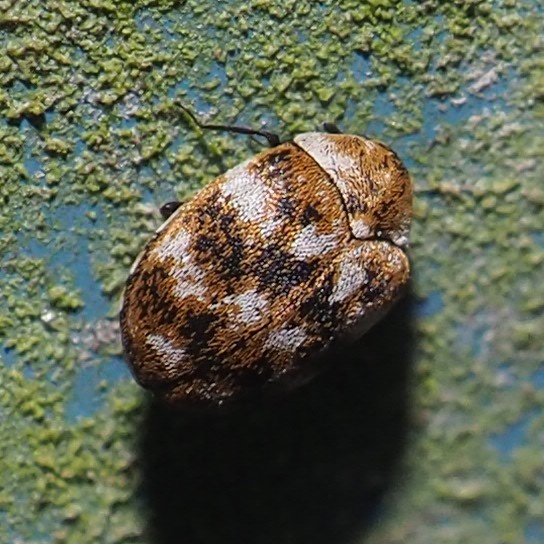
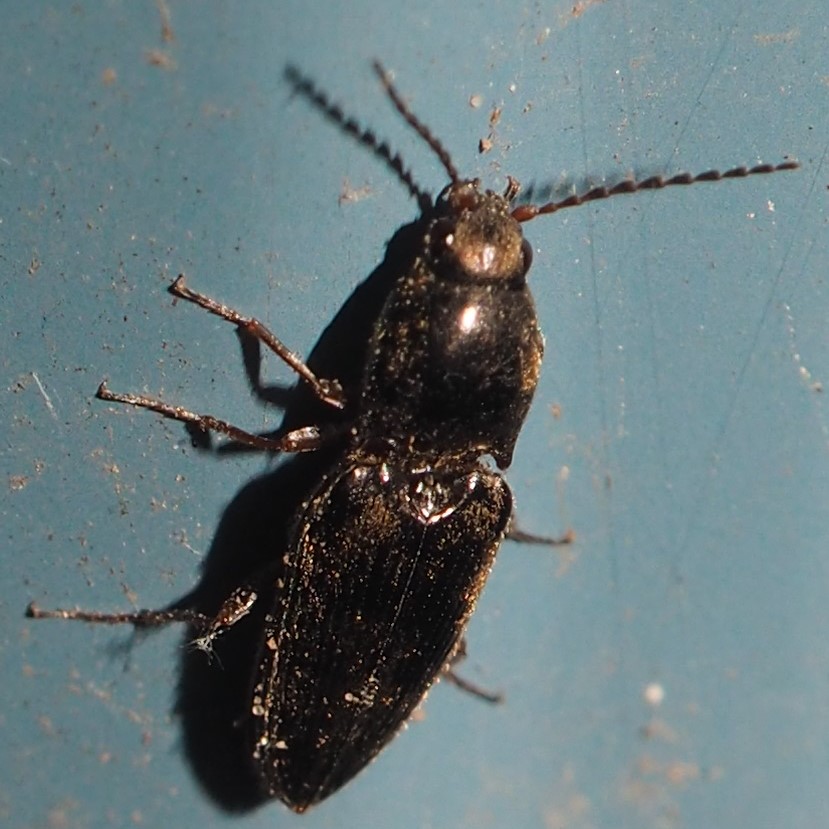

There were a number of Beetles that I usually call Flea Beetles. They are small and roundish though slightly elongated. They tend to come in pretty colors.
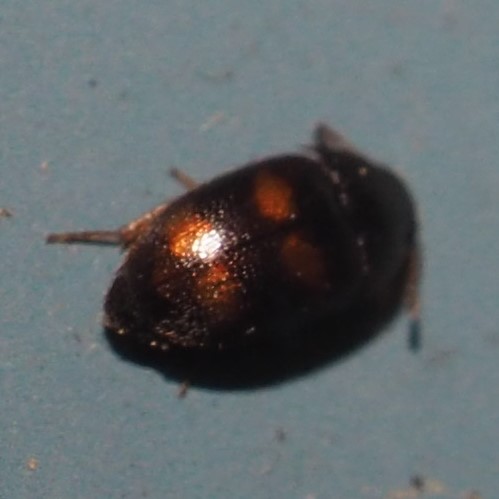

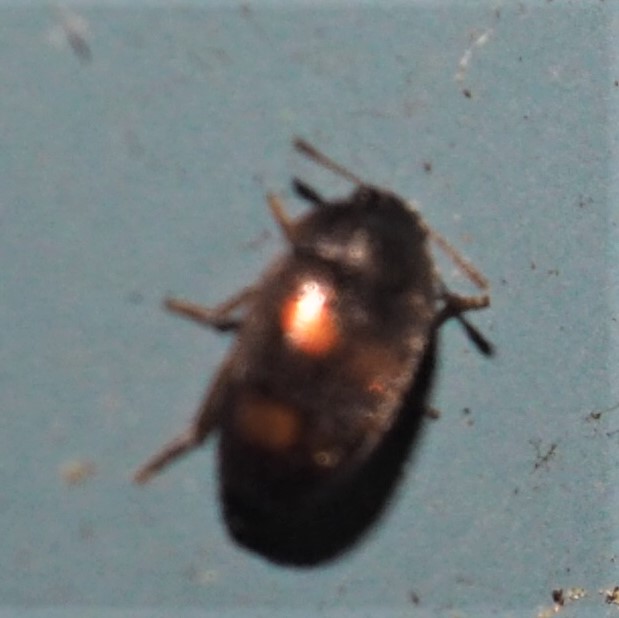
There were actually 2 or 3 of that last little Beetle.
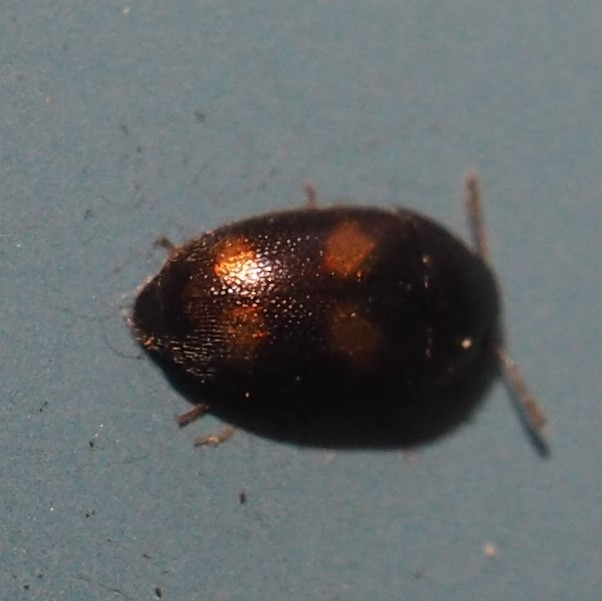
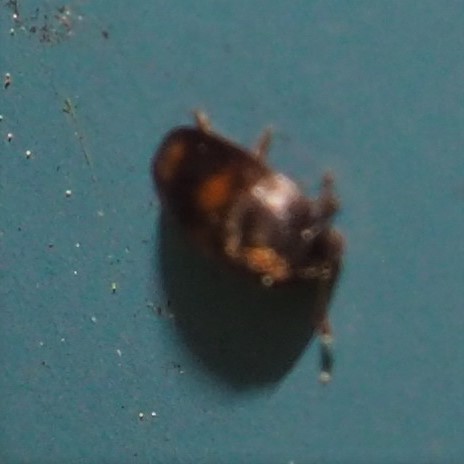
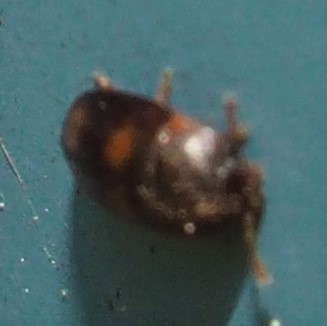
At first I thought the following were two different Beetles, because from the side that shows the "red tears" you can't see the two red spots on its bum.
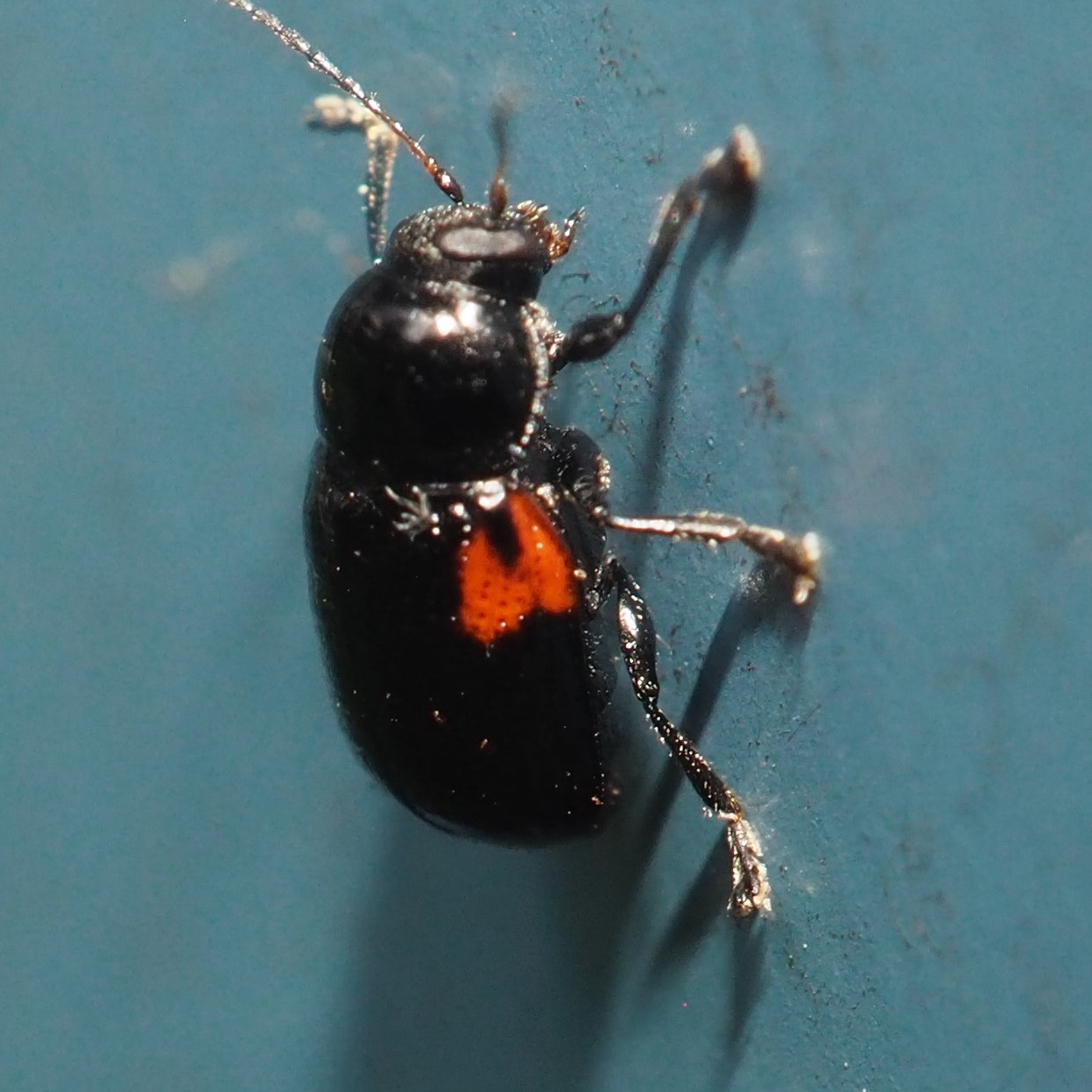
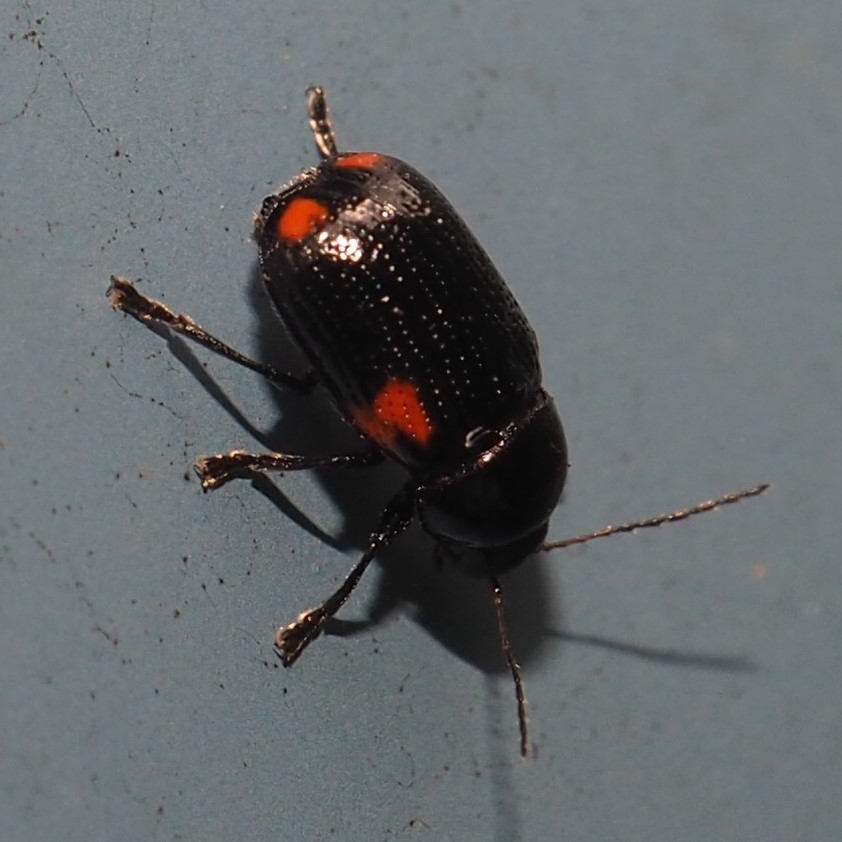
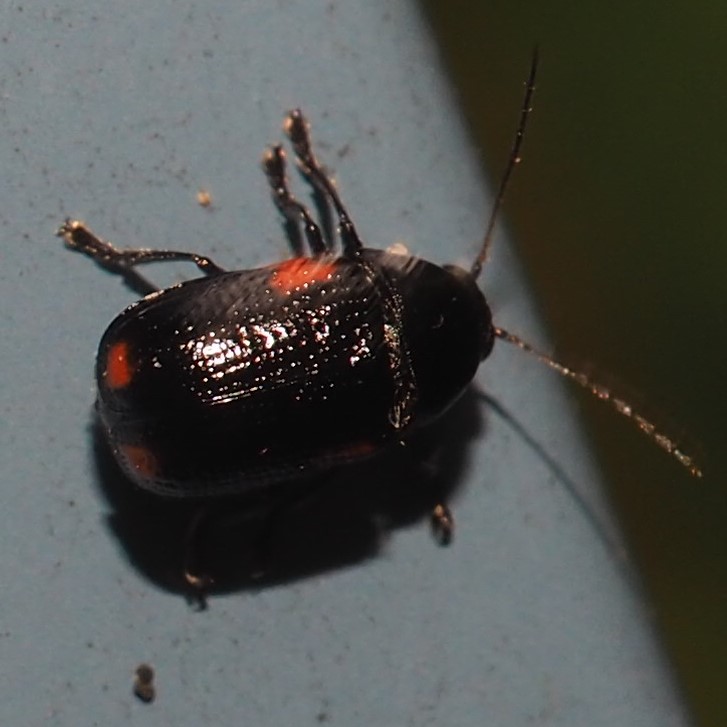
This seems to be a repeat of last week's Hairy Spider Weevil.

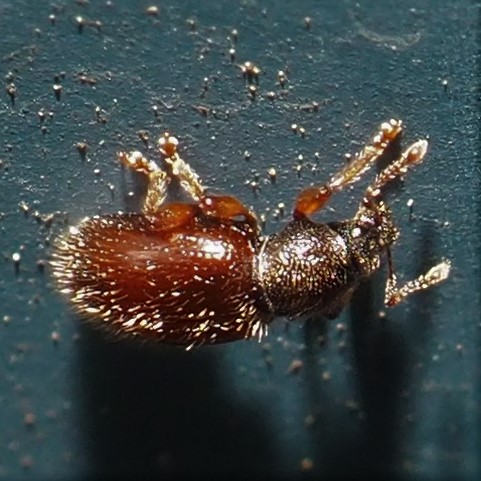
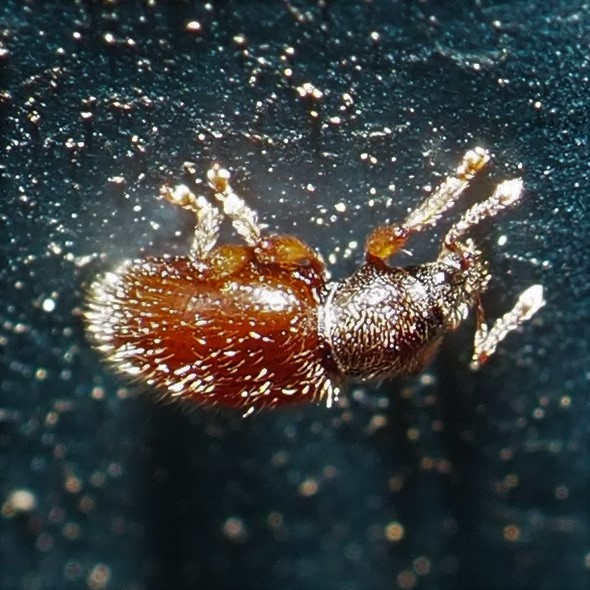
Even though the Ceutorhynchus Weevils are still busy mating in the remains of the Dame's Rocket, an odd one flies to the Shop too. So does the Green Immigrant Leaf Weevil.
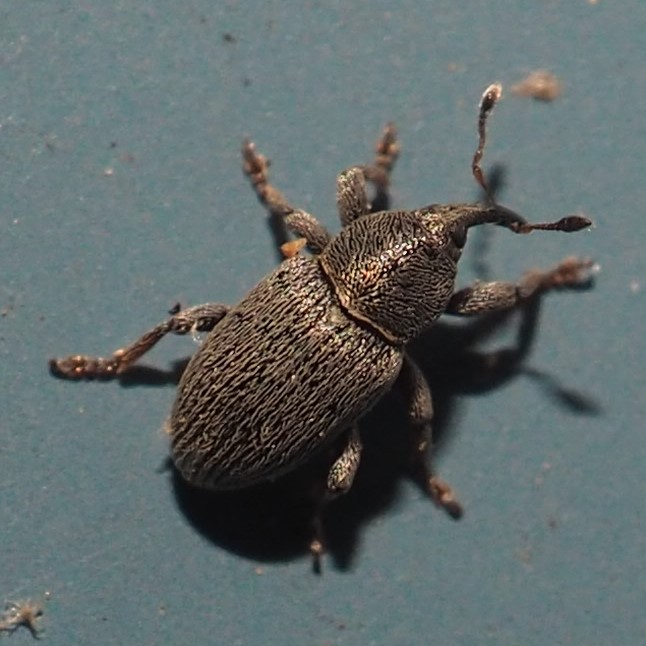
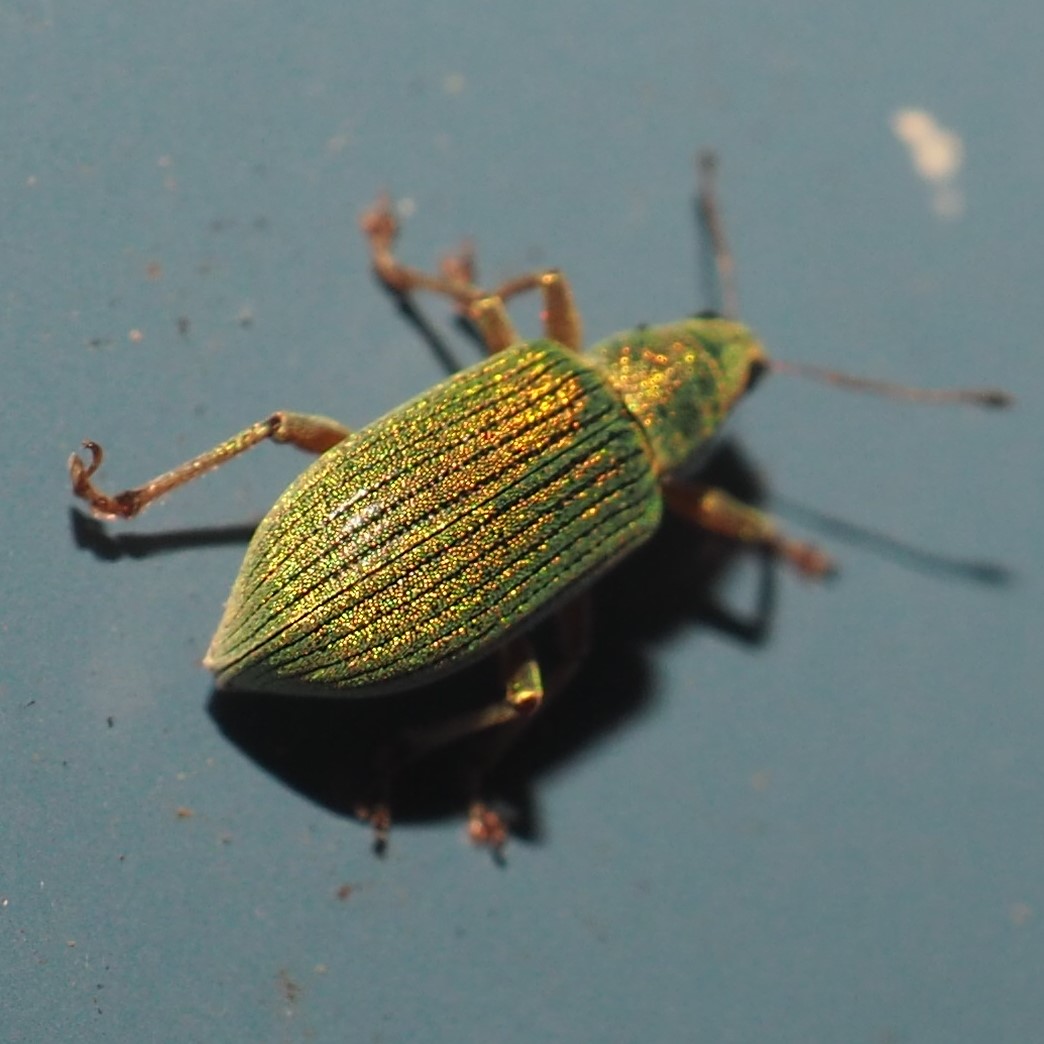
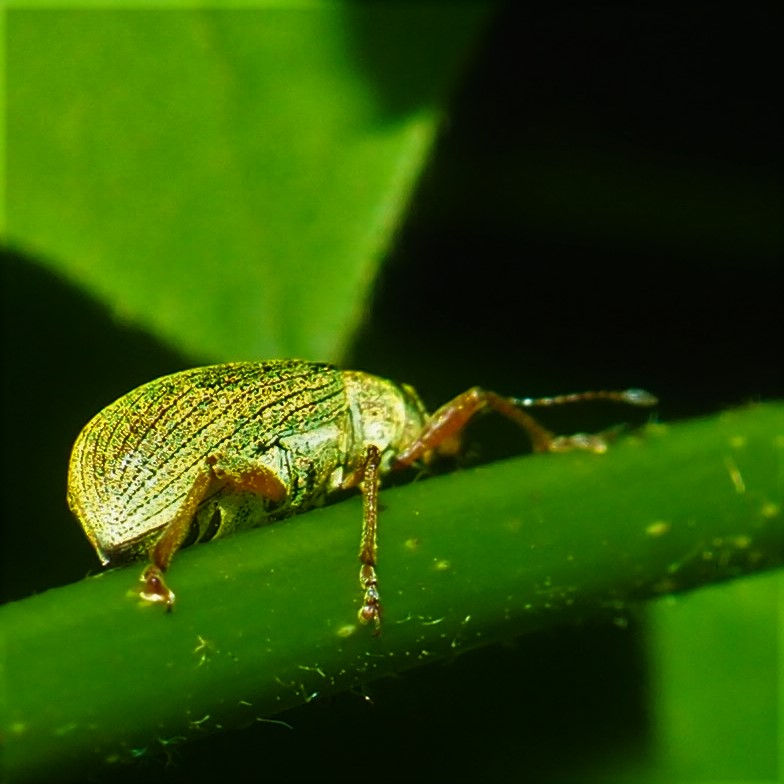
While we're talking about the Dame's Rocket's relationship with C. inaffectatus, let's go to another interesting story that emerged this week. I've submitted over the past few years a couple of Beetles in the Phyllotreta genus, and this time Boris Buüche surprised me again. He mentioned that there is discussion in the current literature about the relationship of this little beetle, Phyllotreta ochripes, with the ever-present Garlic Mustard, which everyone wants to pull up by the roots, as it is a pesky little plant. In the past, I have had to do this too because of the amount of the plant that was edging out some other plants. But after he told me this, I went outside to my patch and found only one very sickly plant. So I photographed the plant and the affected leaves and sent them in. Boris said that some of the holes did look like the damage P. ochripes was fond of doing. I talked to Jason Raddatz at Albion's Whitehouse Nature Center about this and I believe he is going to put out a call to people who would like to look for evidence of Beetle destruction of Garlic Mustard. What fun! If you have any evidence, like the presence of these P. ochripes or their larvae in your Garlic Mustard, let me know. OK?
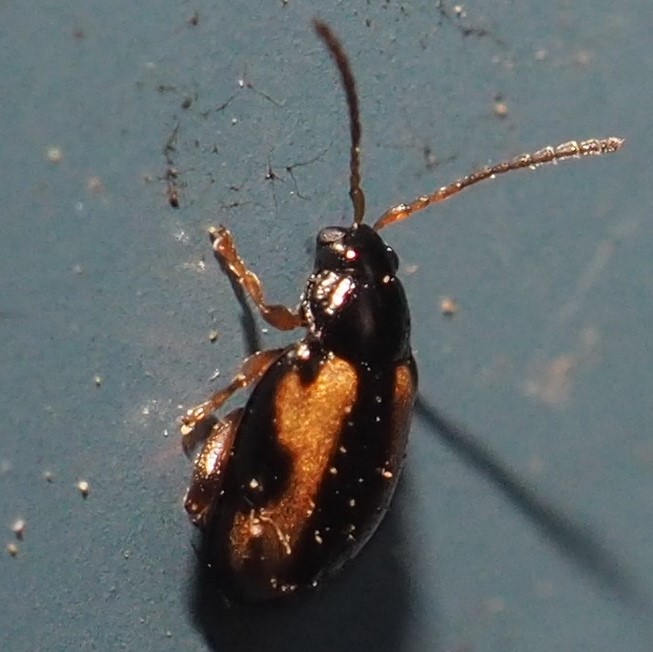
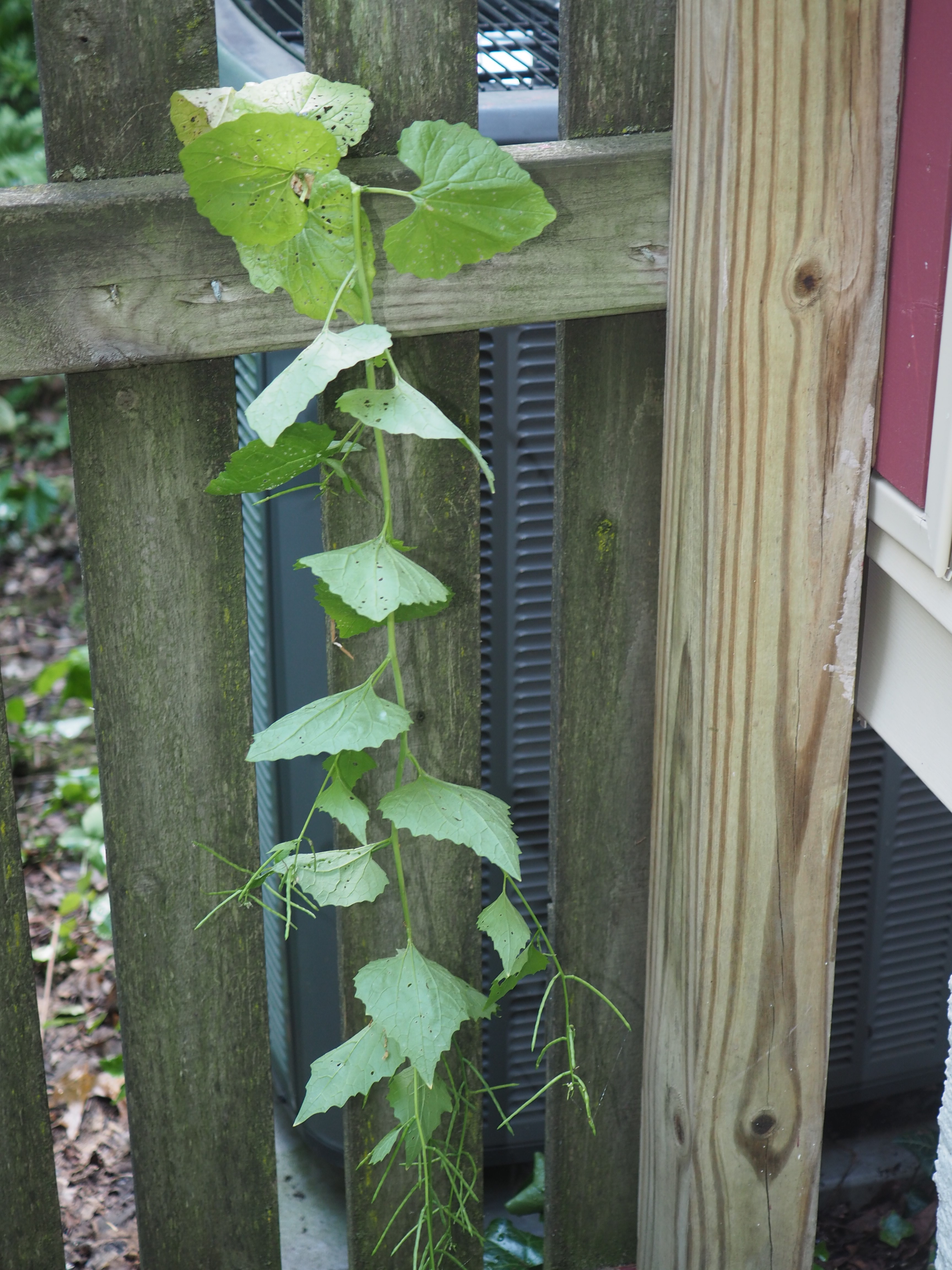
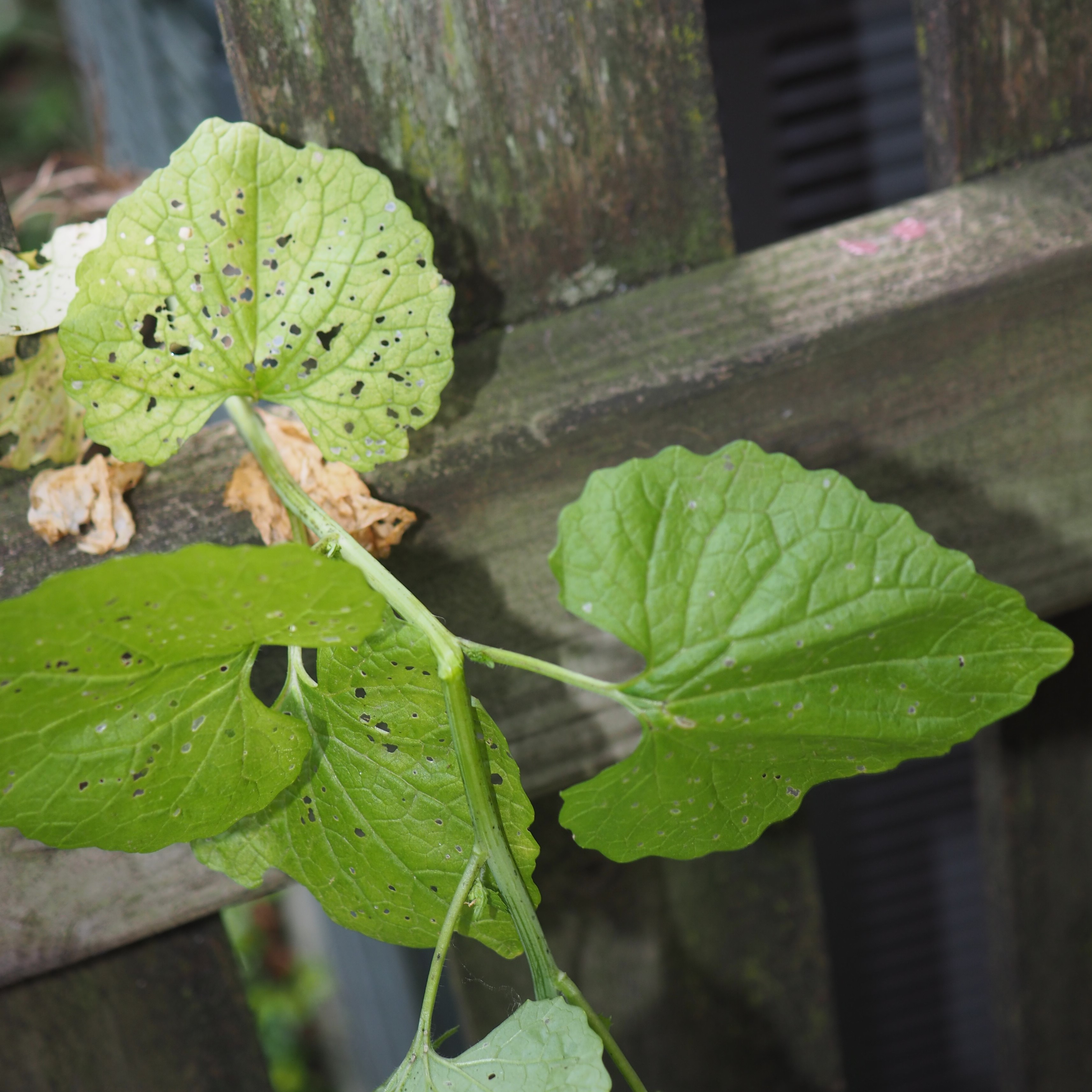
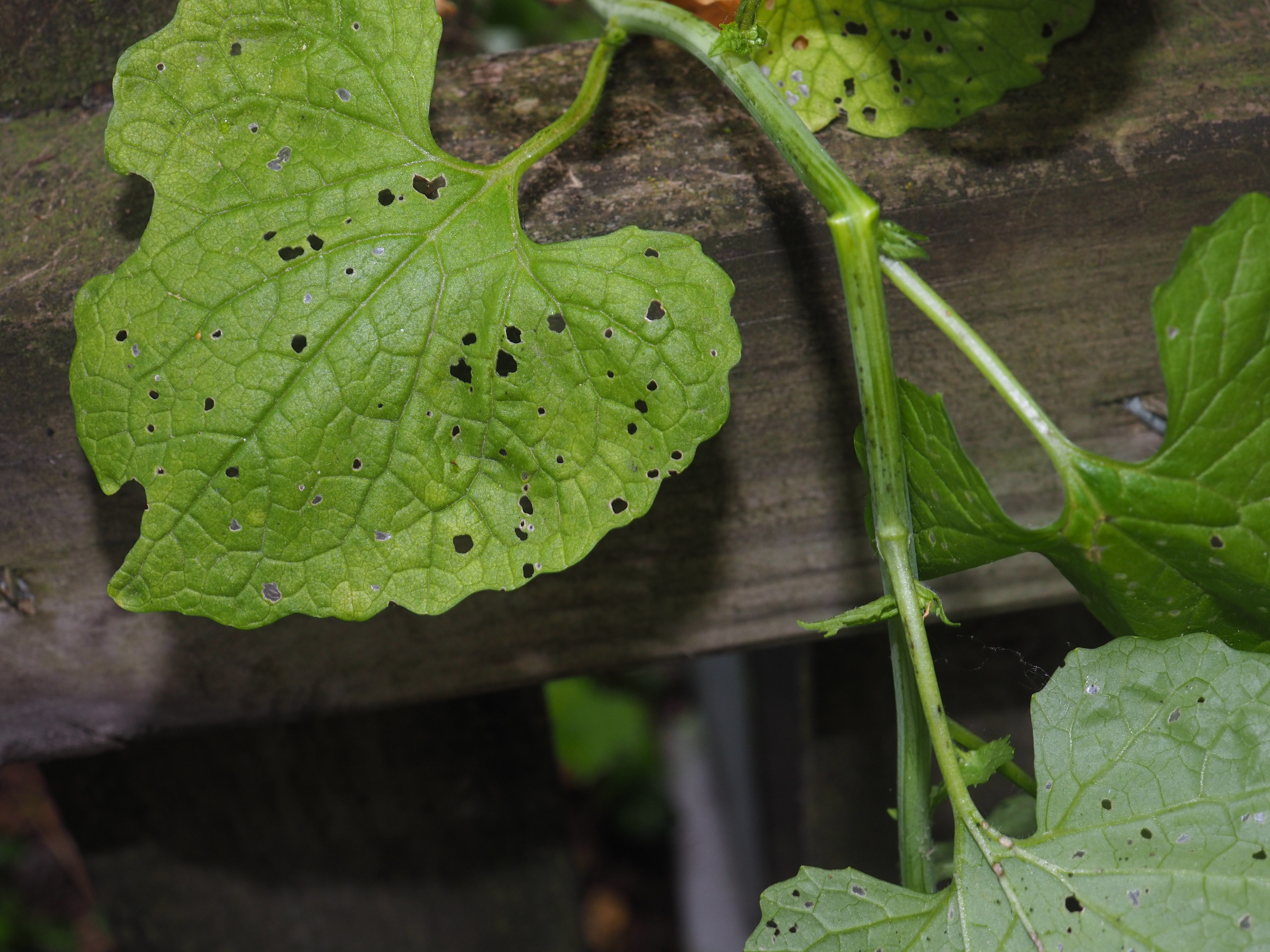
The first Tumbling Flower Beetle has just shown up on the Wall. This Second Beetle was lying on the ground next to the bottom of the Wall. The Third seems like something someone in fabric design would have drawn!
.jpg)
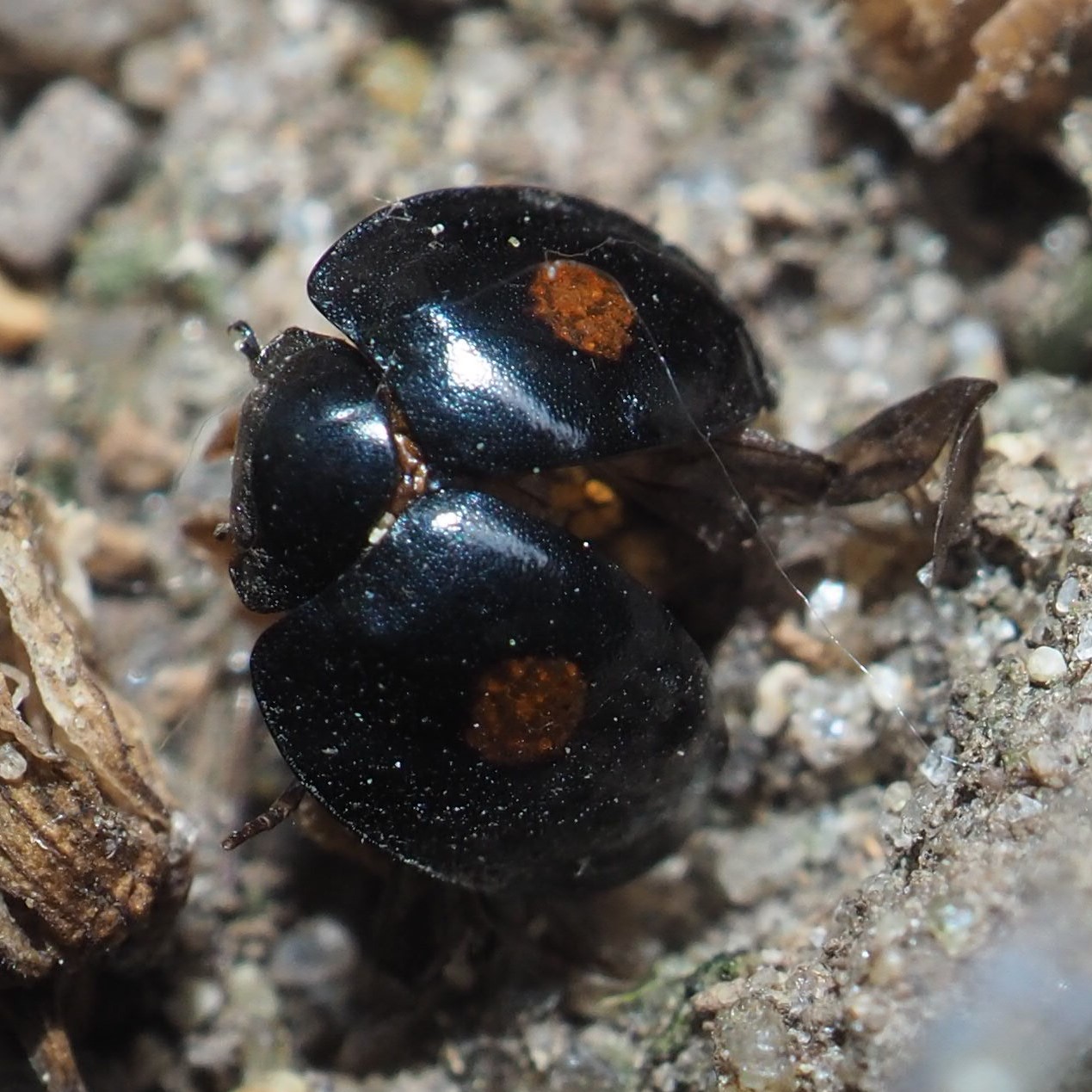
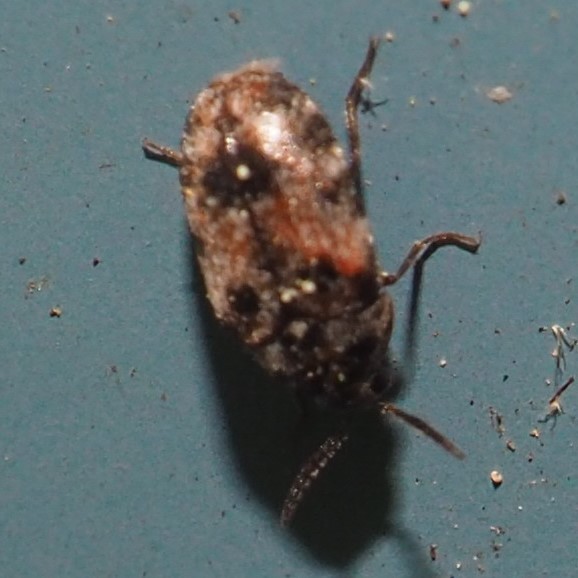
This big black Weevil is the Strawberry Root Weevil. And the last in this lot is that Leaf Miner Beetle, Sumitrosis inaequalis. It's funny, but we saw another S. inaequalis on May 21, and it looked to me very different! There are many variations in the dark and light patterns, aren't there?
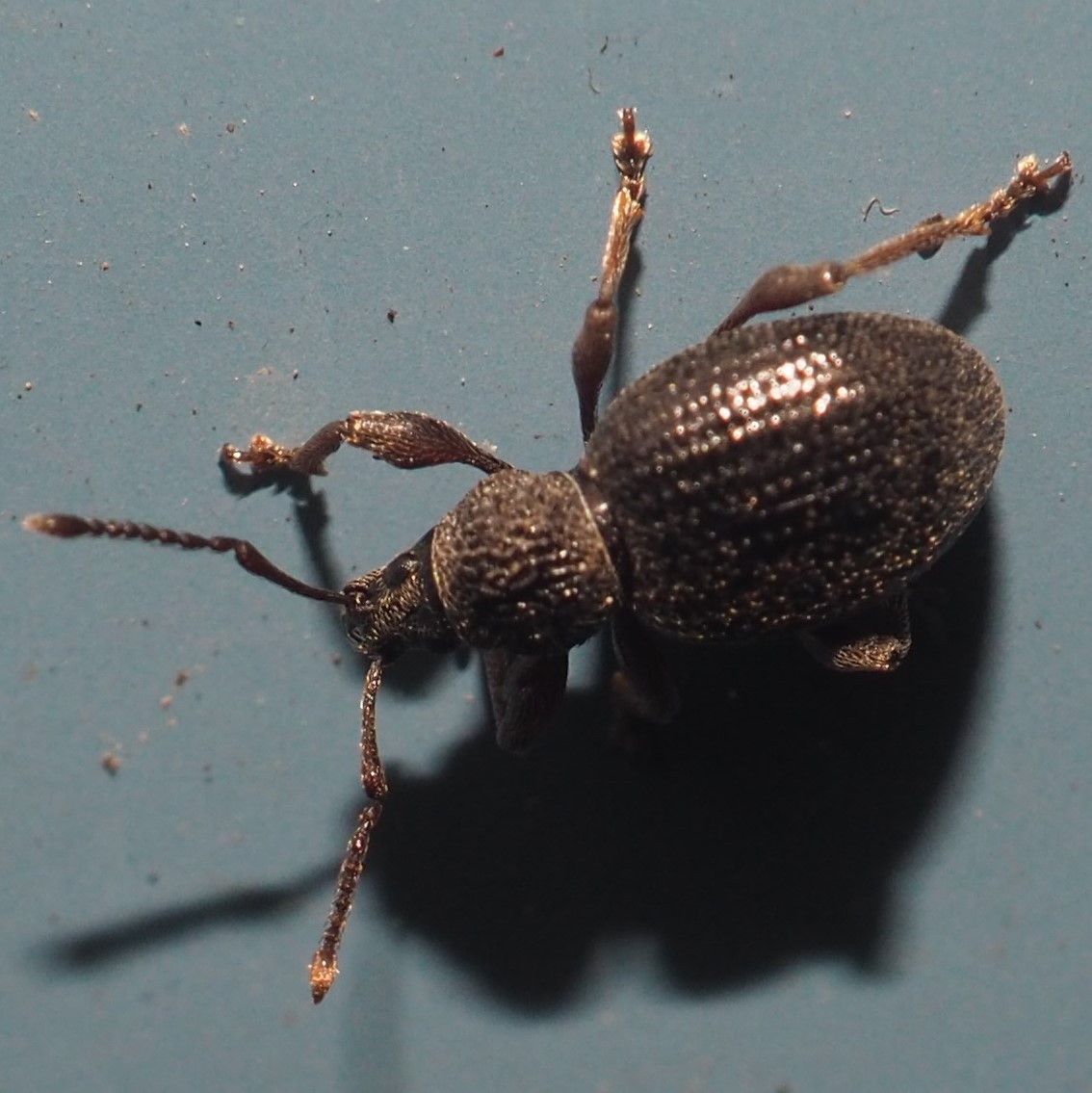
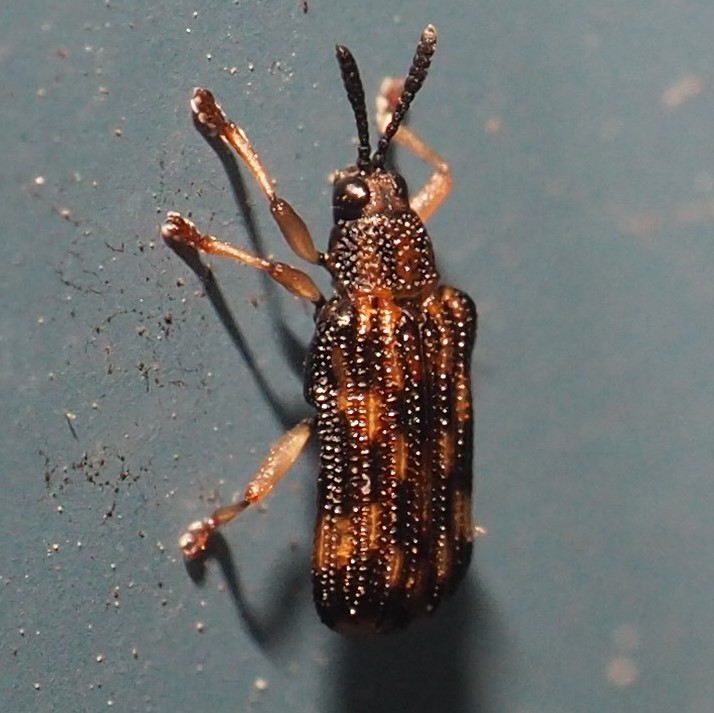
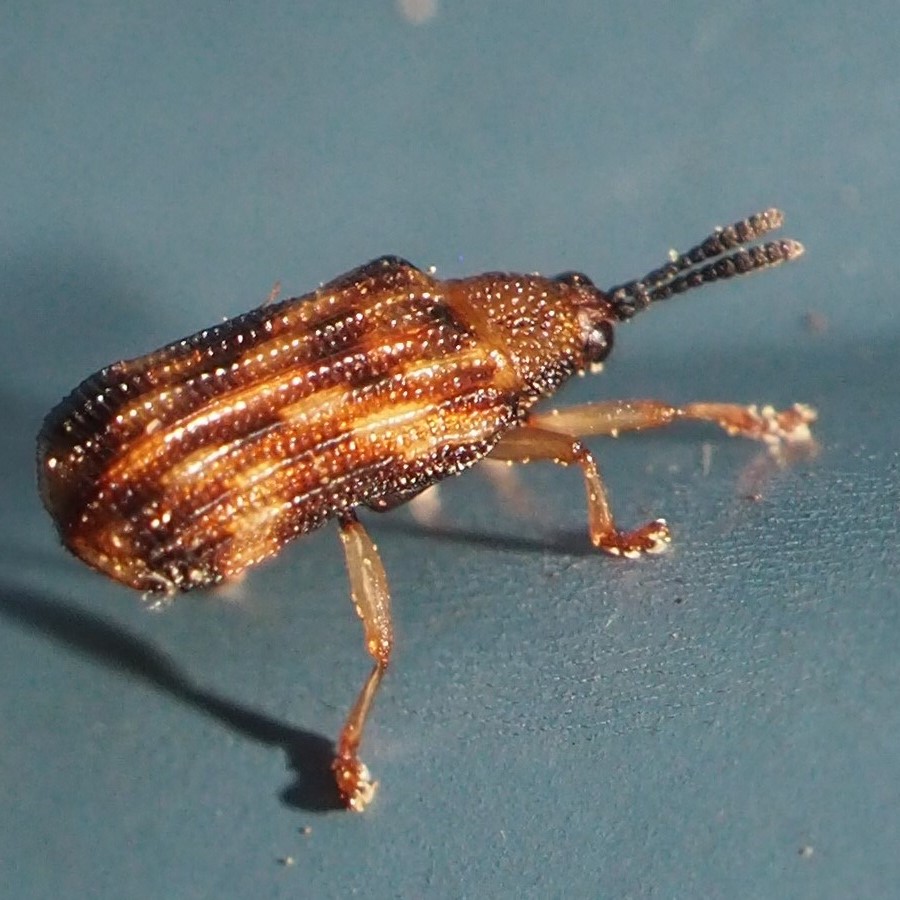
I think this is the longest Beetle section in any Blog so far! (Not counting, just a hunch....) Meanwhile, here are a couple more. First is another Weevil, and totally unknown by me. Next, another submission from my friend Deb's sister Pam, who took this possible Stag Beetle picture in Tennessee. Third May be a real Beetle but I took this through a bunch of plant material. :-) Now THAT's the end of the beetles for this week unless I see an irresistible one tomorrow!

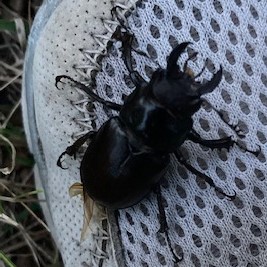
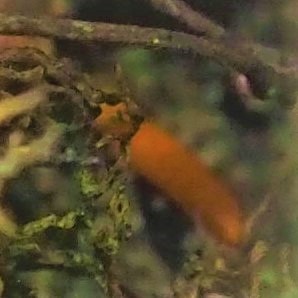
Maybe the Beetles ate into the Bugs' territory. But as usual, we start out with our Pale Green Assassin Bug. I can't take any credit for finding the second Bug. My son came down from the attic where he has been living for a year, carrying a bottle with a strange new bug at the bottom. I thought at first it was some kind of Fly, but after posting it to iNat, their ID app came right back with Masked Hunter, a different member of the greater Assassin Bugs. He said that he had seen several of them in the attic. Think of this, a person living in a place also inhabited by noxious Bugs whose Slurpy-makers are capable of rendering a painful stab. And nonchalantly bringing me a present of a Masked Hunter! Ontogeny does recapitulate Phylogeny!

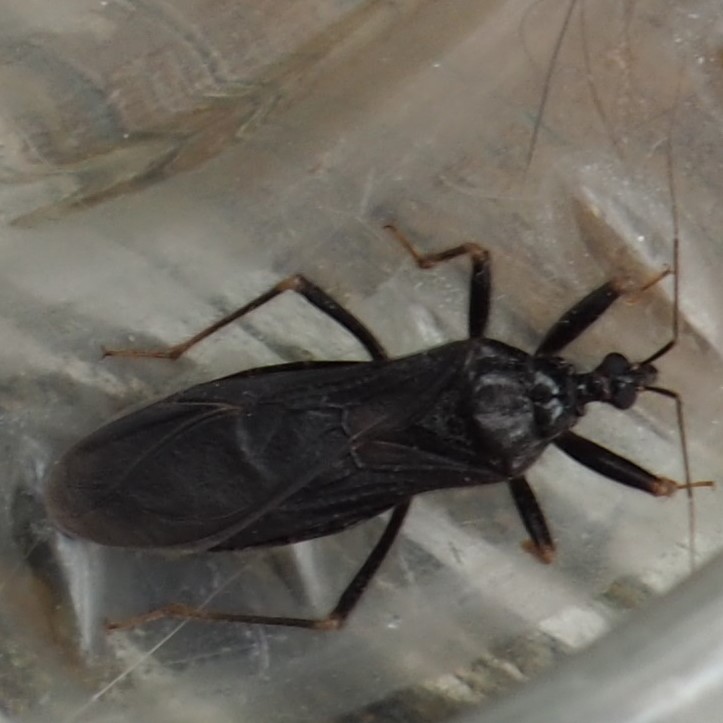
As usual, we continue with the Leafhoppers. For the first time, it turned out that what I thought was the Four-spotted Clover Leafhopper was actually that very one! This pretty little white Leafhopper is also one of those very hard-to-identify ones. And this Red and Blue member of the genus Graphocephala is the first one of its kind I've seen this year! Usually we have a lot more Leafhoppers, but at least they are starting to come back after a strange Winter and stranger Spring!
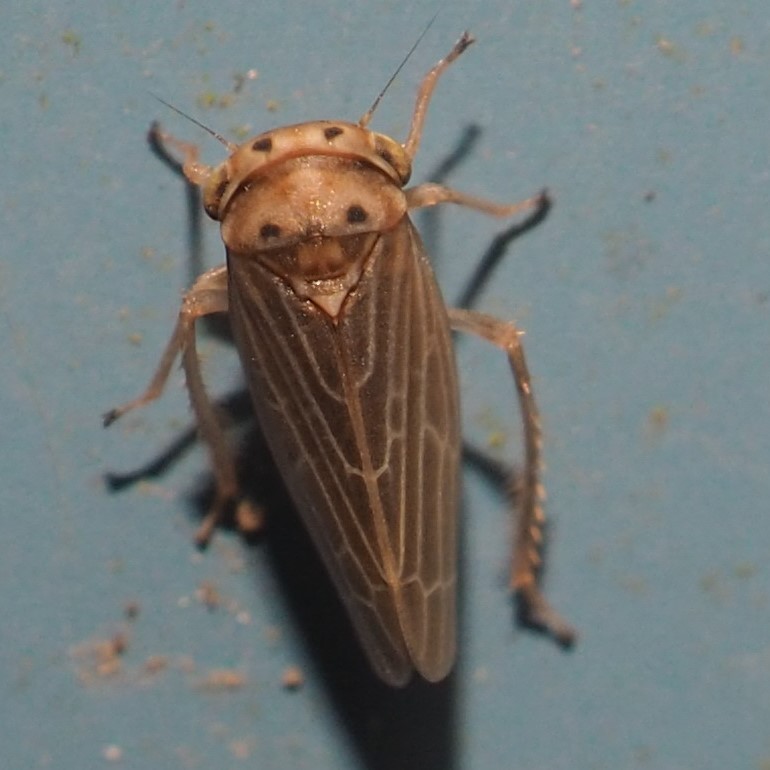
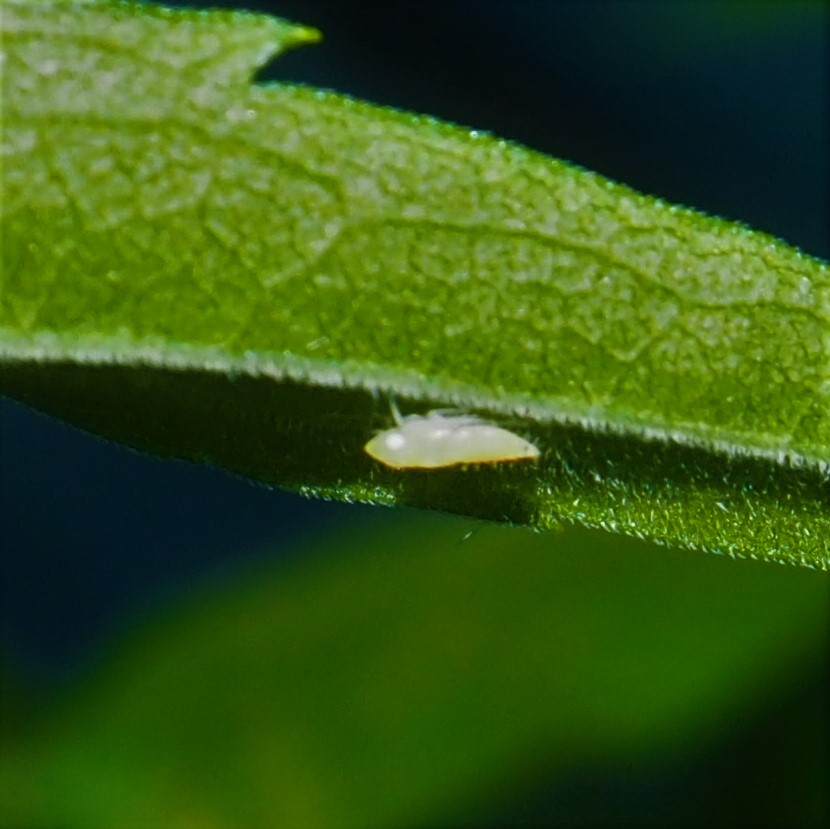
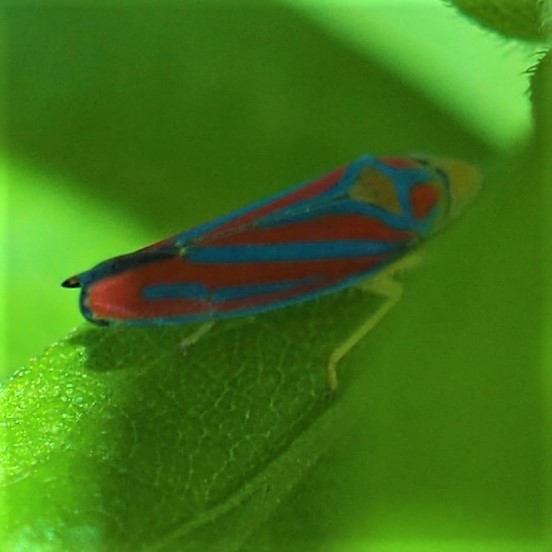
Let's see if we have any Plant Bugs. Yes, here is one sitting in the center of this Fleabane flower. The next one is that beautiful horrible Four-lined Plant Bug. You see, it likes to bring a hundred of his friends to destroy a sensitive plant or a hundred.
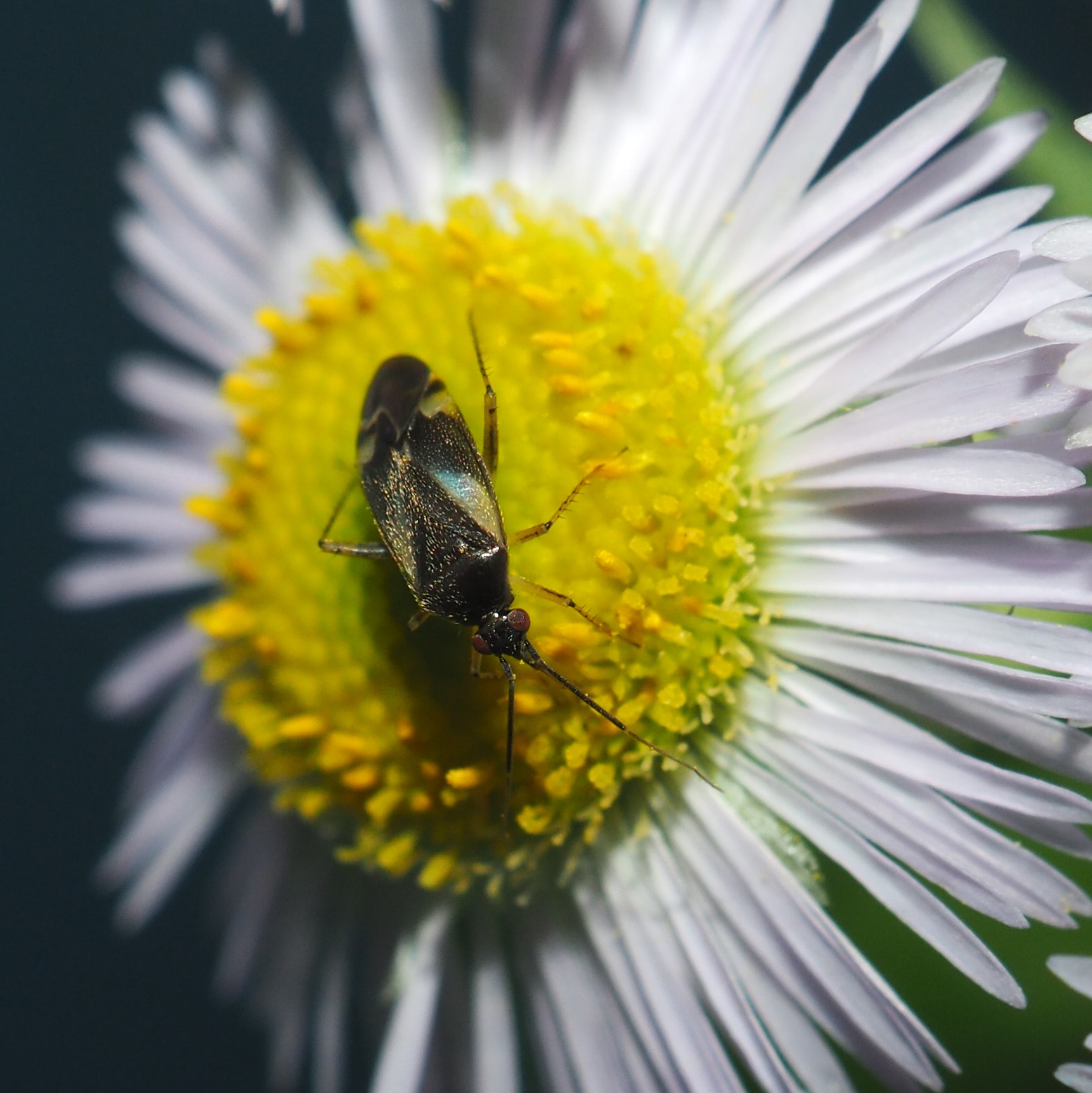
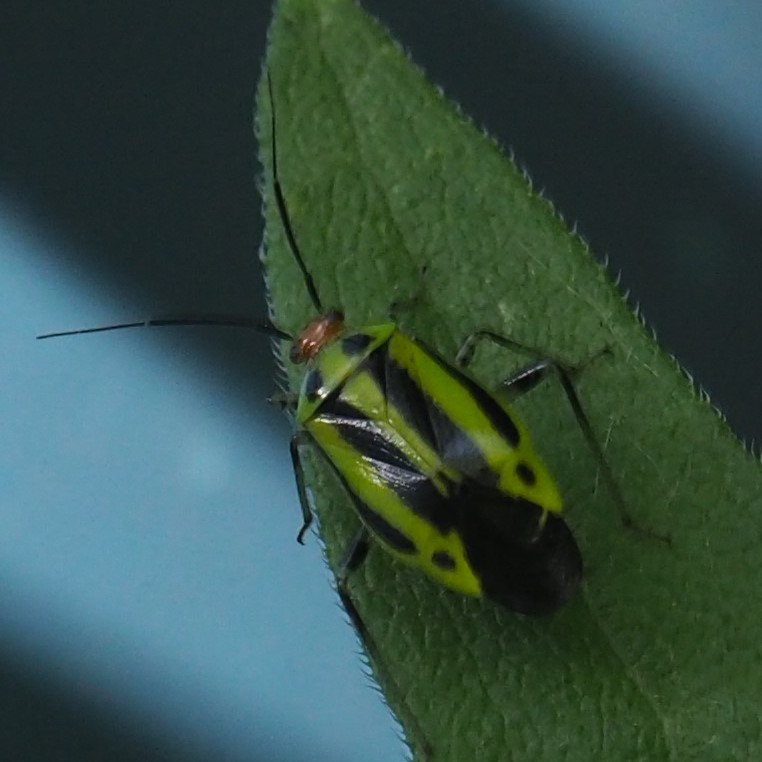
A little while after the latest Barklouse nymphs began to appear on the North Wall, this Bug (I think it's a True Bug nymph) began showing up (multiple copies) mostly on the East Wall. I thought at first it was a later version of the Barklouse nymphs. Picture 3 shows a different individual seen the same day, June 11, 2021.
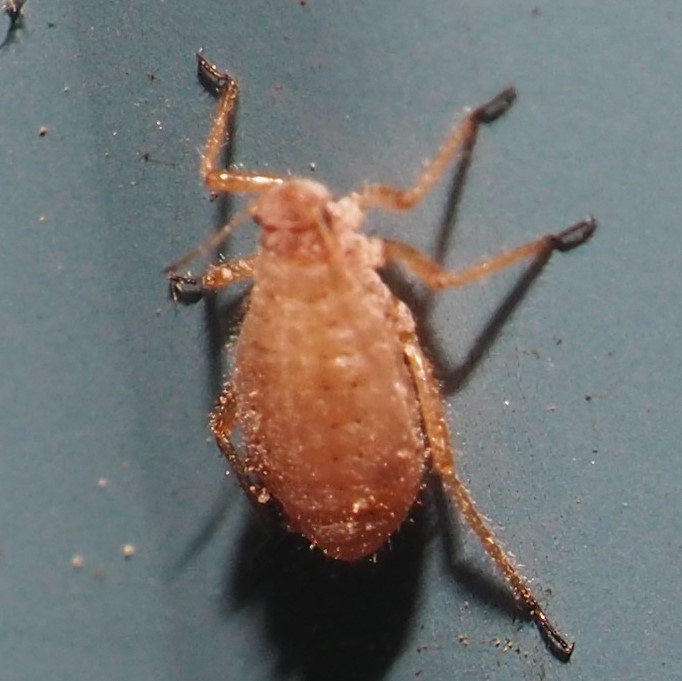
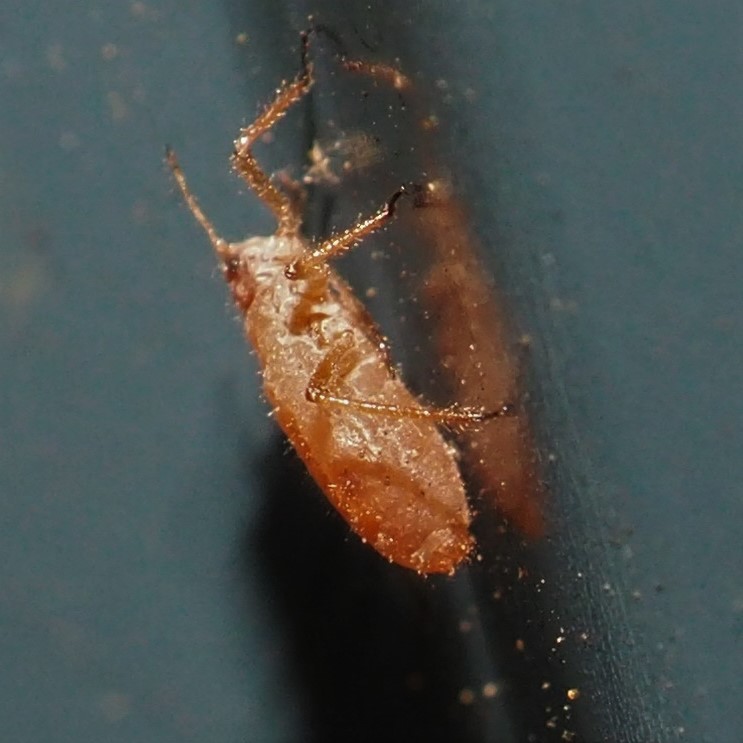
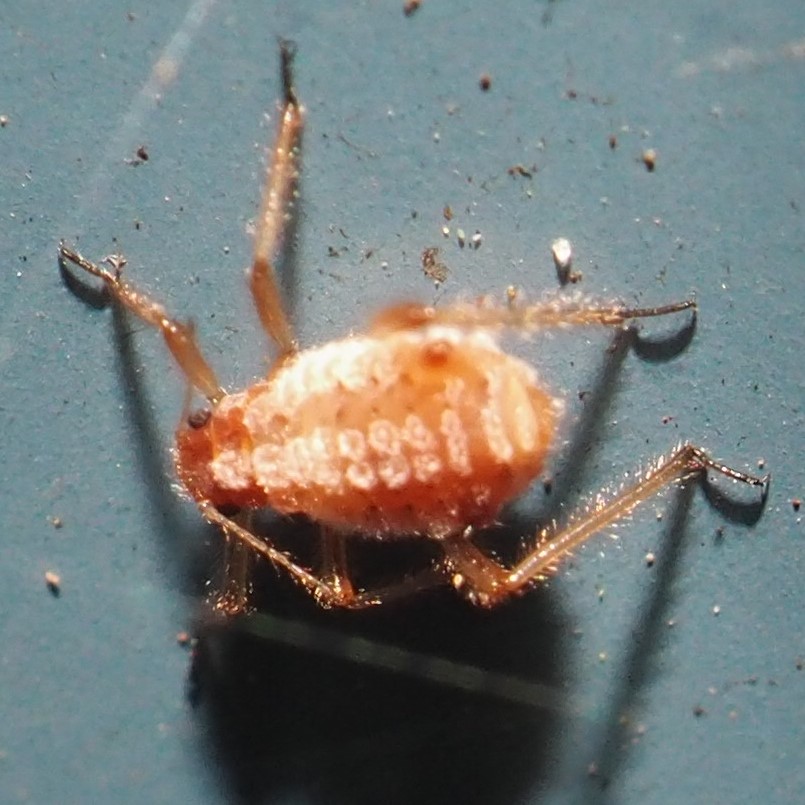
This amazingly beautiful red and black Bug is a True Bug, but amazingly beautiful as it is, nobody seems to
know what it is. It is one of those Nymphs that must grow up to be a gorgeous Bug, but there are (as usual)
few pictures of intermediate stages, so until our Bug grows up in a place where it gets a photo every day, we
just don't know what it will be.. . The second Bug (pictures 2 and 3) is also a Nymph of one of the Spined
Soldier Bugs but no one seems to know which one it is. So it is also on the waiting list.
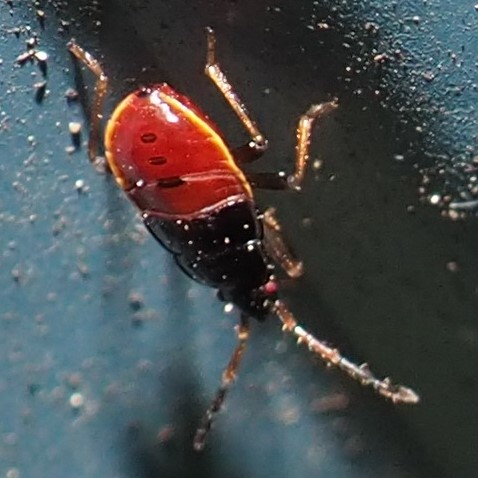
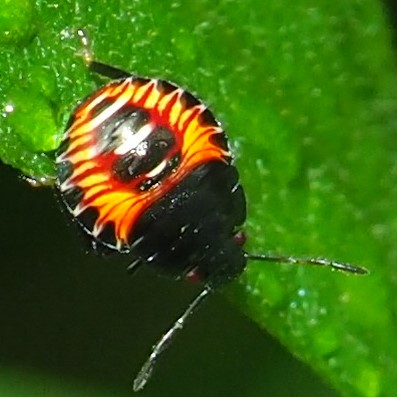

Since we have done with the Leafhoppers, we can go on to the Treehoppers. This week we only saw one kind, the Two-mark Treehopper that lives on Redbud. In the past couple of weeks we have started being able to see them, but this week we got pictures of some members that have begun to grow the "thorn" that gave the adult the sometimes name of "Thorn Bug". Going from left to right, we see that these little Nymphs have longer and longer "horns". The Adult will start to appear at the end of June/ early July and will look like this last picture. By the way, the "Two Mark" part of the name refers to the two yellow markings on the back of the adult.
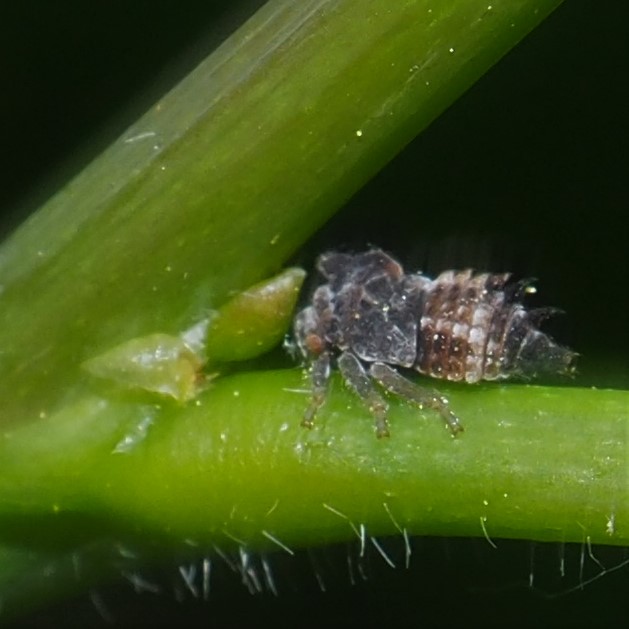
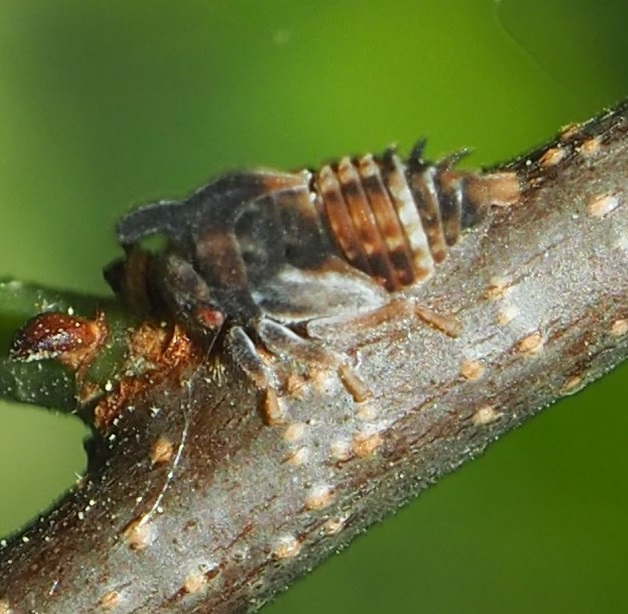
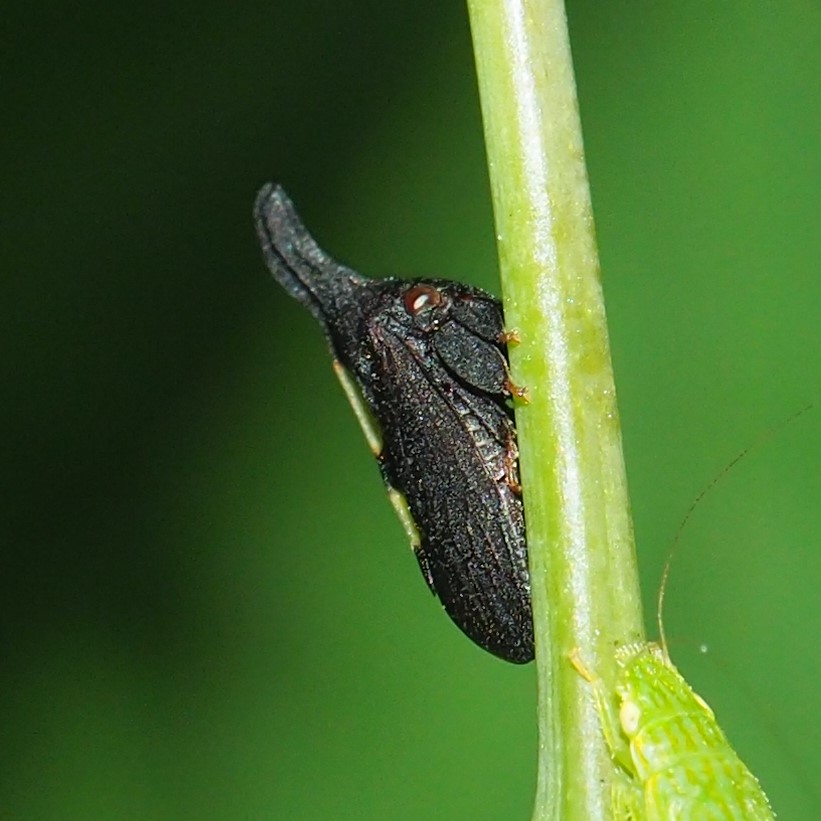
Poor Pond! The heat wave has intensified the algae, which have turned the water brownish-green. I now have 4 barley bales (they produce some anti-Algae chemicals as they decay in the water under a hot sun) in there and am waiting it out. This first picture shows (a) the barley bales in their mesh cages, which I tether to the sides of the pond; (b) two of the three Water Lettuce plants, which are useful for baby fish because of their many long protective roots; and (c) between one of the Lettuces and one of the Barley cases on the left side of the pond, two or three tadpole. Given that the Raccoons stay away for a while, they will produce many baby plants fairly soon. Picture 2 shows a number of fishes in the scuzzy water, and also the escape mechanism for the toadlets, which will want to get out of the water when their metamorphism from tadpoles to toads is complete. And finally, picture 3 shows Pebbles, one of the younger fishes who has developed some interesting light spots, the result of interbreeding between one of the reddish or bluish fish and one of the brown fish that predominate when the more colorful store-bought fish mate with each other for many generations. The white dots in the water are fish food flakes.
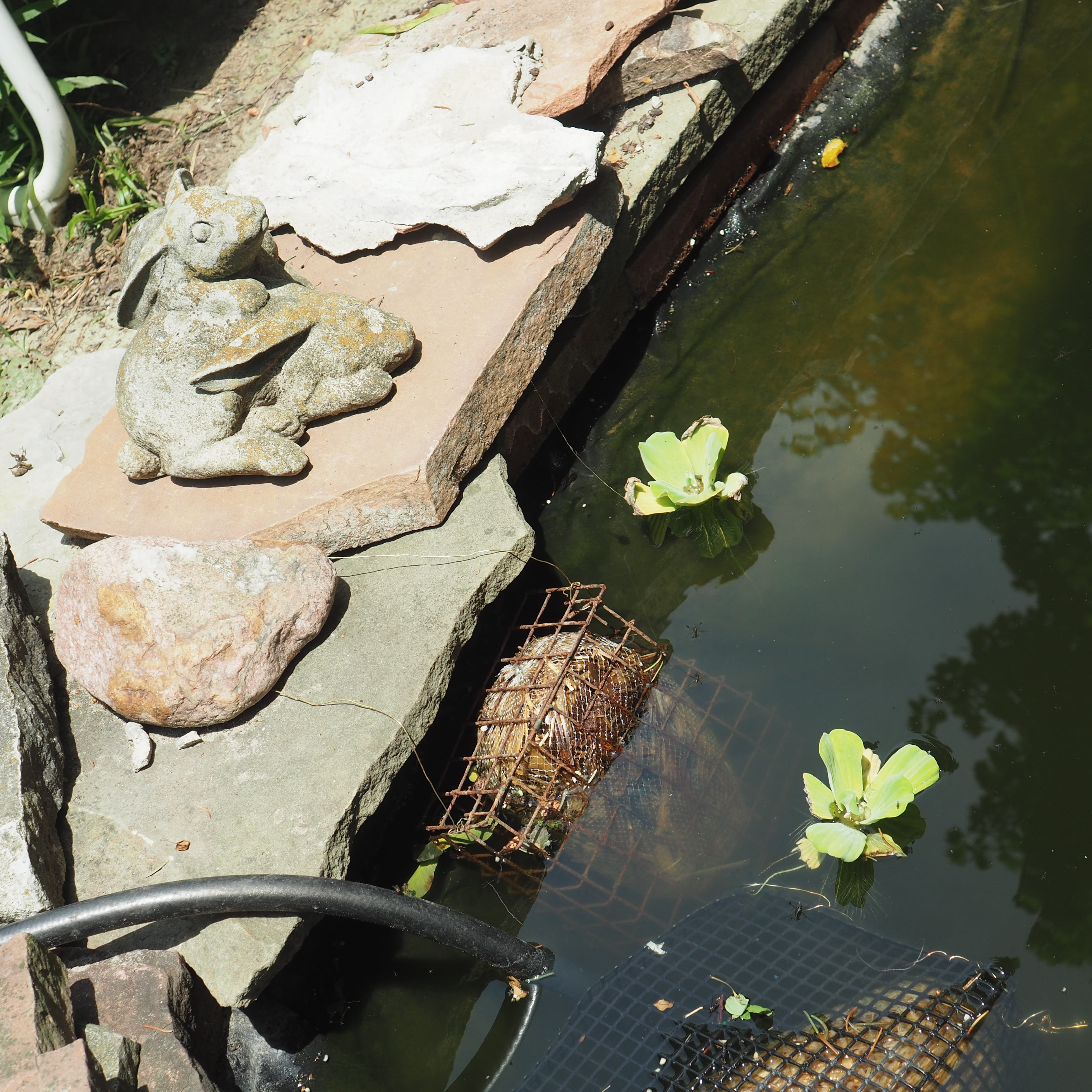
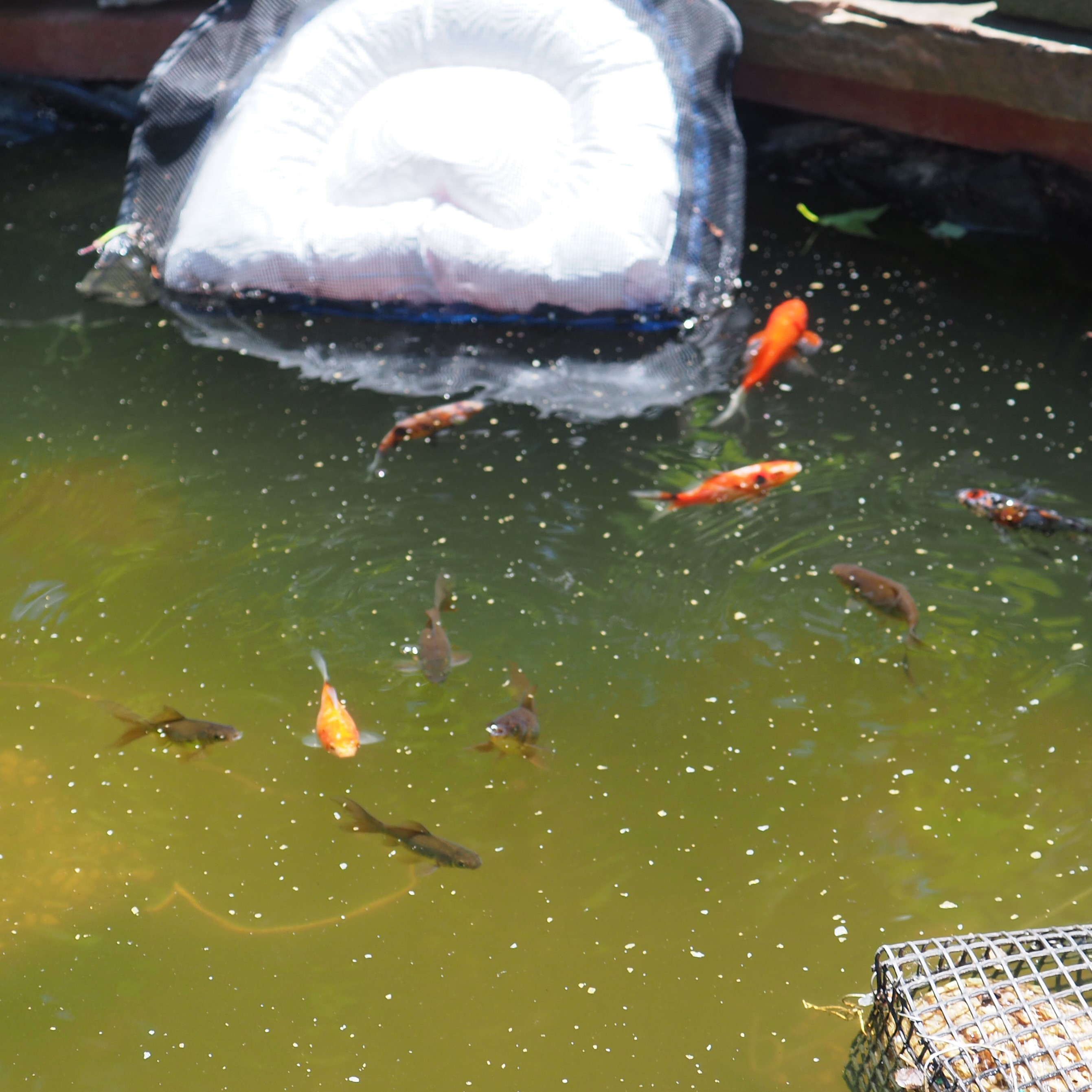
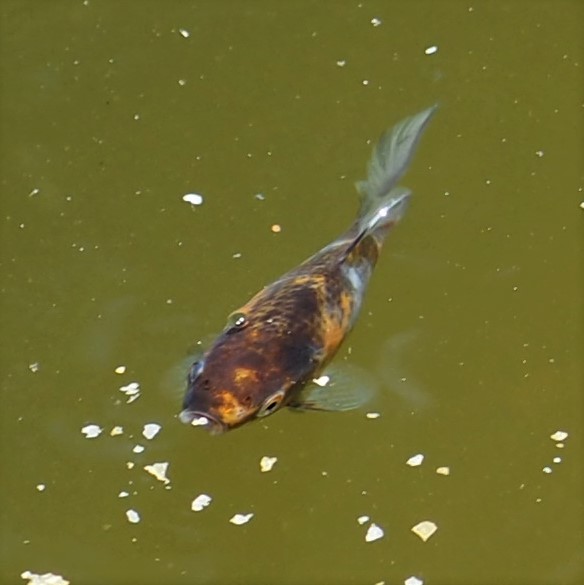
So on to the Flies. As usual, we start out with Crane Flies. The Third Fly was snapped from quite a way below the actual Fly.
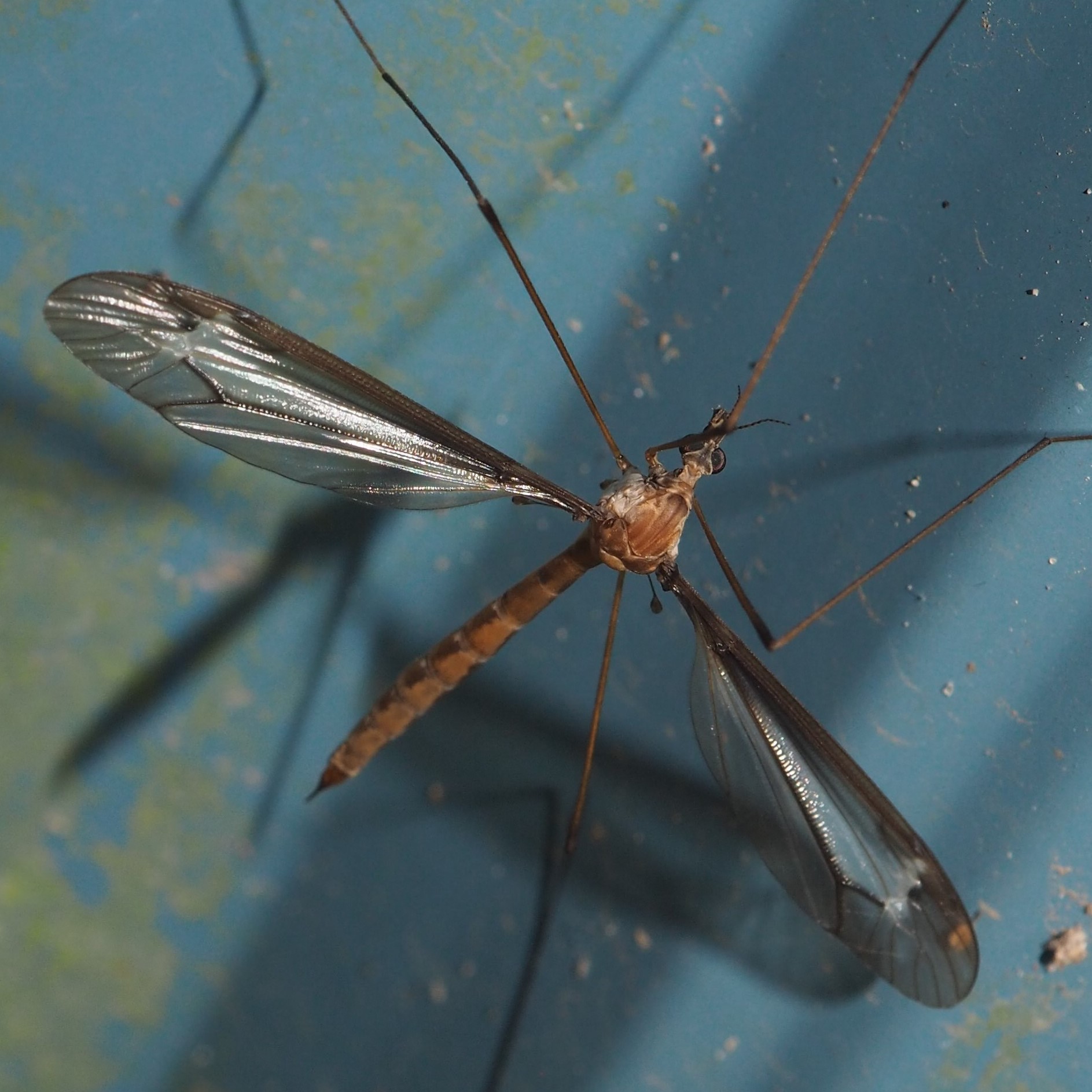
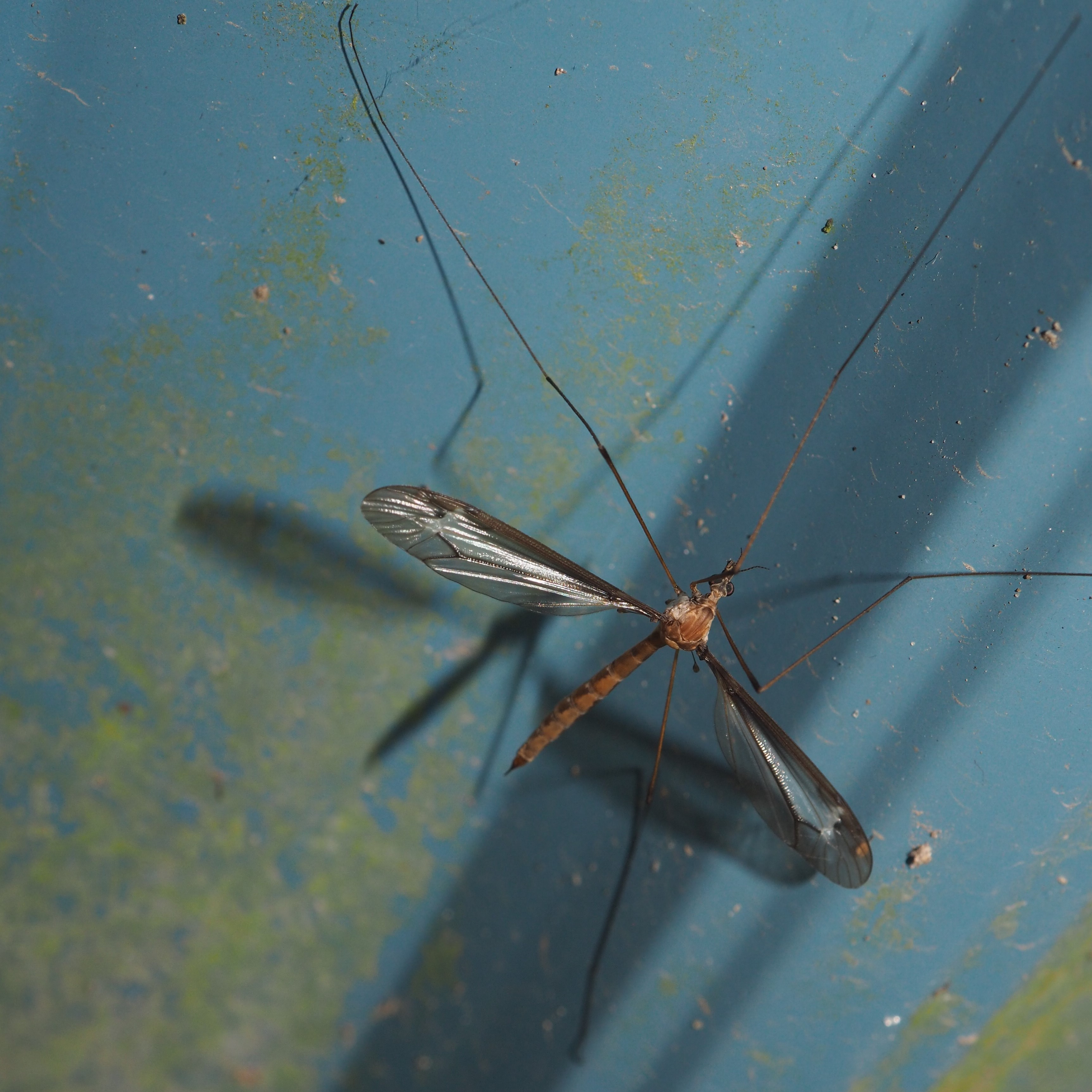

Here are a couple of Midges and, last, a Mosquito. I'm sorry to say I haven't gotten the Mosquito identified yet. It makes a lot of noise and tries to land on you - if you make a move to whack it, it disappears suddenly!
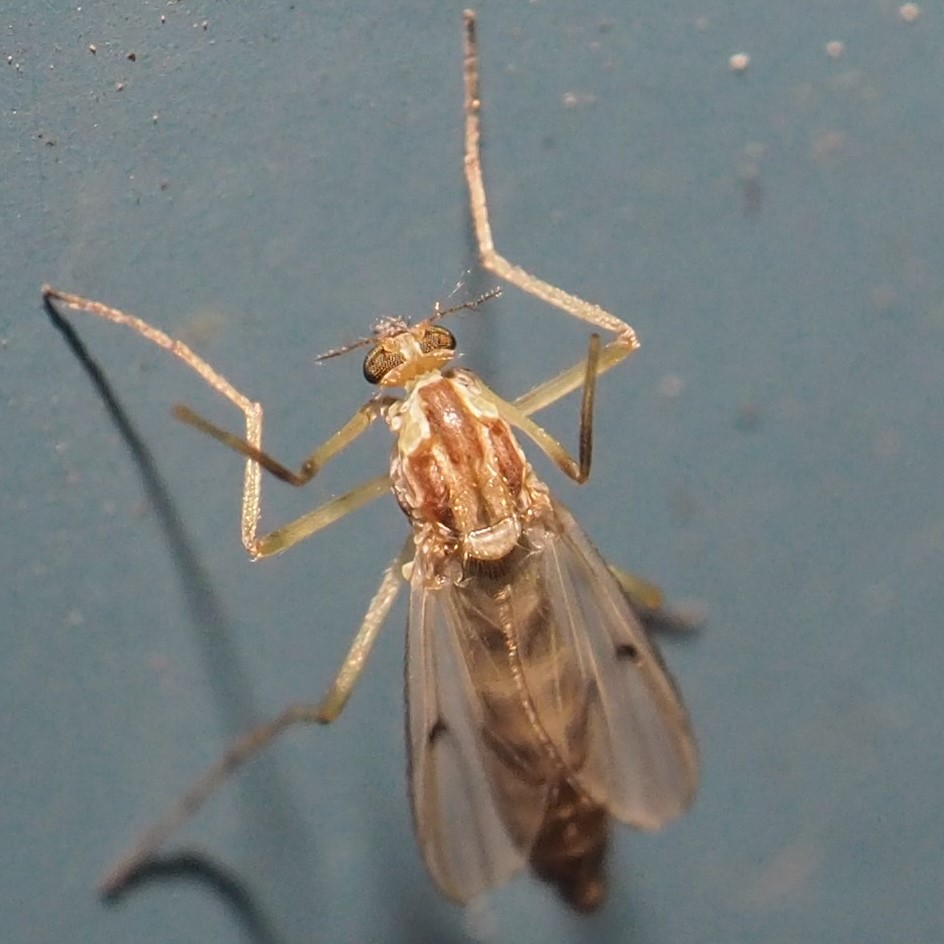
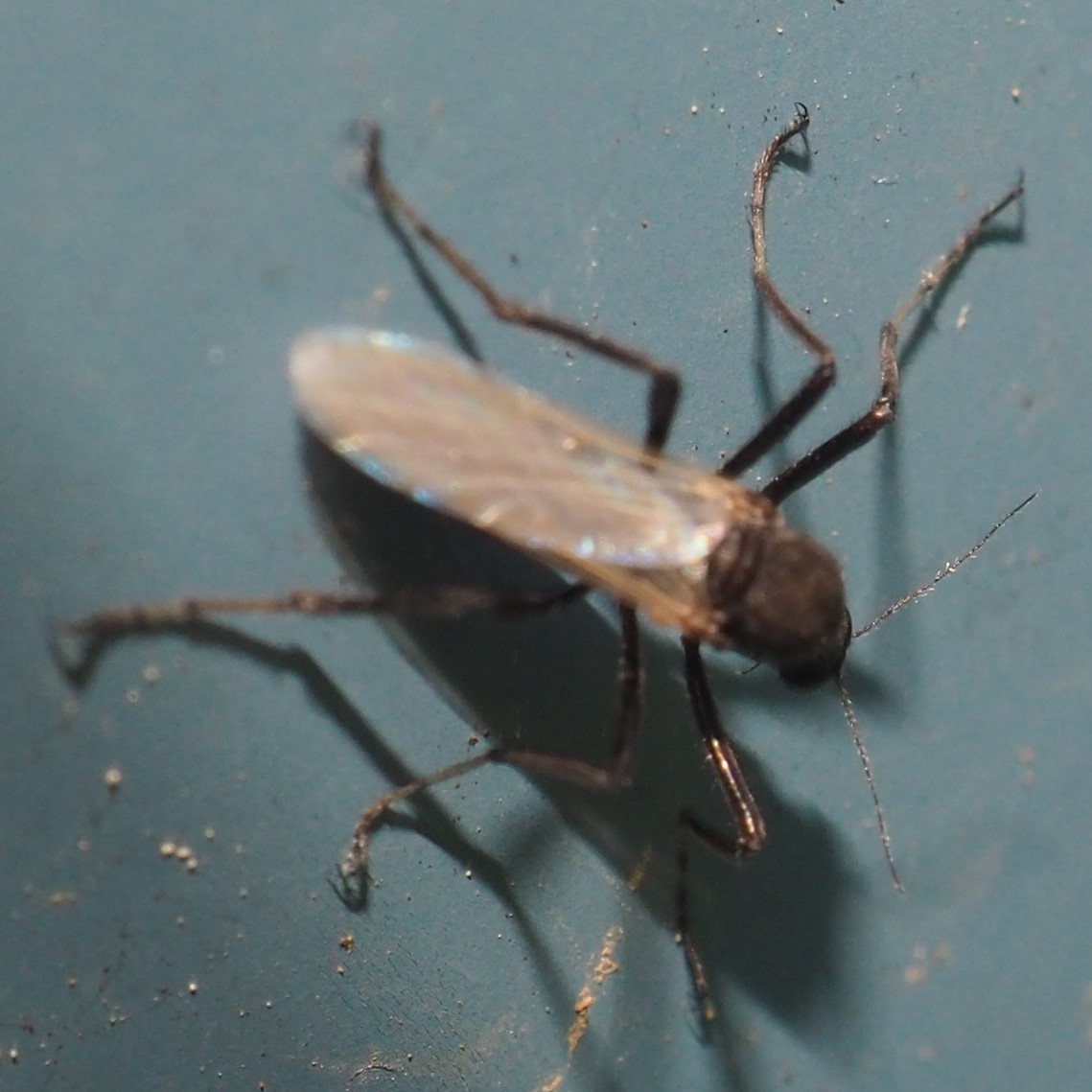
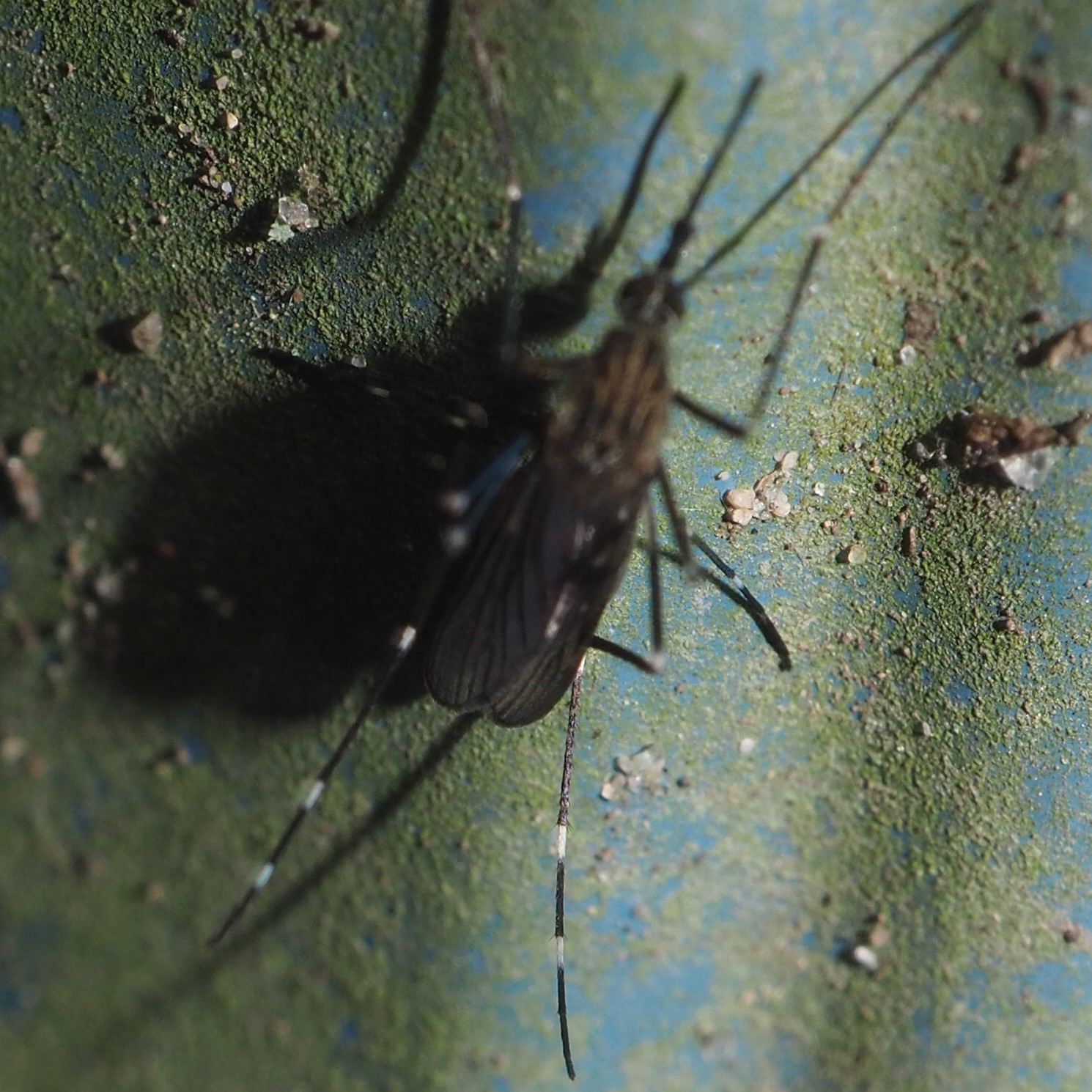
First here, of course, is a Fly that looks like a Moth, and hence a Moth Fly. The next two are clearly related to each other, but there are so many that look like them, I haven't gotten them identified and probably won't be able to.
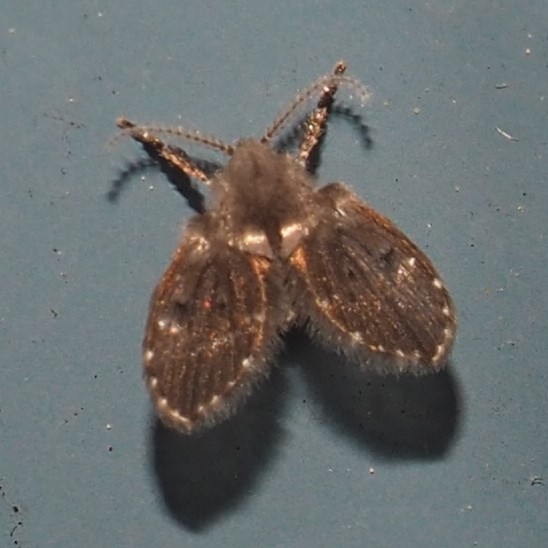
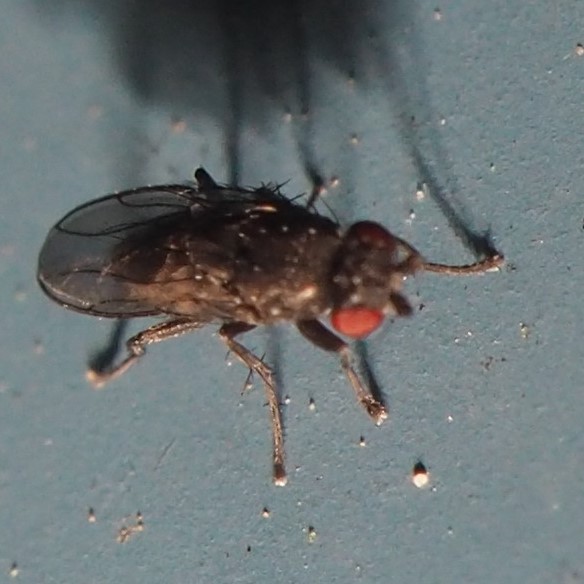
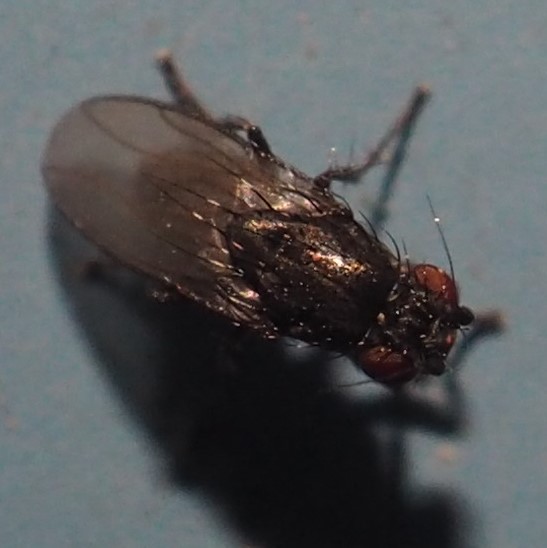
Here we have a Snipe Fly, followed by a Woodlouse Fly, which makes sense once you realize that Woodlouse is another name for Pillbug! They must have a great digestive system, unless they spit out the scaly bits. Third is one that MAY be in genus Suillia. There are a great number of genera that all look rather similar to use Fly amateurs.
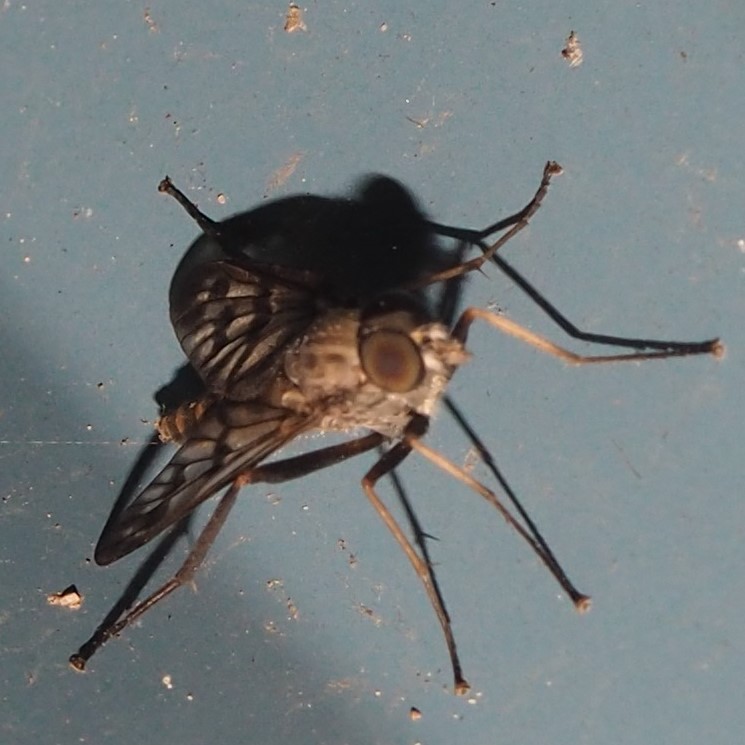
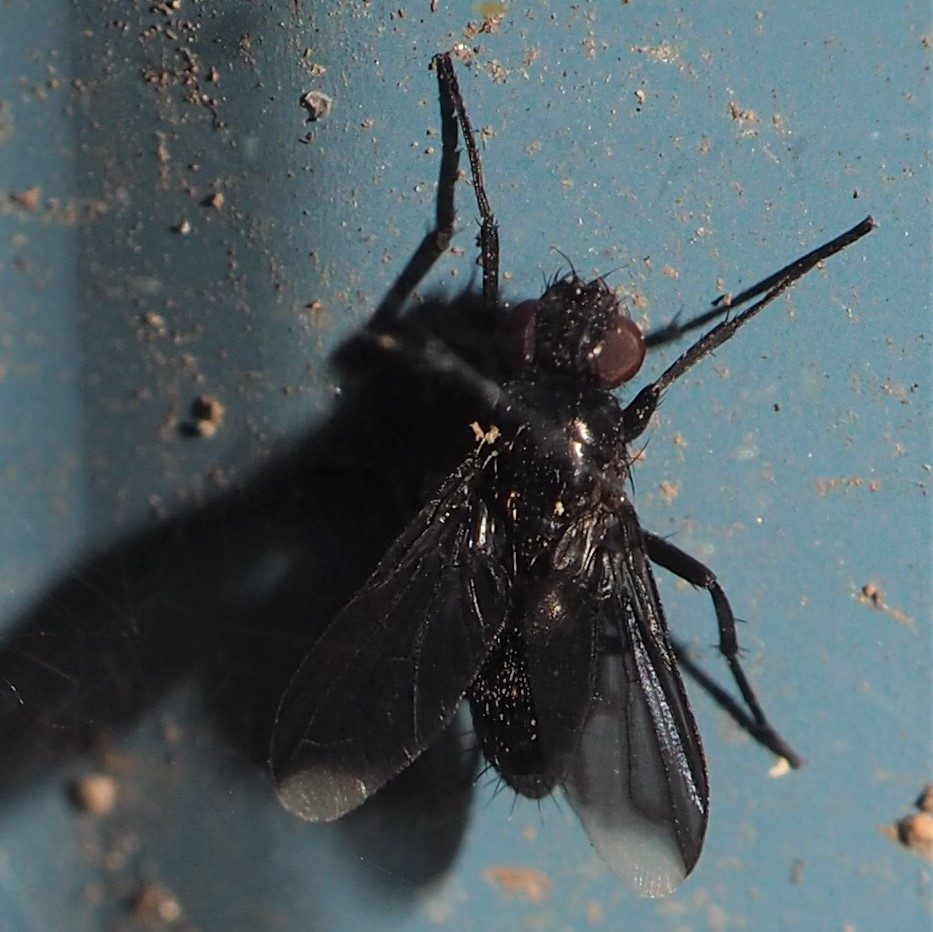
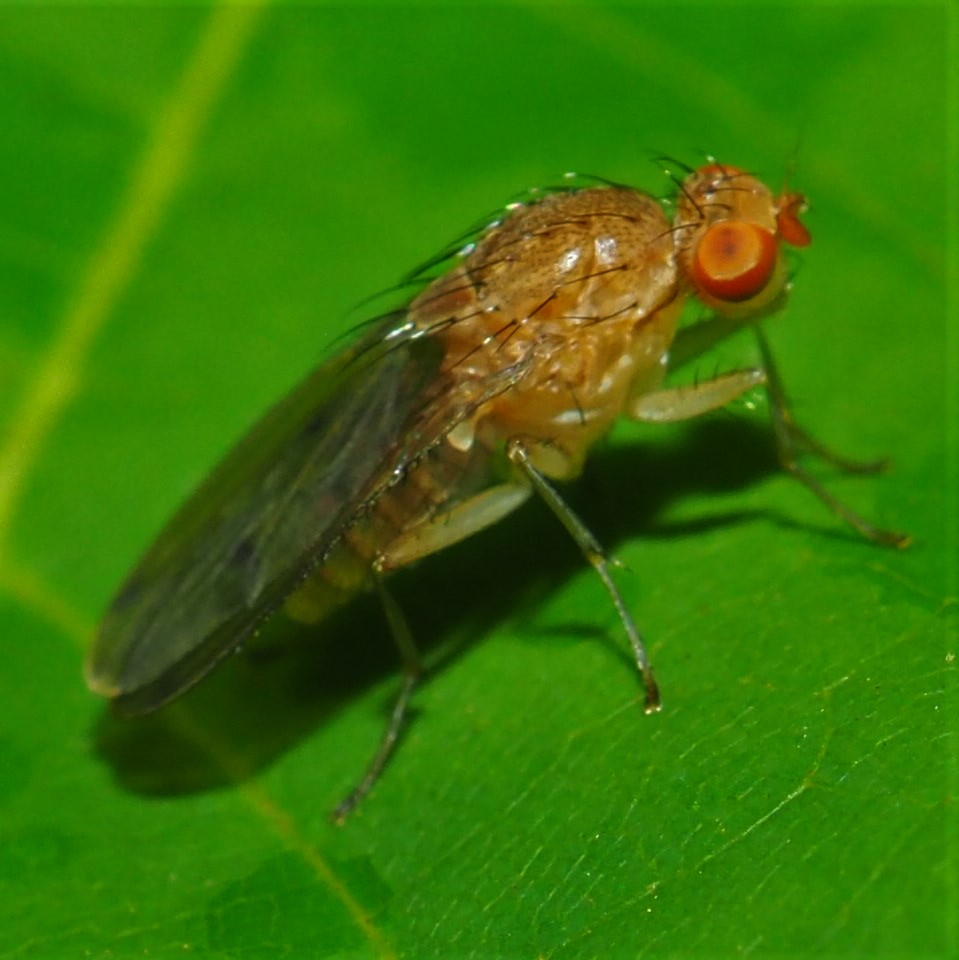
These four pictures are all of the same Fly. It was a very tiny creature in the leaves of a goldenrod or perhaps Aster plant. Picture 2 shows it hanging upside down.
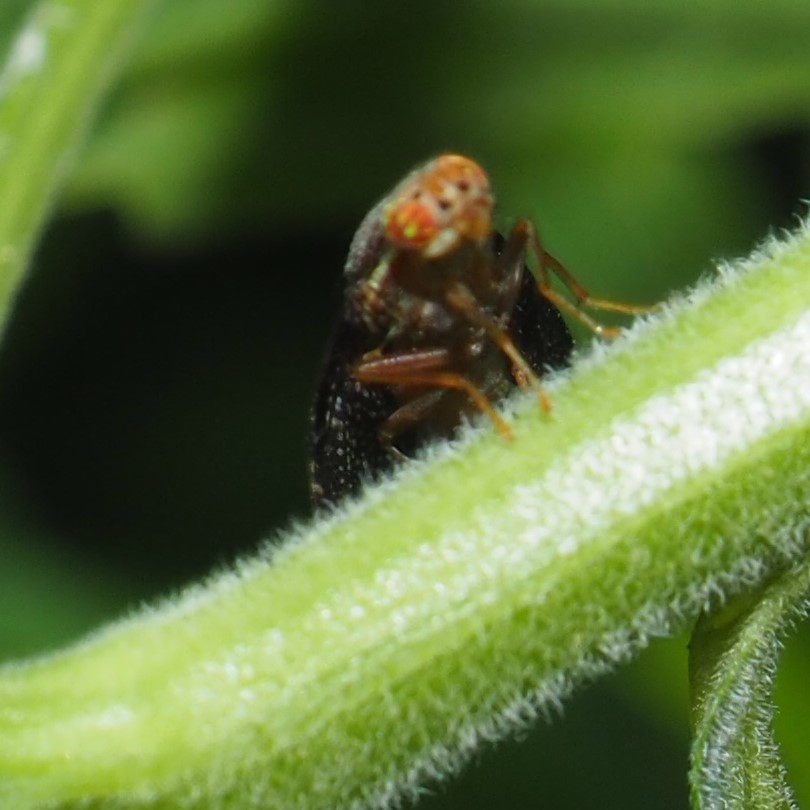


.jpg)
This exotic-looking Fly is called a Picture-winged Fly, because of the pattern of black and clear in its wings.
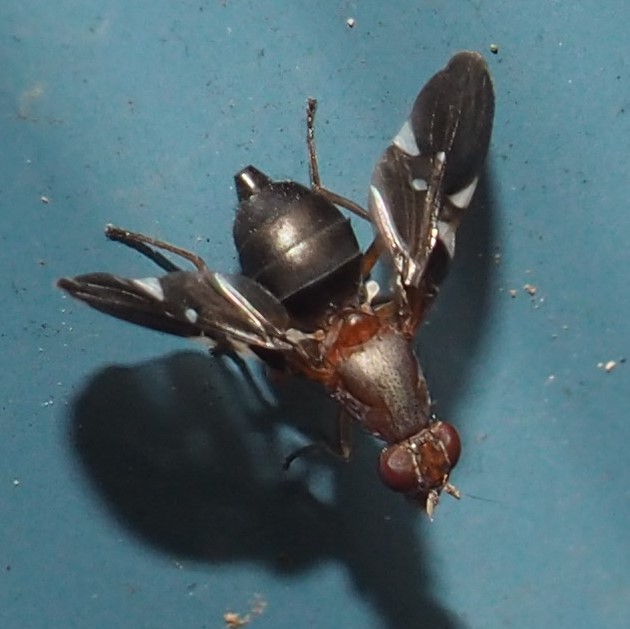

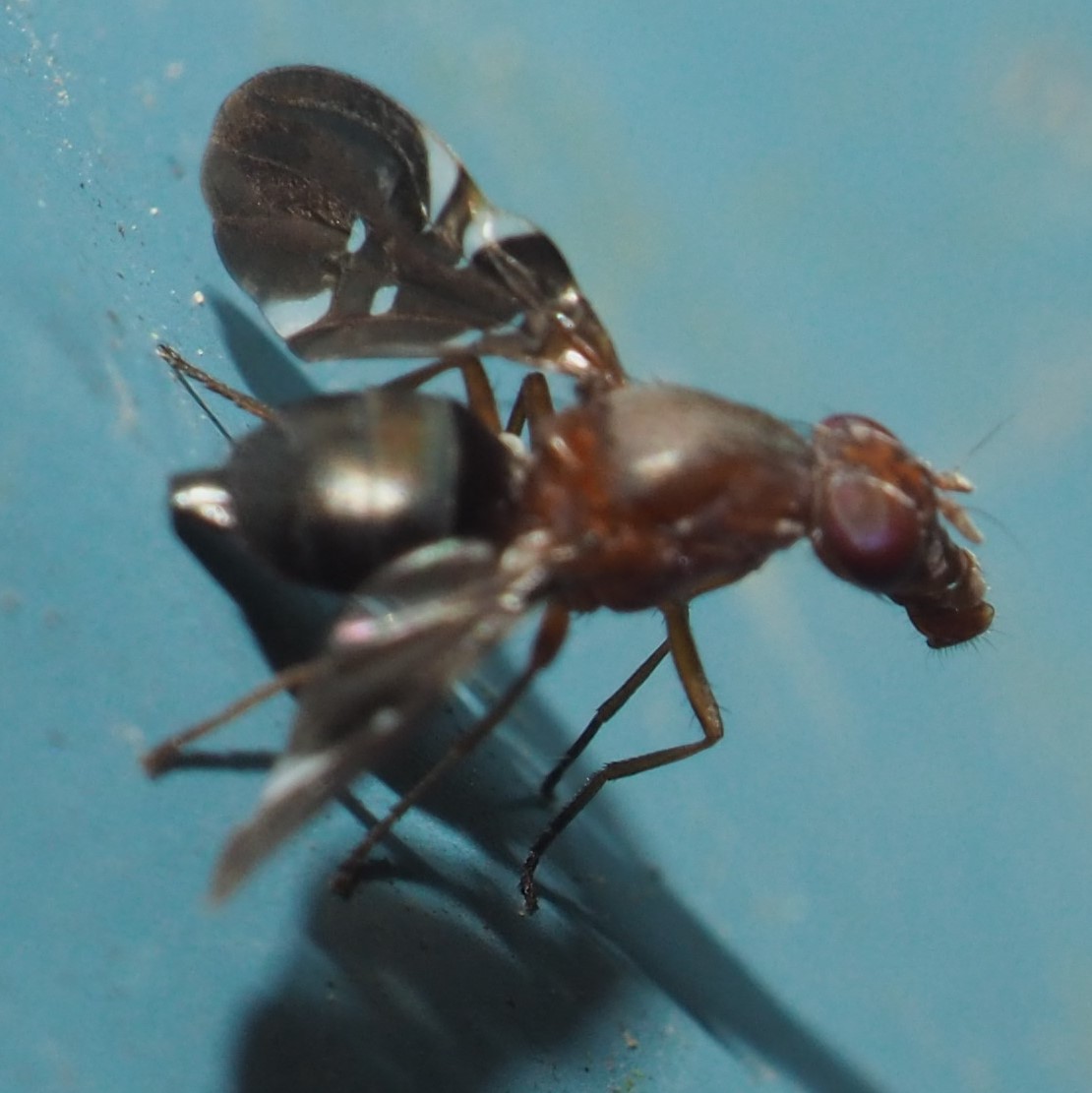
This little jewel was found in the Baptisia, and is the nymph of a Scudderian Katydid. It is the first Orthopteran I've seen yet this year, unless there was a Grasshopper earlier. It IS the first Katydid of the season!
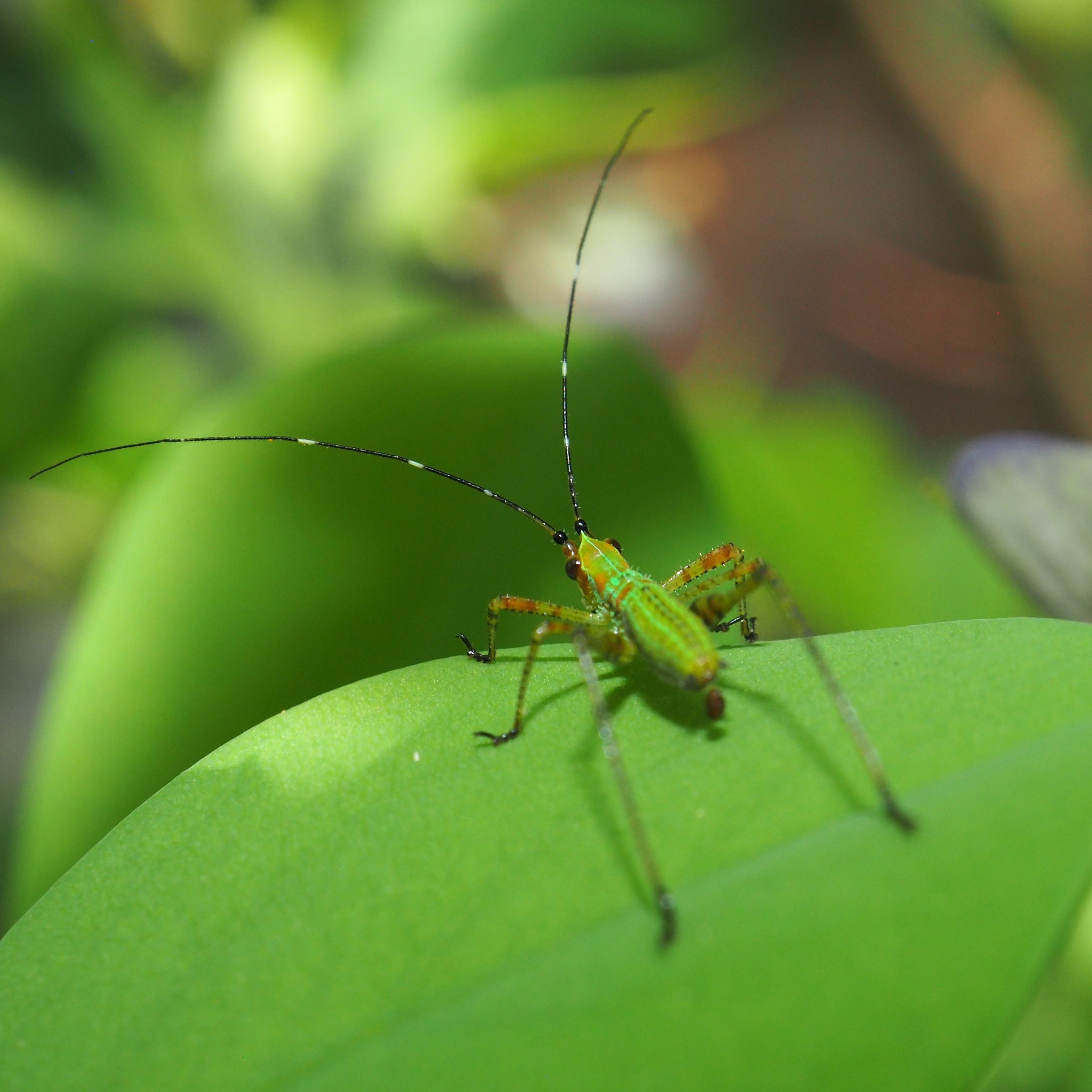
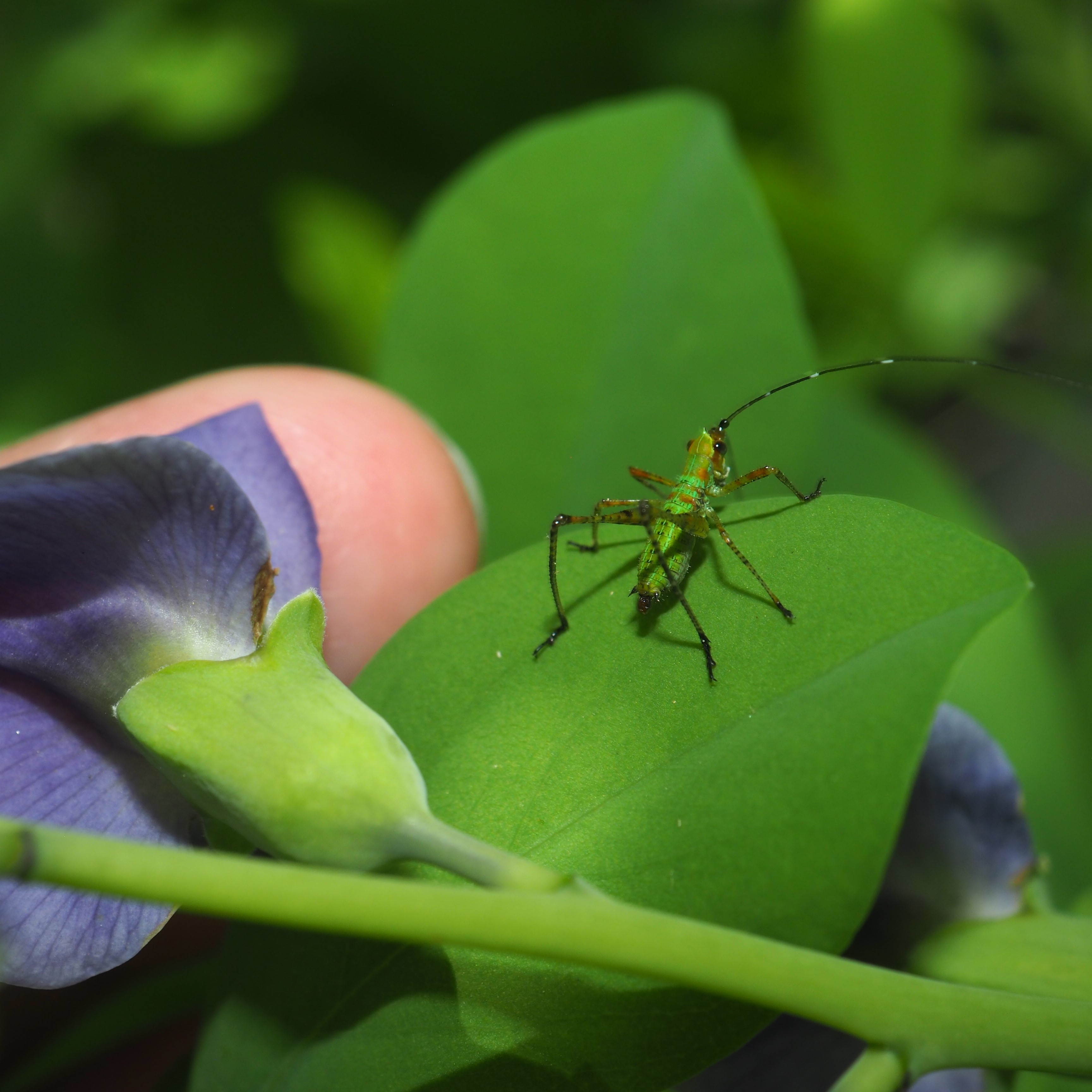
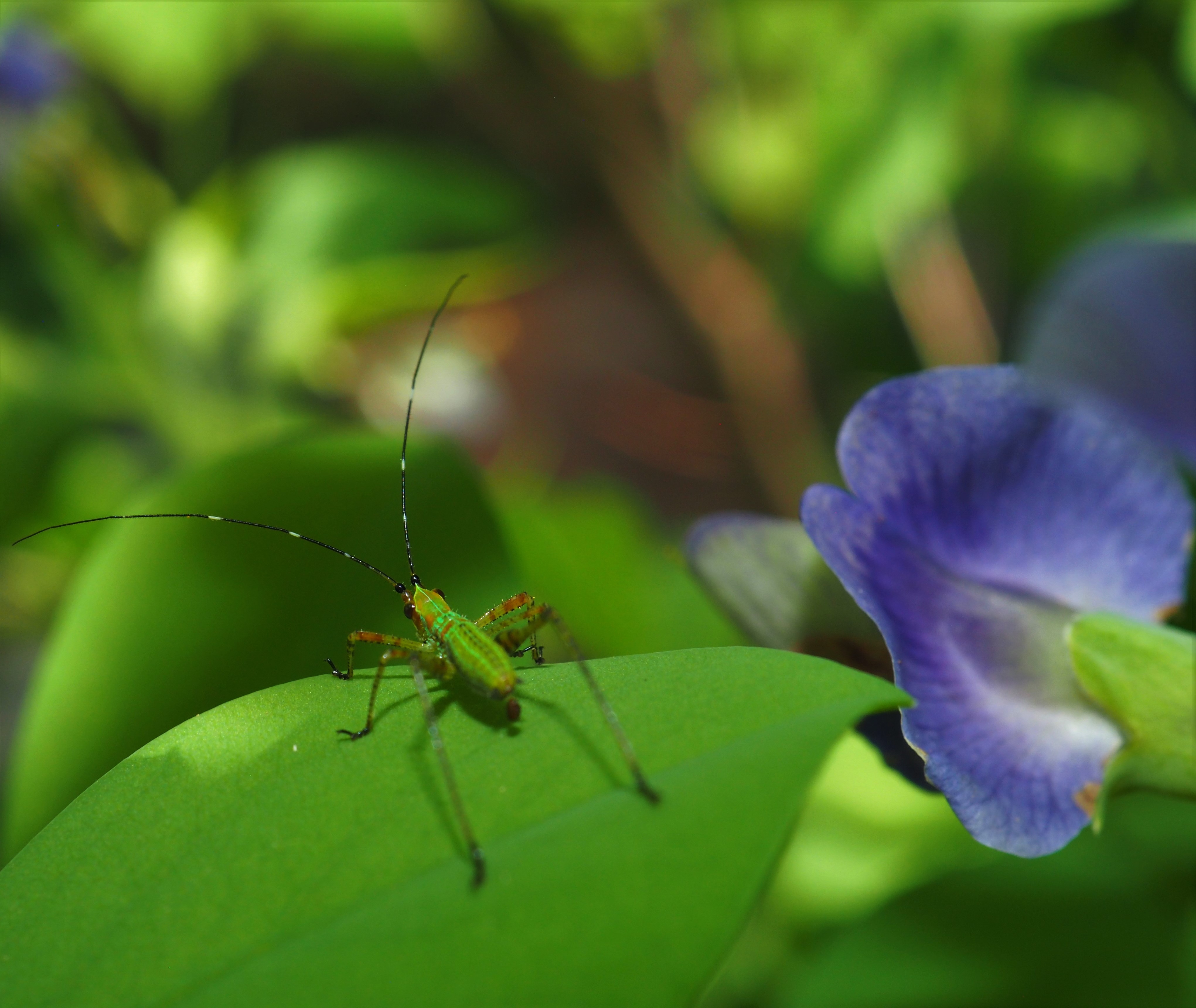
We have had a few Moths this week. I like to go back and acknowledge the Caterpillars now, and then the Adult versions. This first one is the almost peak size Caterpillar of the Gypsy Moth. Shame that this lovely creature turns into a fairly plain Moth. But I'm glad to get to see it now anyway. We often see inchworms of a very small size inching themselves up the Wall, but this one is a giant comparatively. It's over two inches long! All the loopers are larvae of Geometrid Moths. (Remember that Geo+metrid means Earth-measurer?) Third is a sideways picture of that lovely Mourning-cloak Butterfly. It is fun because its red feet look like misplaced versions of the spots the top side shows!
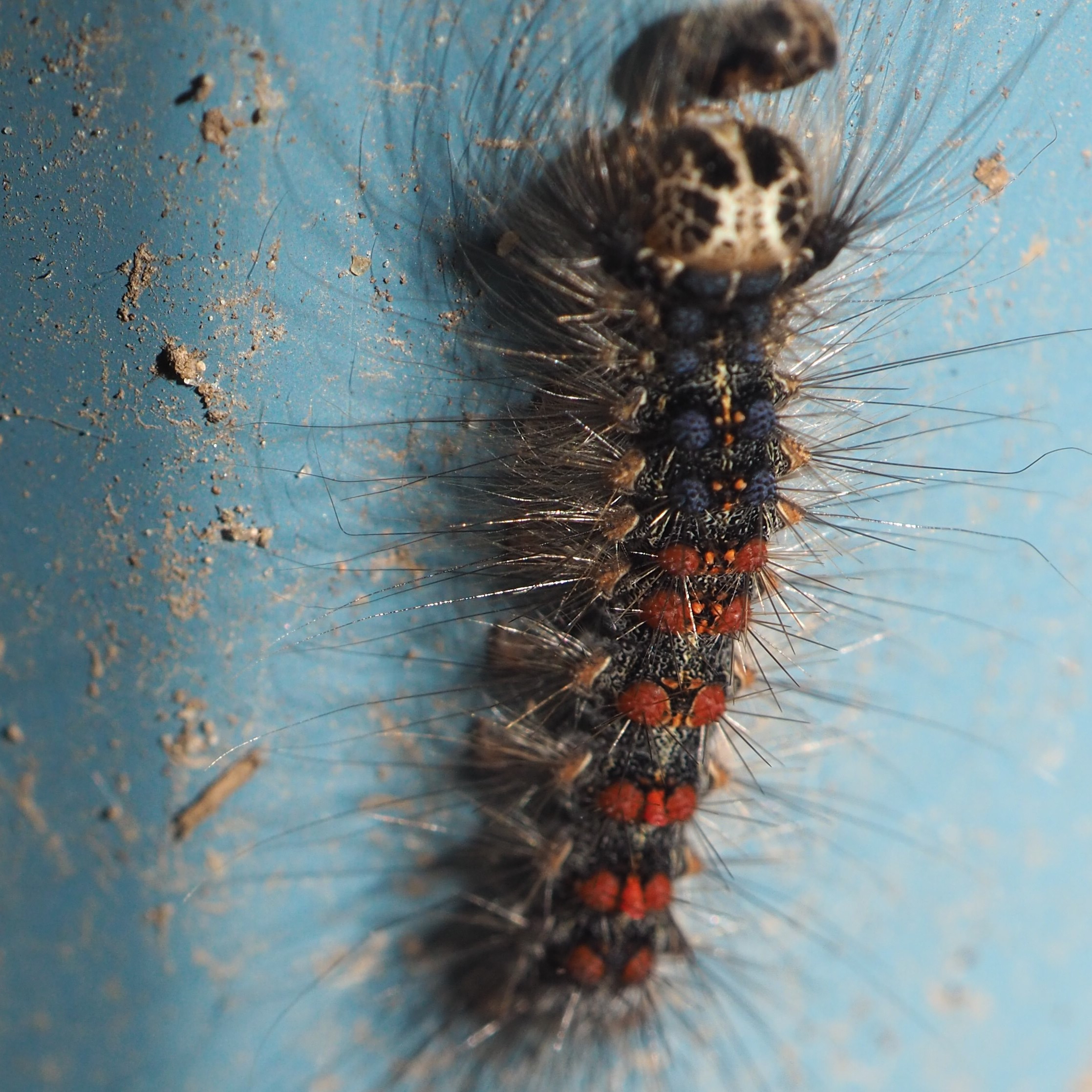
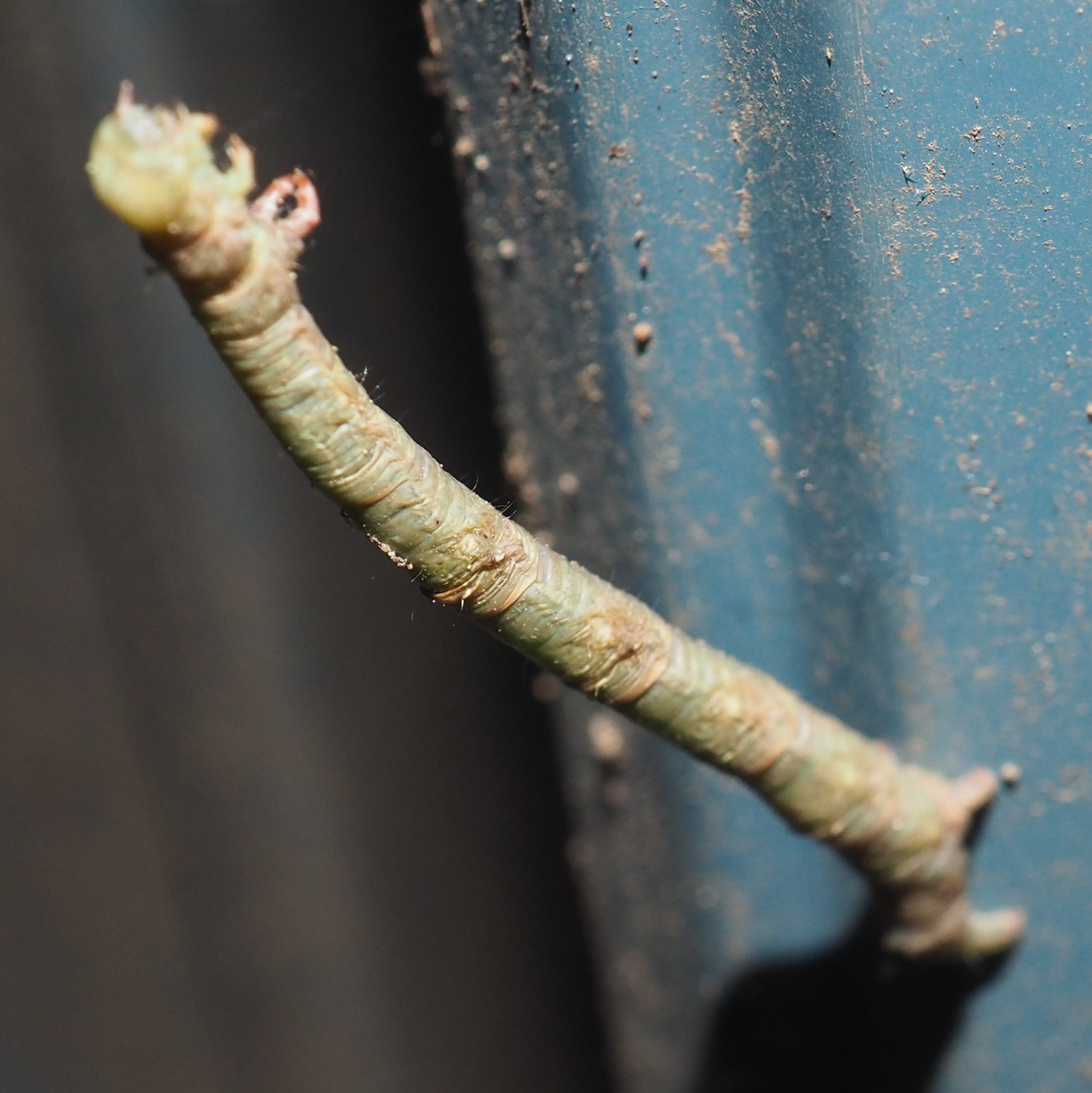
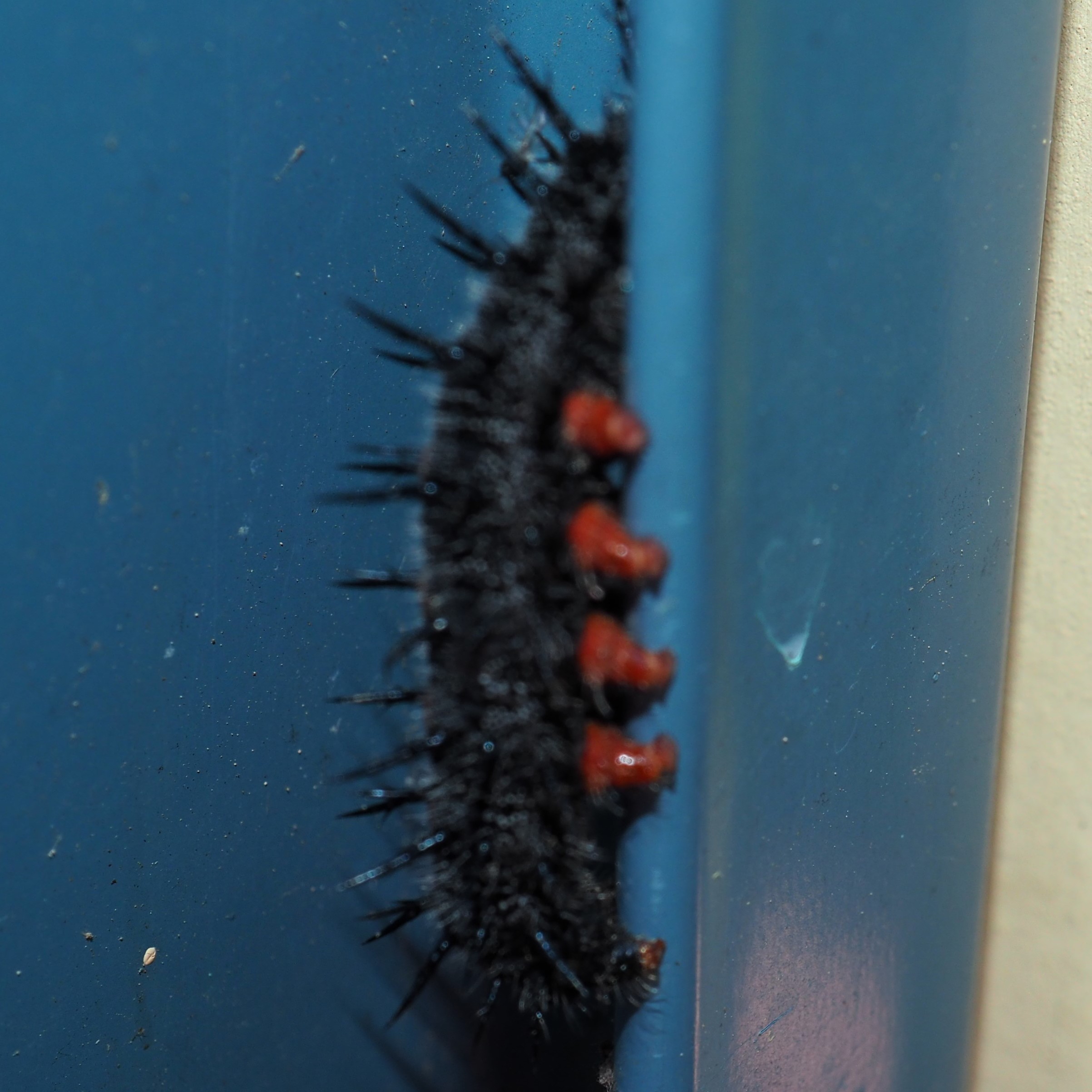
The Moths were very easy to find this week on the Wall. Here are three of them, each different but not too different from the others.
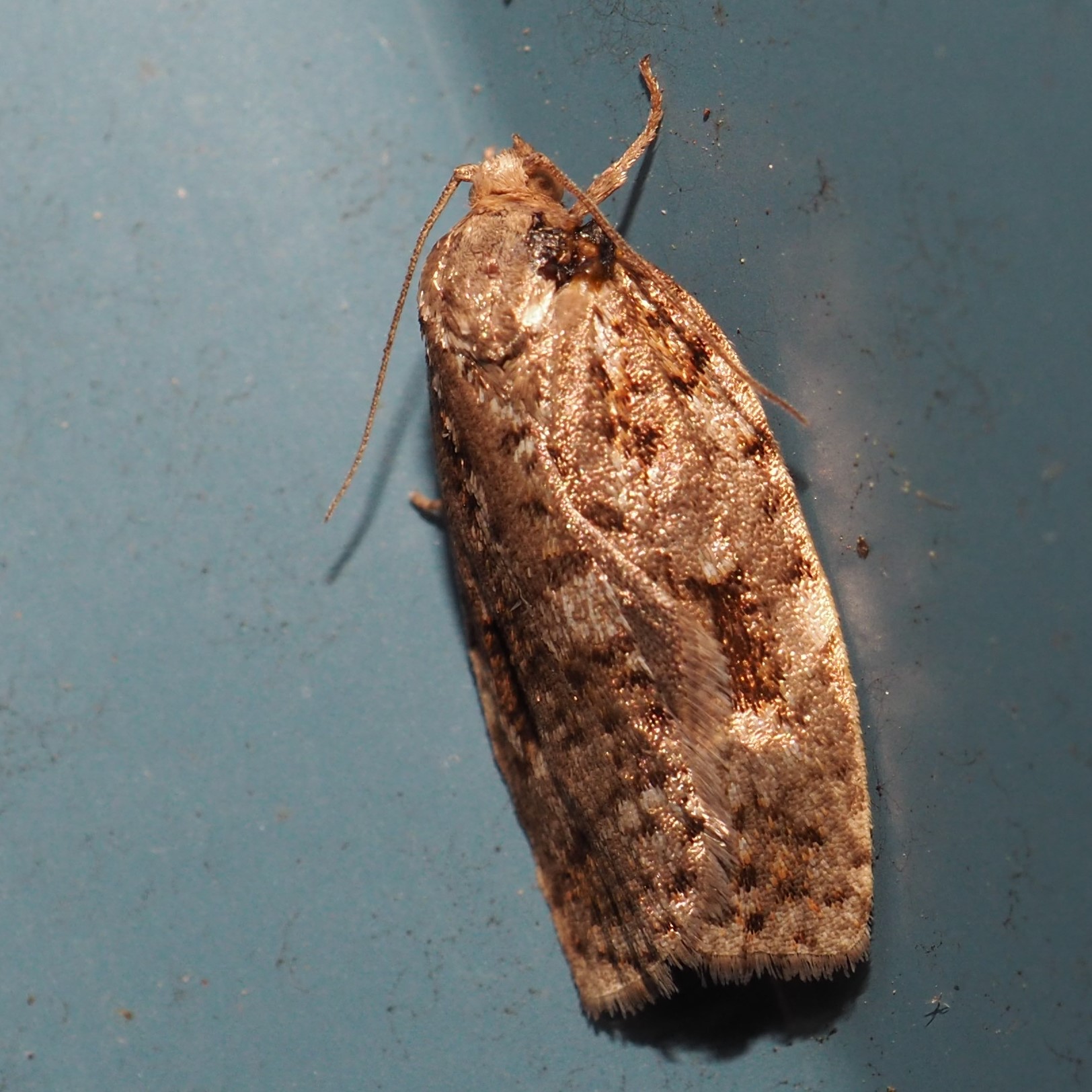

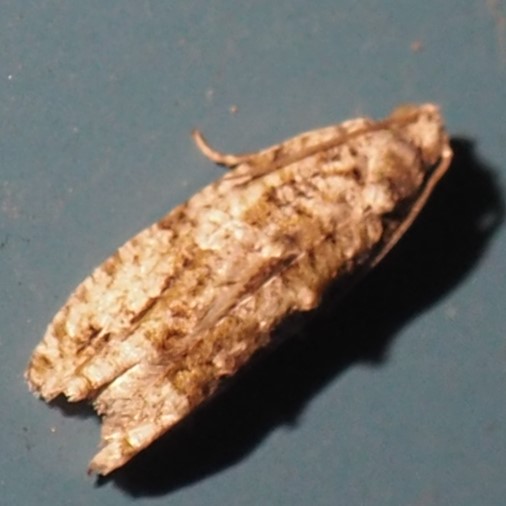
Three more Moths.
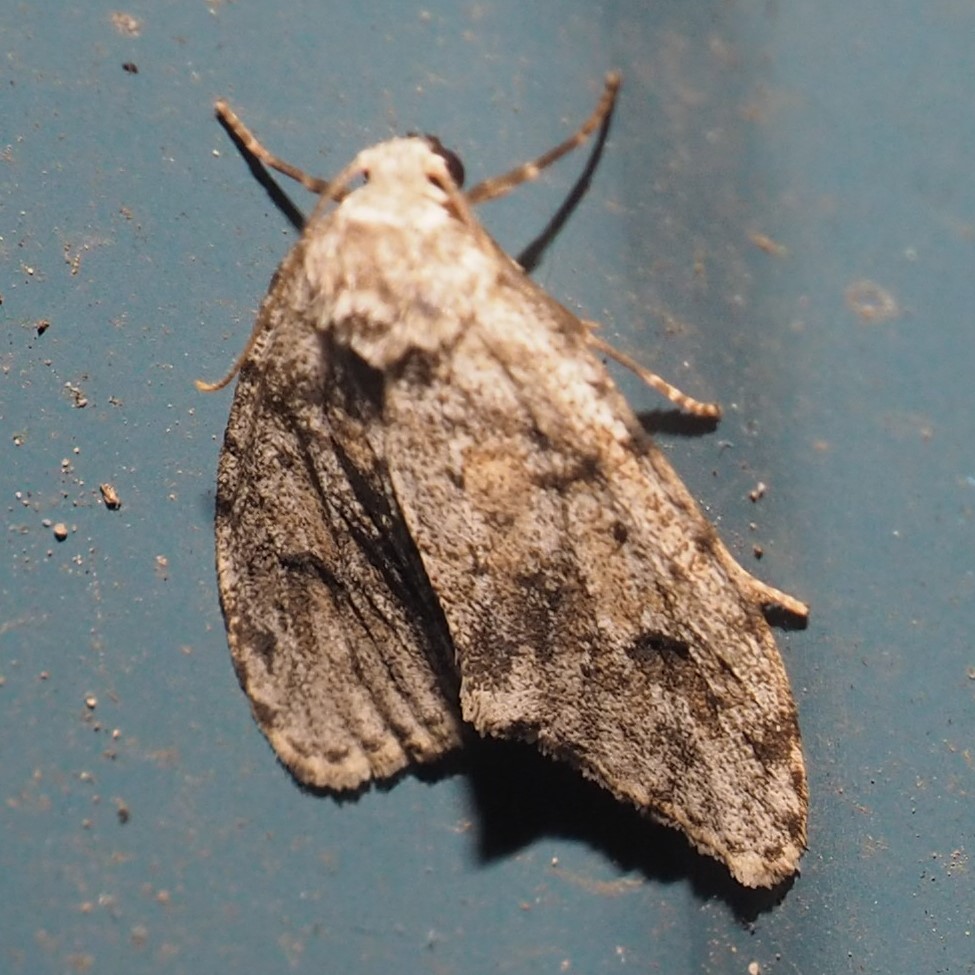
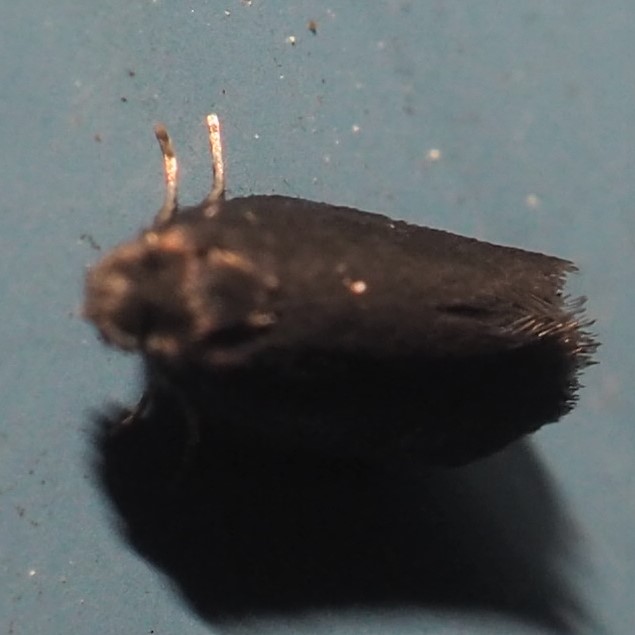
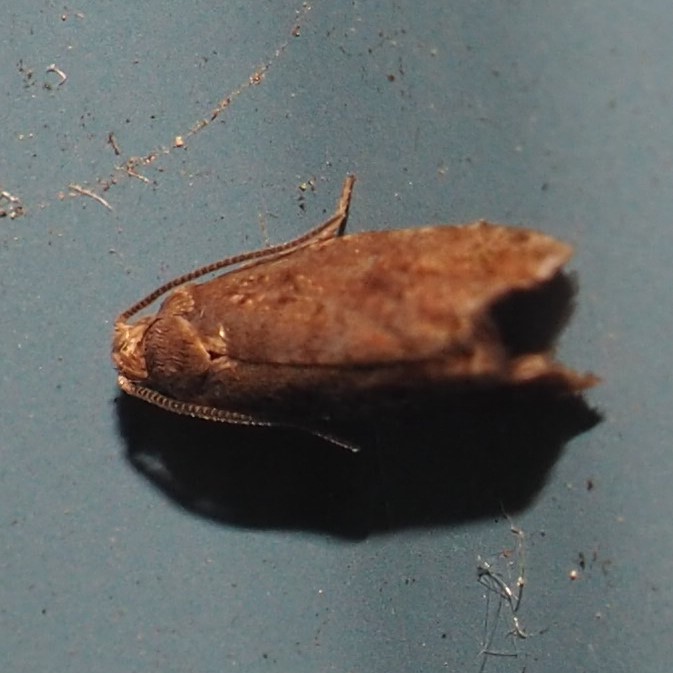
This one is the Dark-spotted Palthis Moth.
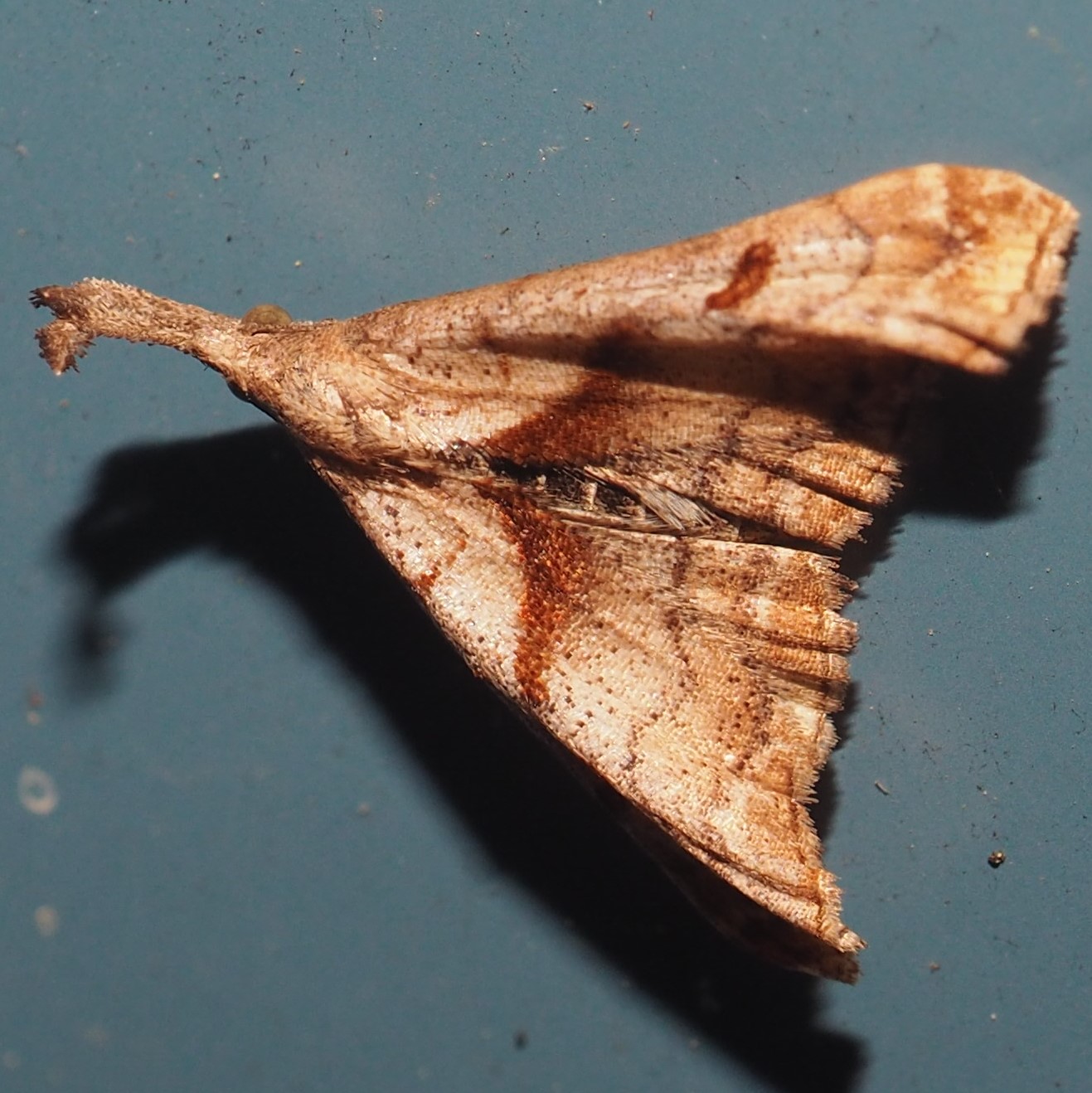
I think it's time for the stroll through the flowers, don't you? There weren't so many, but let's see what we can find. The Celandine Poppy is down to one flower per plant, and is getting loaded with seed pods. The Baptisia still has its gorgeous blue flowers. It will be setting pods very soon. The Wild Rose/Blackberry's berries are still green but getting larger. Near the Redbud, the Wild Grapes are growing.


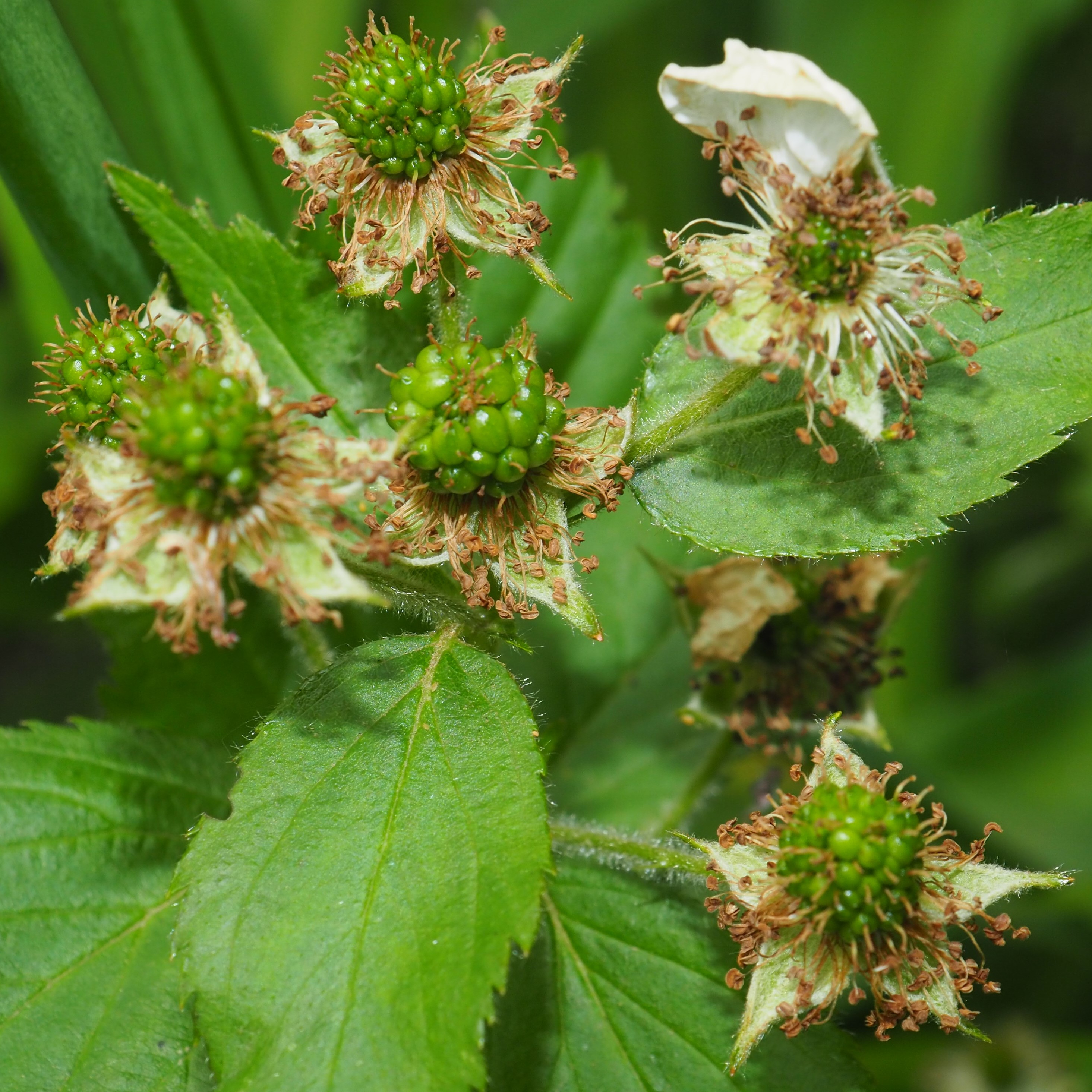
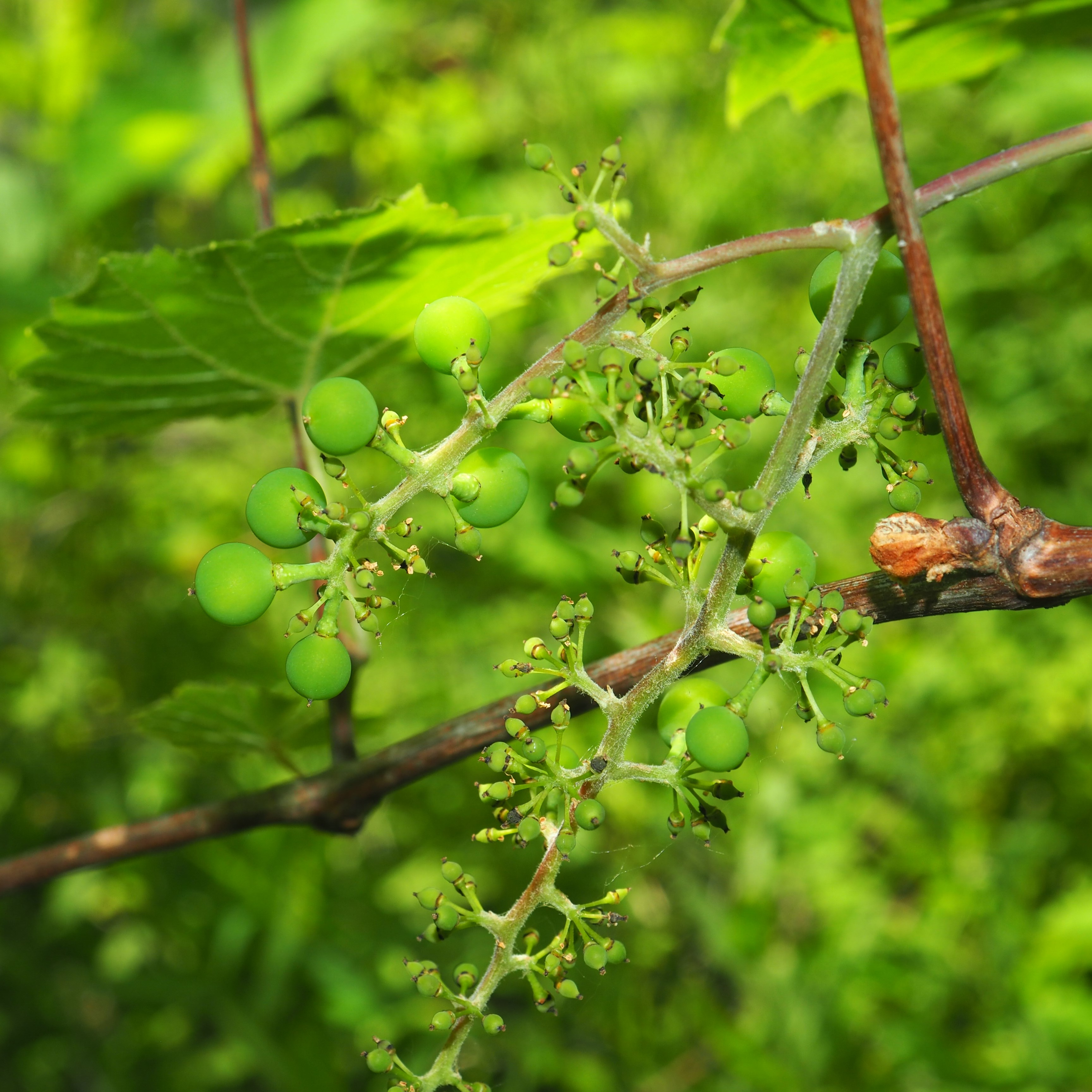
I think all the mauve Dame's Rocket is gone, but there was a handful of White when I was out looking for Weevils. They were still mating on the bare stems last week but I didn't see any on this plant this week. Second here is a romantic picture of Dame's Rocket and Goutweed. I showed you up front the Fleabane with its bluish flowers. You have to look at them very hard before you see this with your natural eyes.



The Foxglove is regal in white, and even the lowly Goutweed is attractive, especially to the tiniest creatures. Can you spot the Carpet Beetle? The Hawkweed is approaching peak.

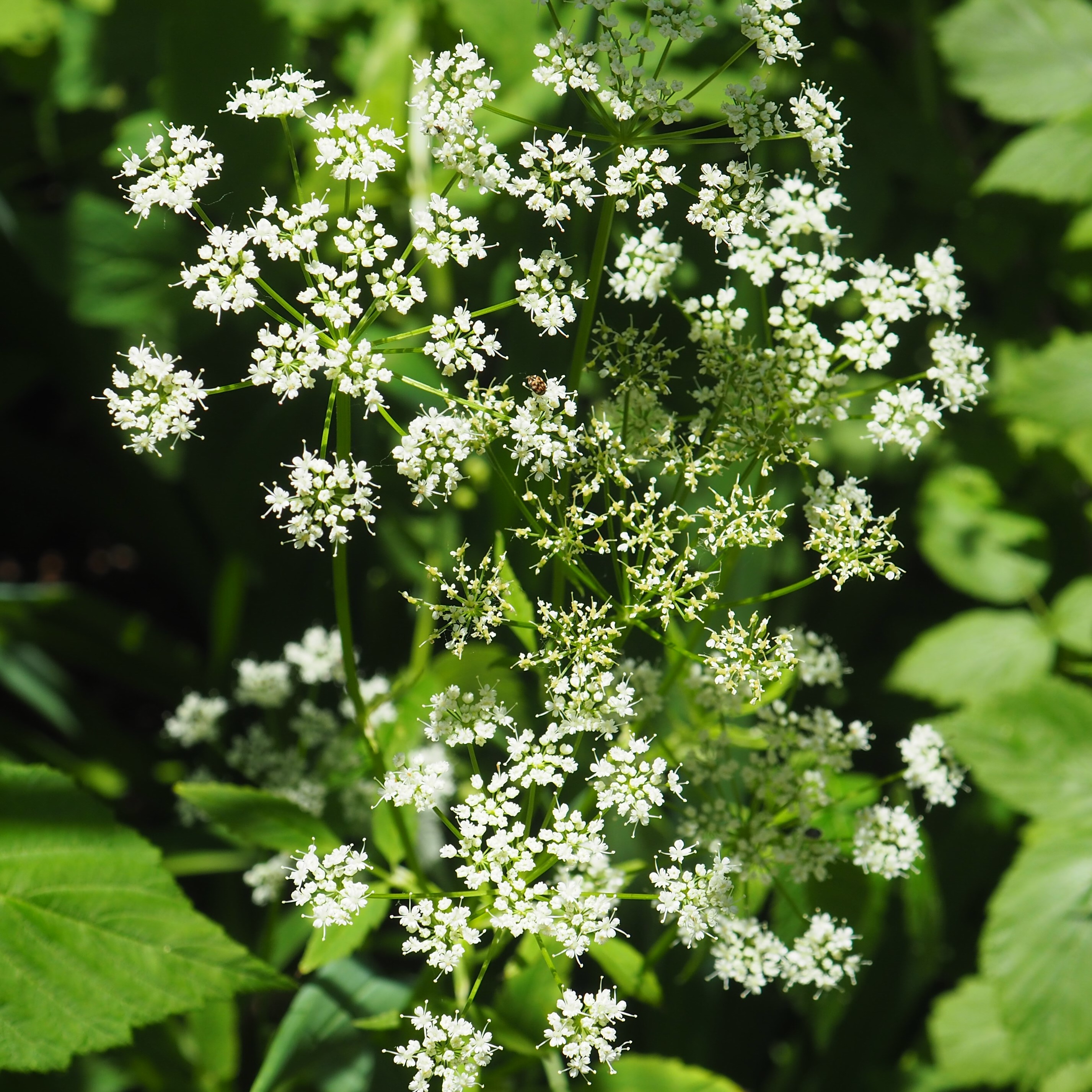
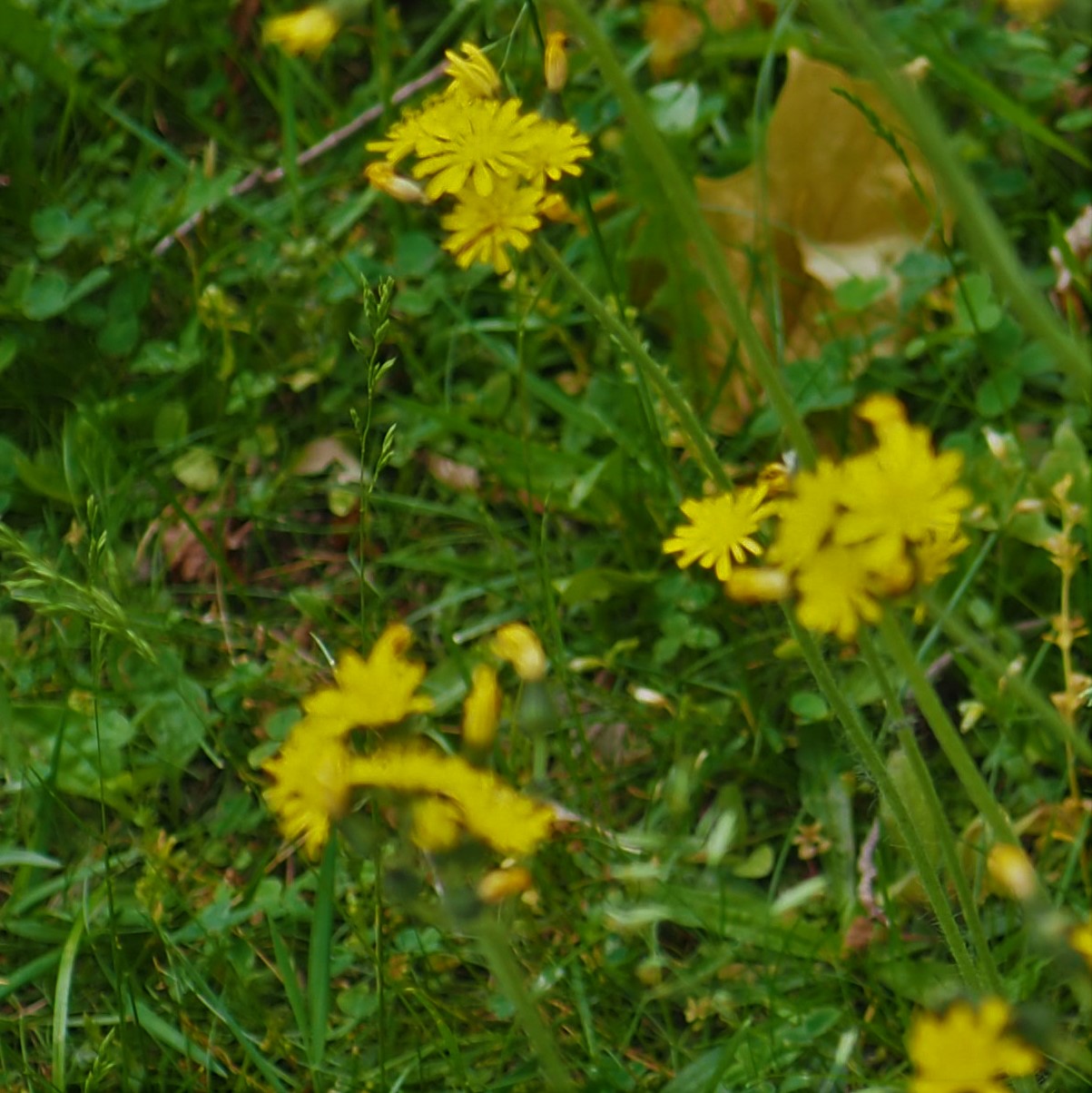
All right, Spider time! Here we have two Common House Spiders. The male is on the left and is red. The female is the one we usually see, here on the right. They seem to be considering mating. Maybe the female needs to deal with her prey first!
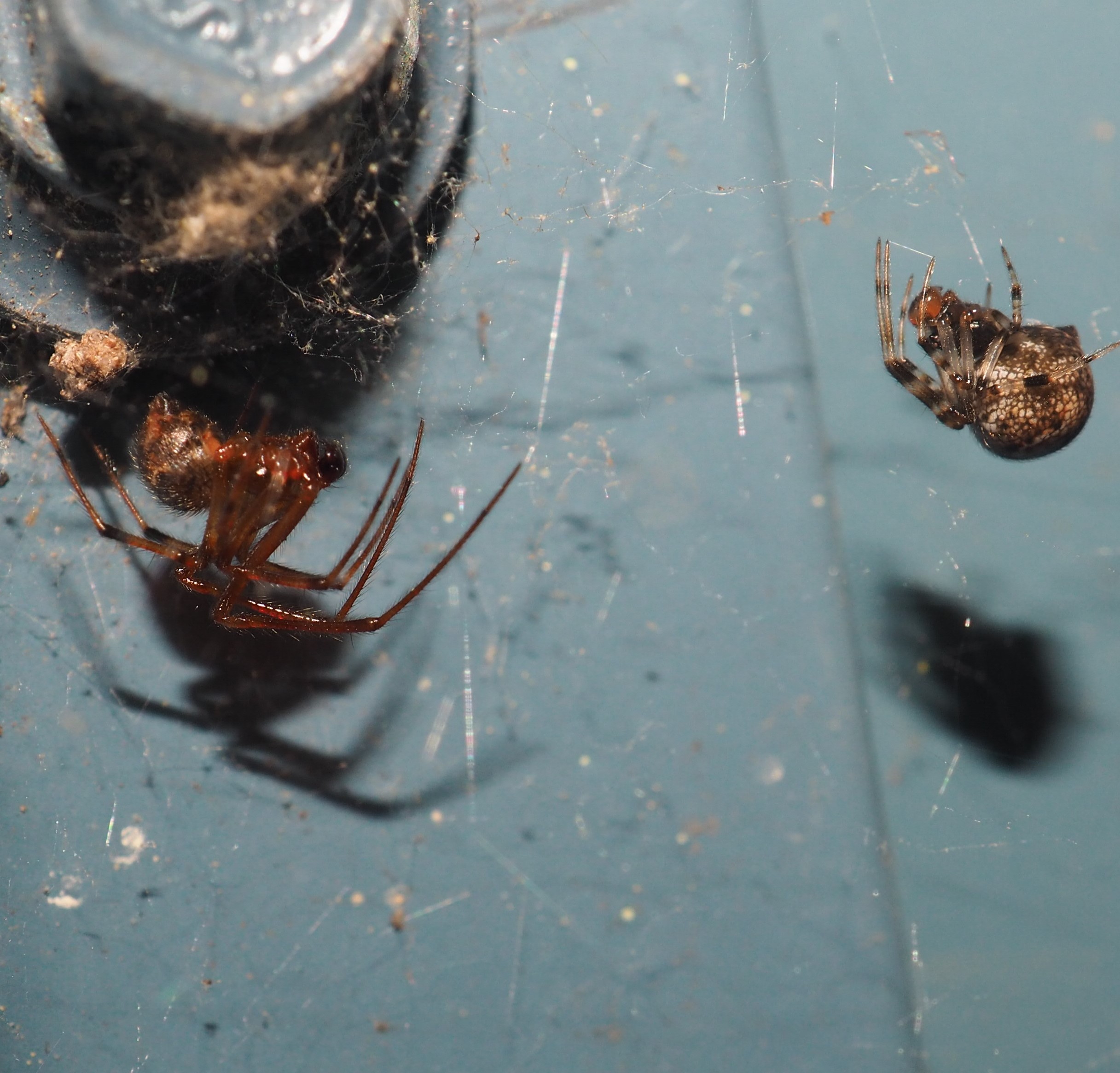
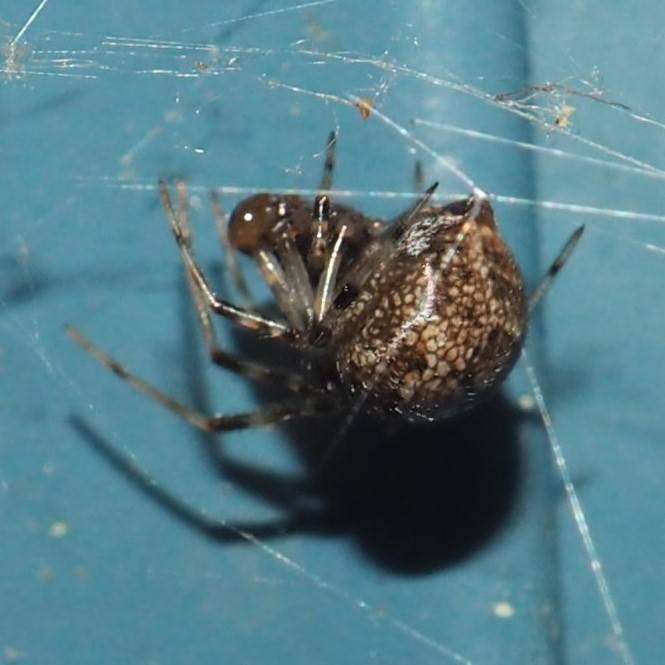
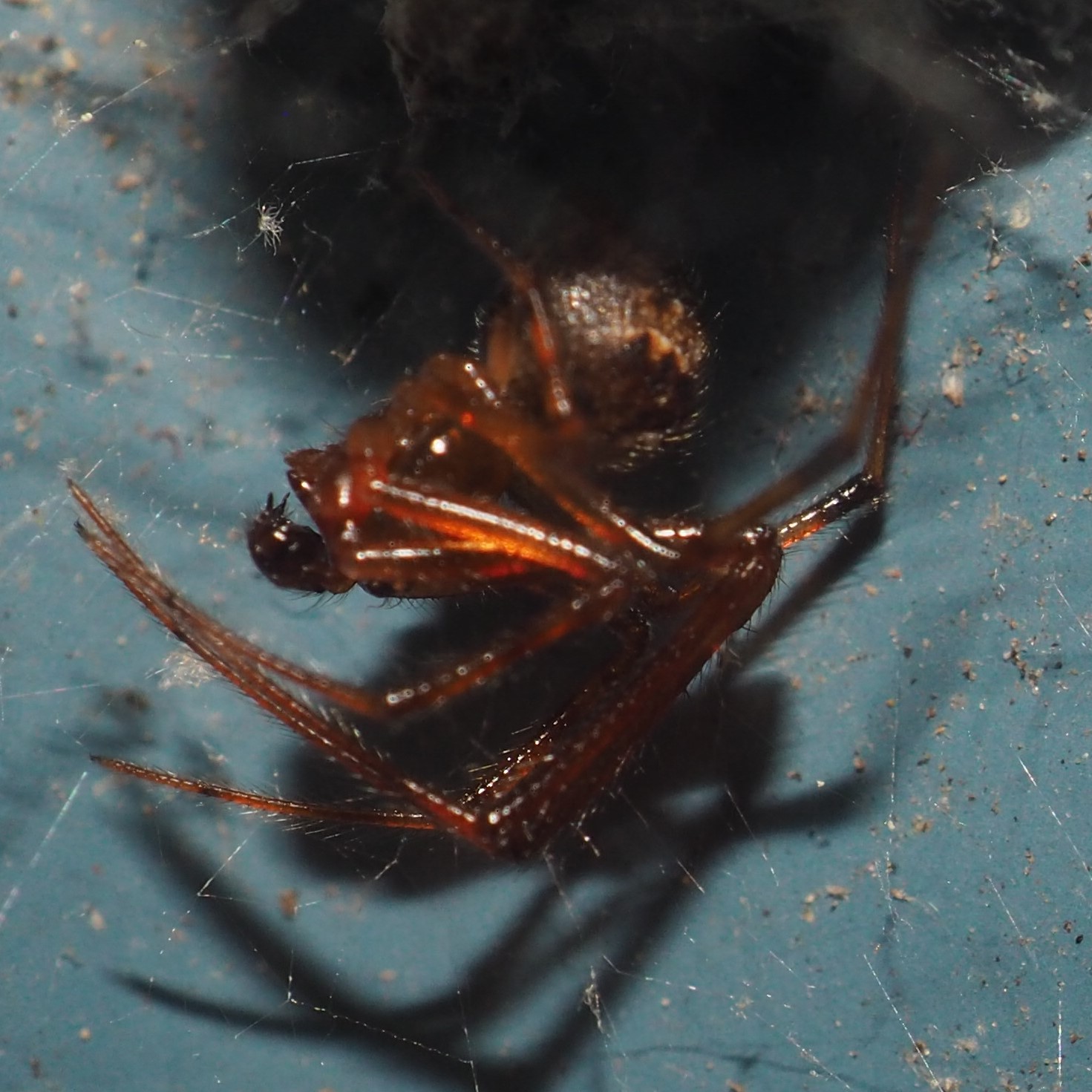
Here are some more Cobweb Spiders. They, like the Ants, seem to be extremely hungry.
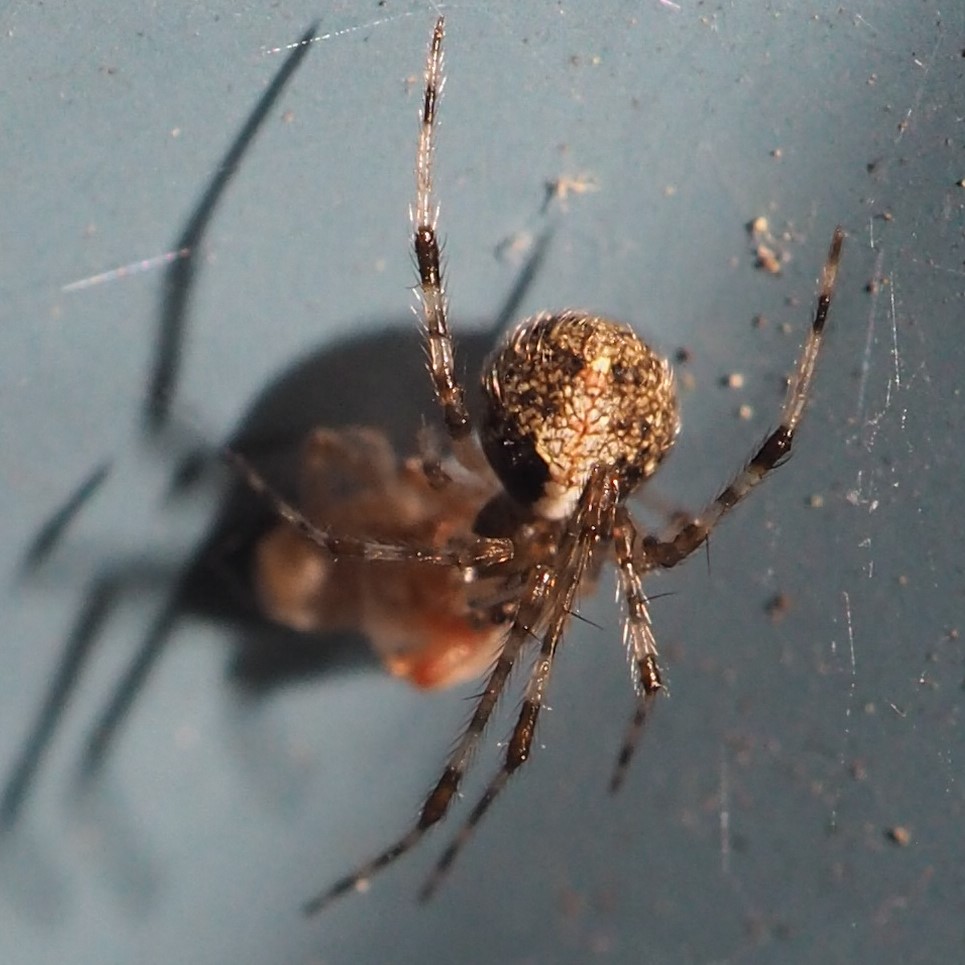
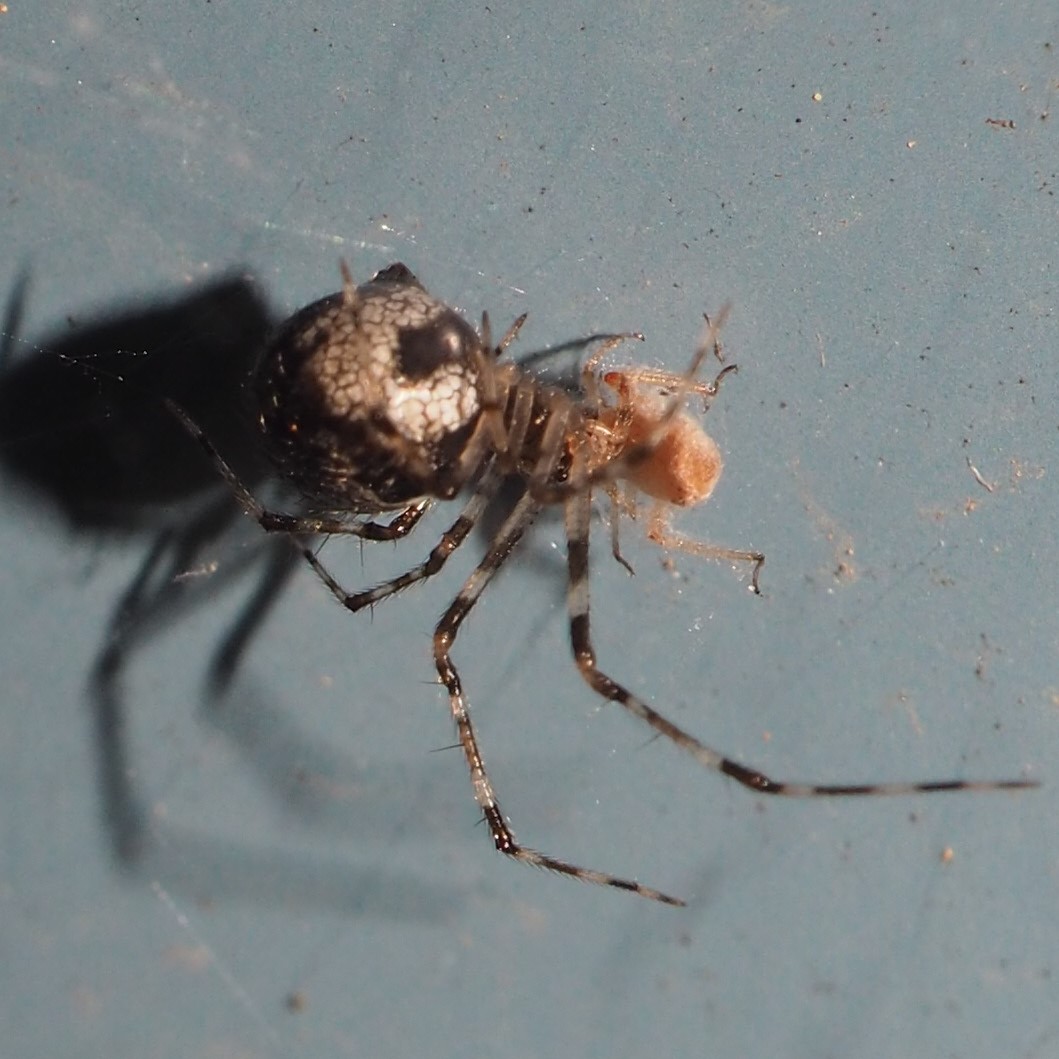
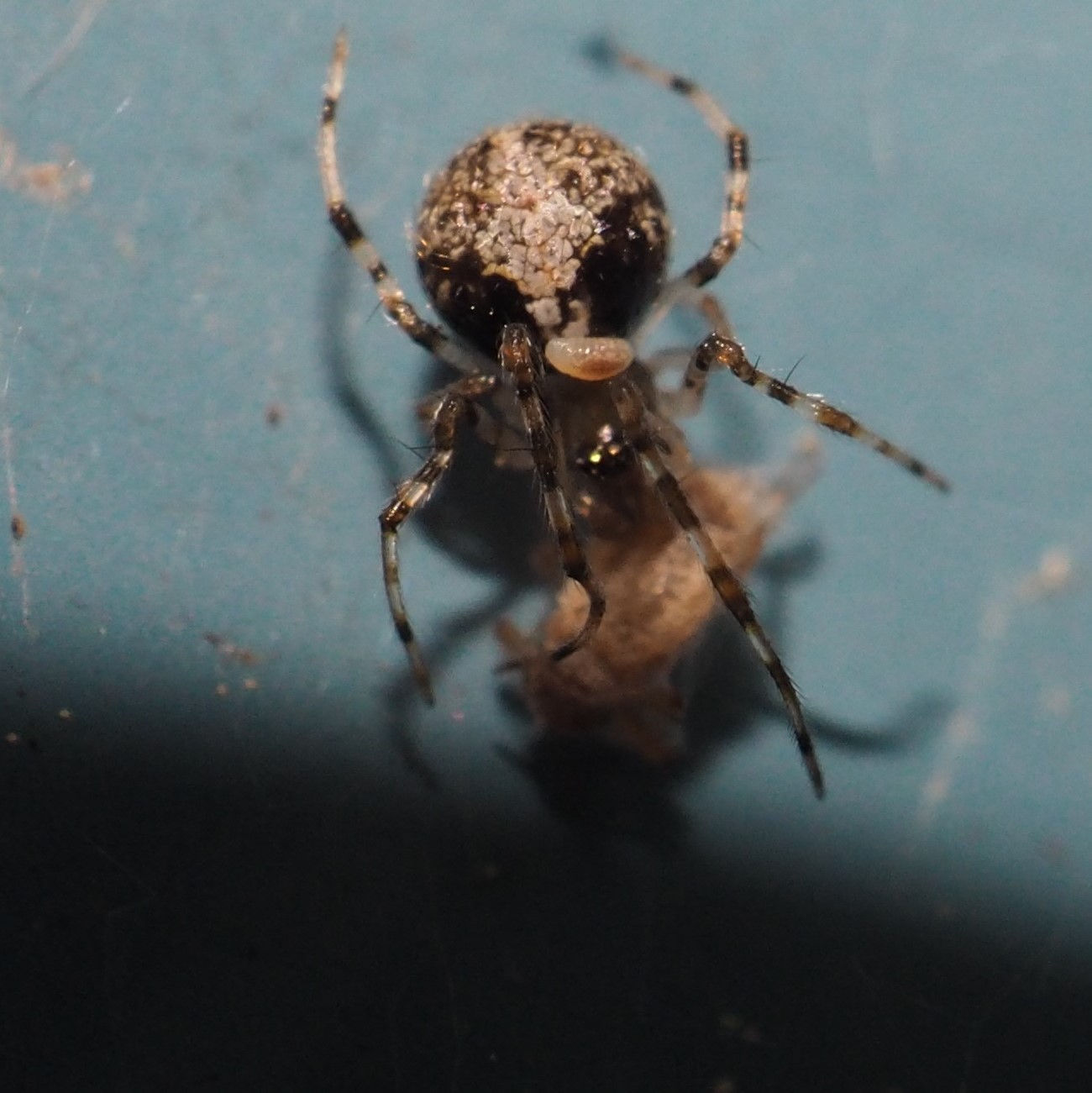
Here is a Grammonota genus Spider with a lovely intricate ornamentation. I usually associate them with winter!
Second is a Hammer-faced Jumping Spider. Matt Claghorn identified it after seeing it in last week's blog! Third is probably the Common Candy-striped Spider, Enoplognatha ovata.

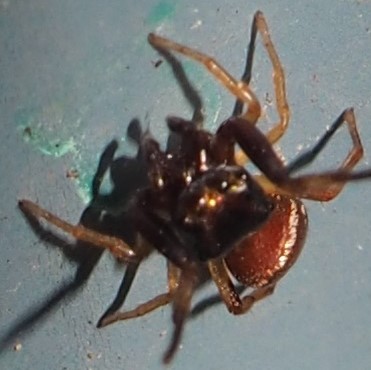
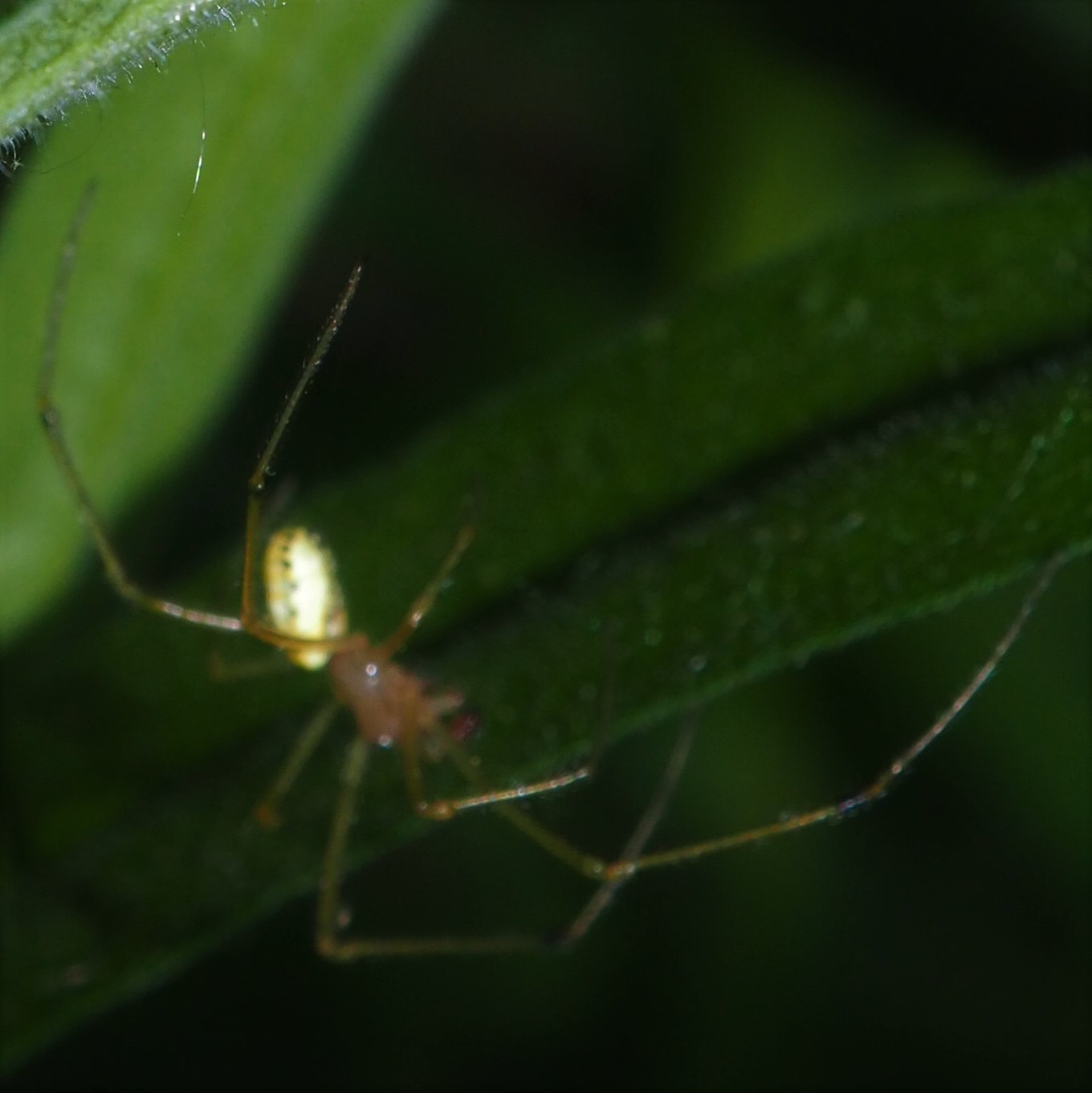
Here are a couple more that I don't recognize. First, this lovely DARK purple one. Then another Cobwebber hiding under some plants. And that's about it for this week's spiders.
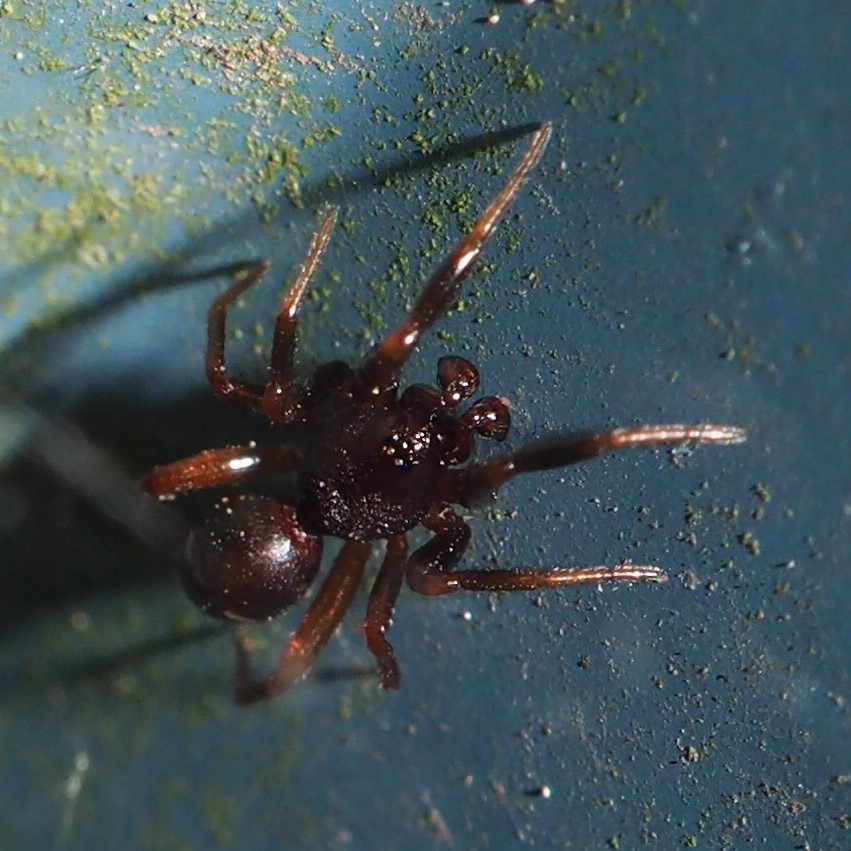
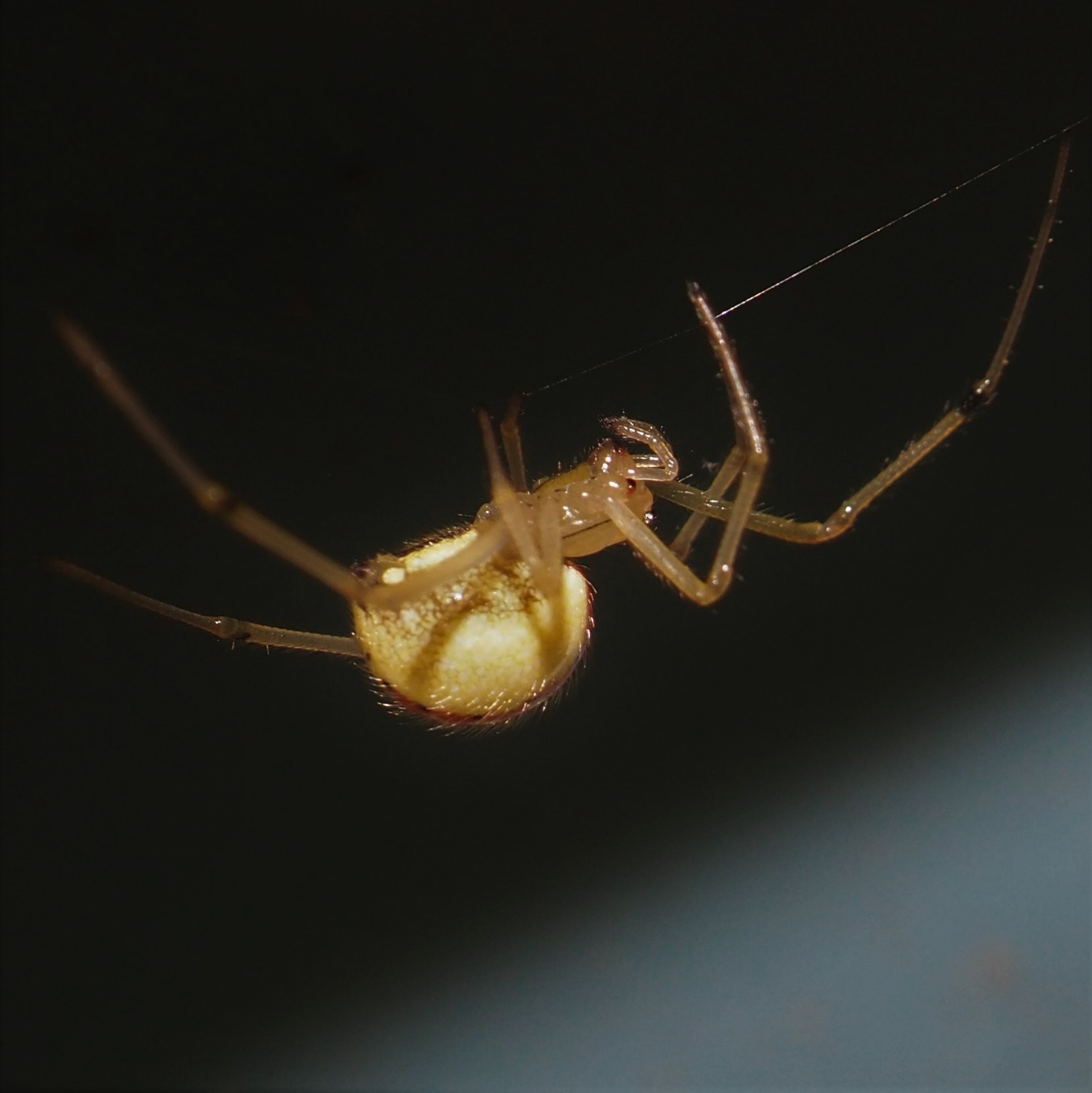
Oh - I do have a few Spider egg masses, I think.
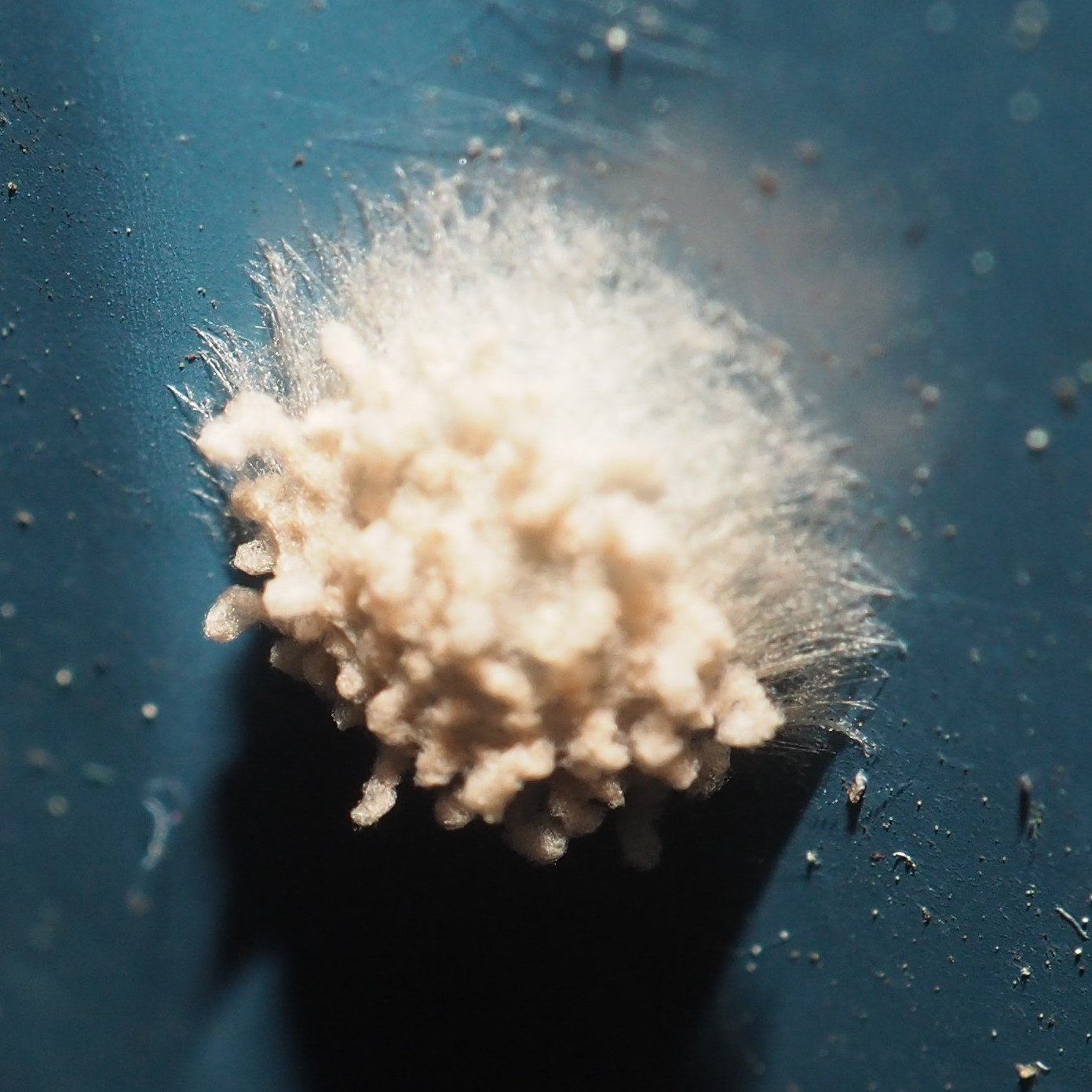
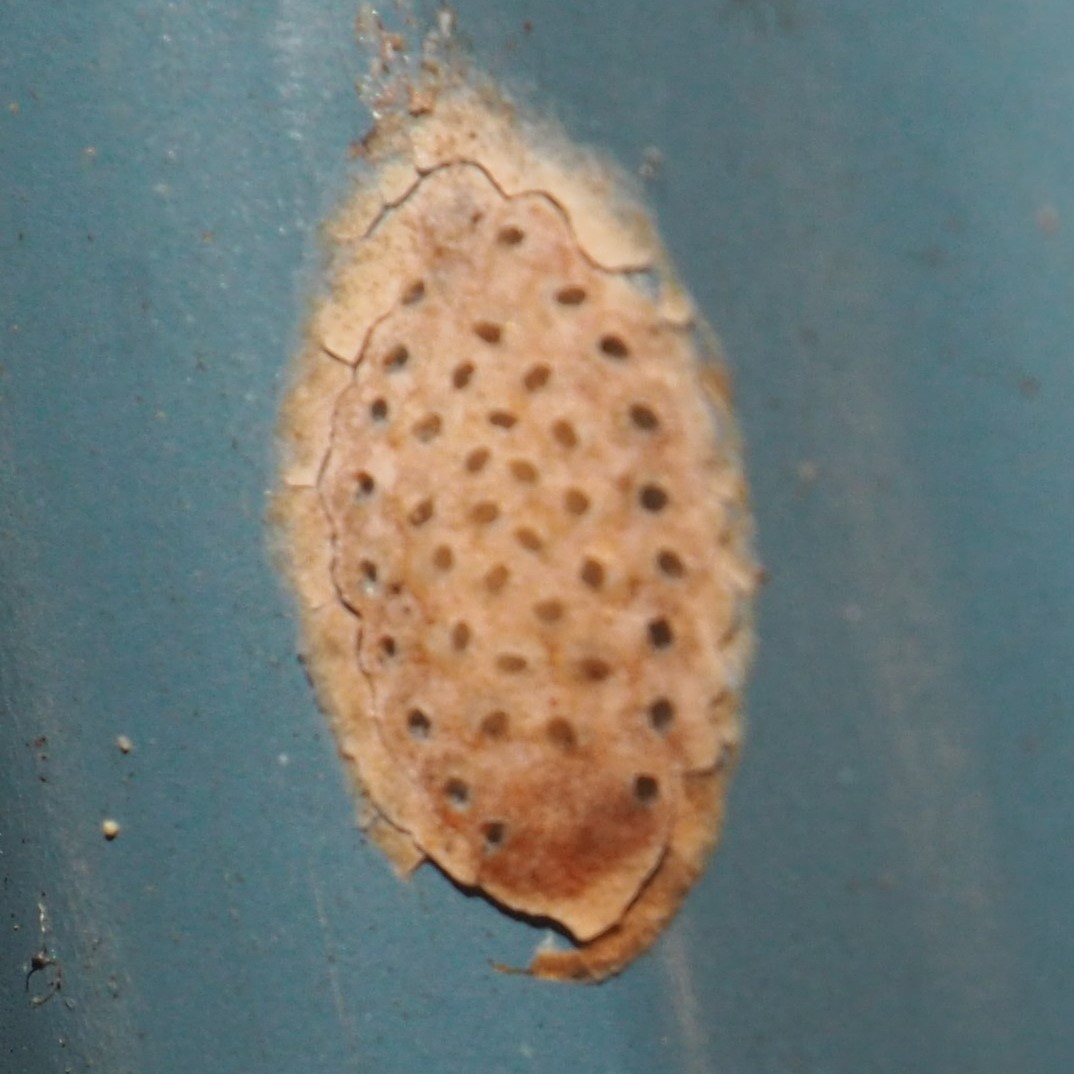
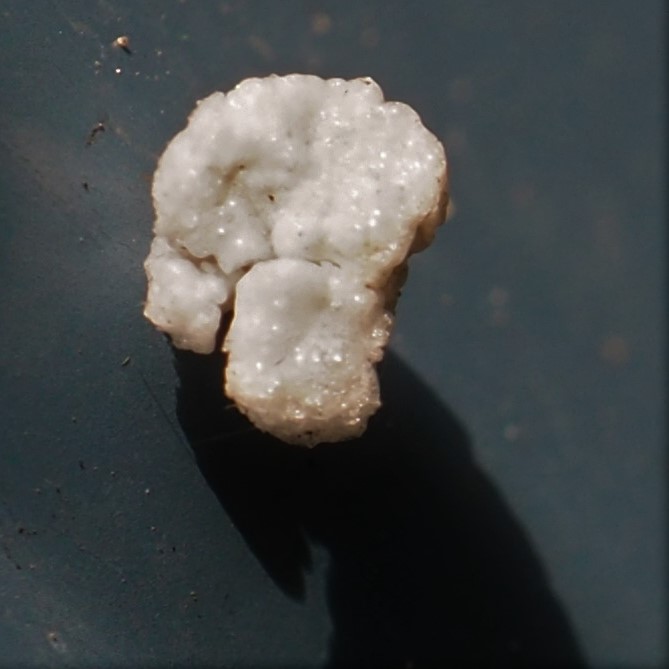
Just for fun, here are some color-morphed Spiders.
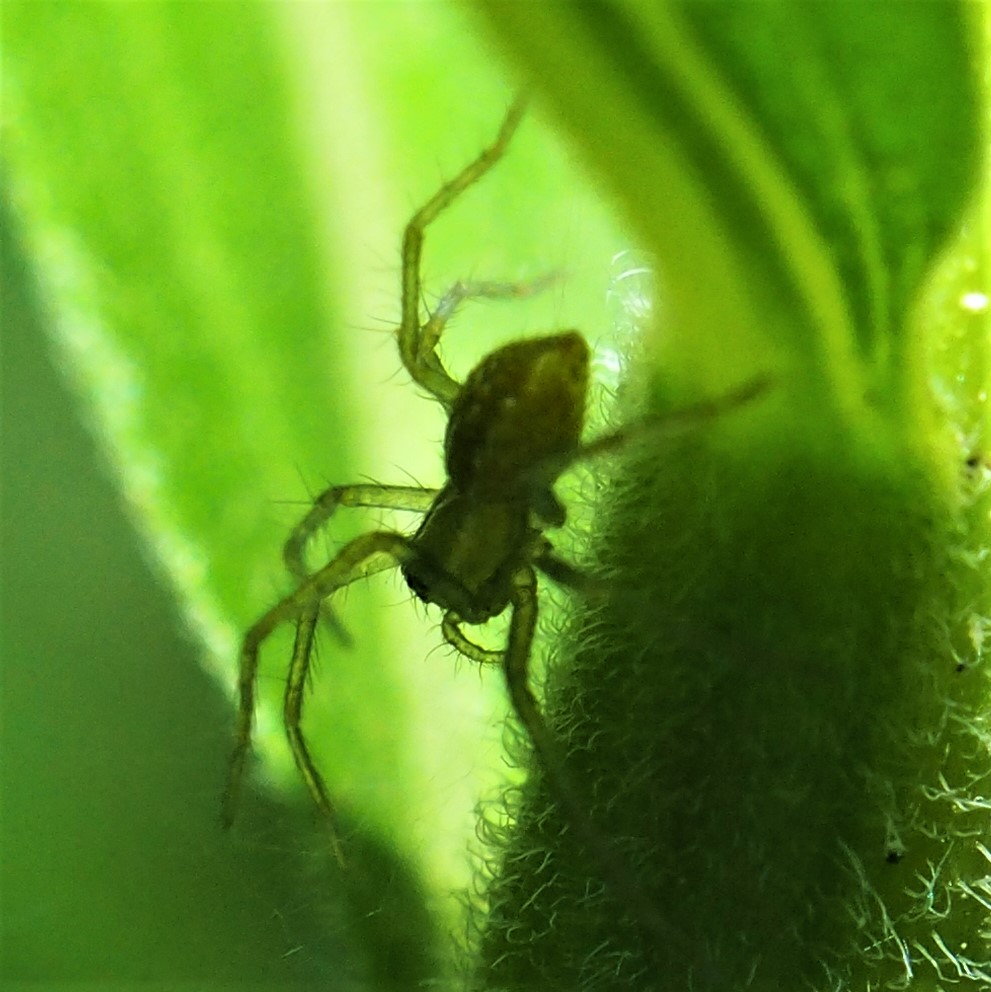

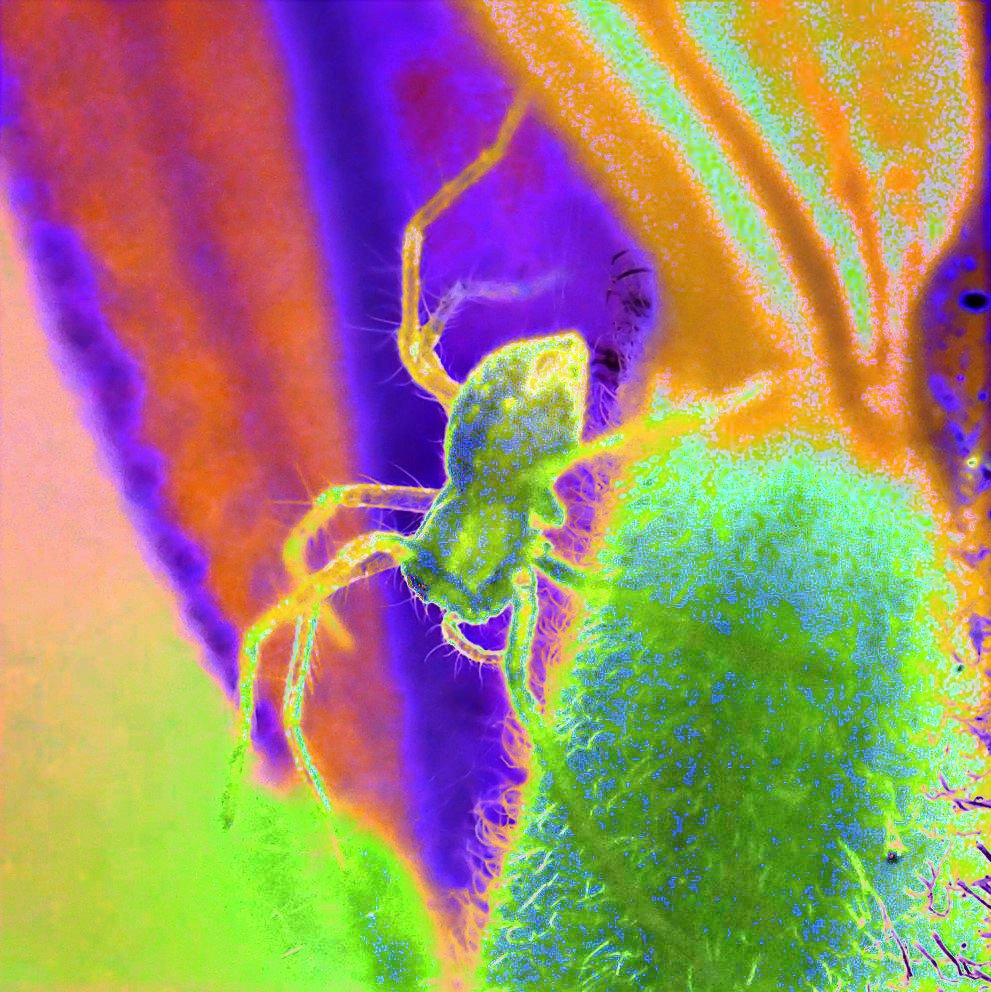
Here's something to think about. "How I want a drink, alcoholic of course, after the heavy chapters involving quantum mechanics!" What is its inner meaning?
Love, Martha
Back to June 6, 2021
Forward to June 20, 2021
Back to main menu
copyright Martha O'Kennon 2021





























































.jpg)










































.jpg)










































